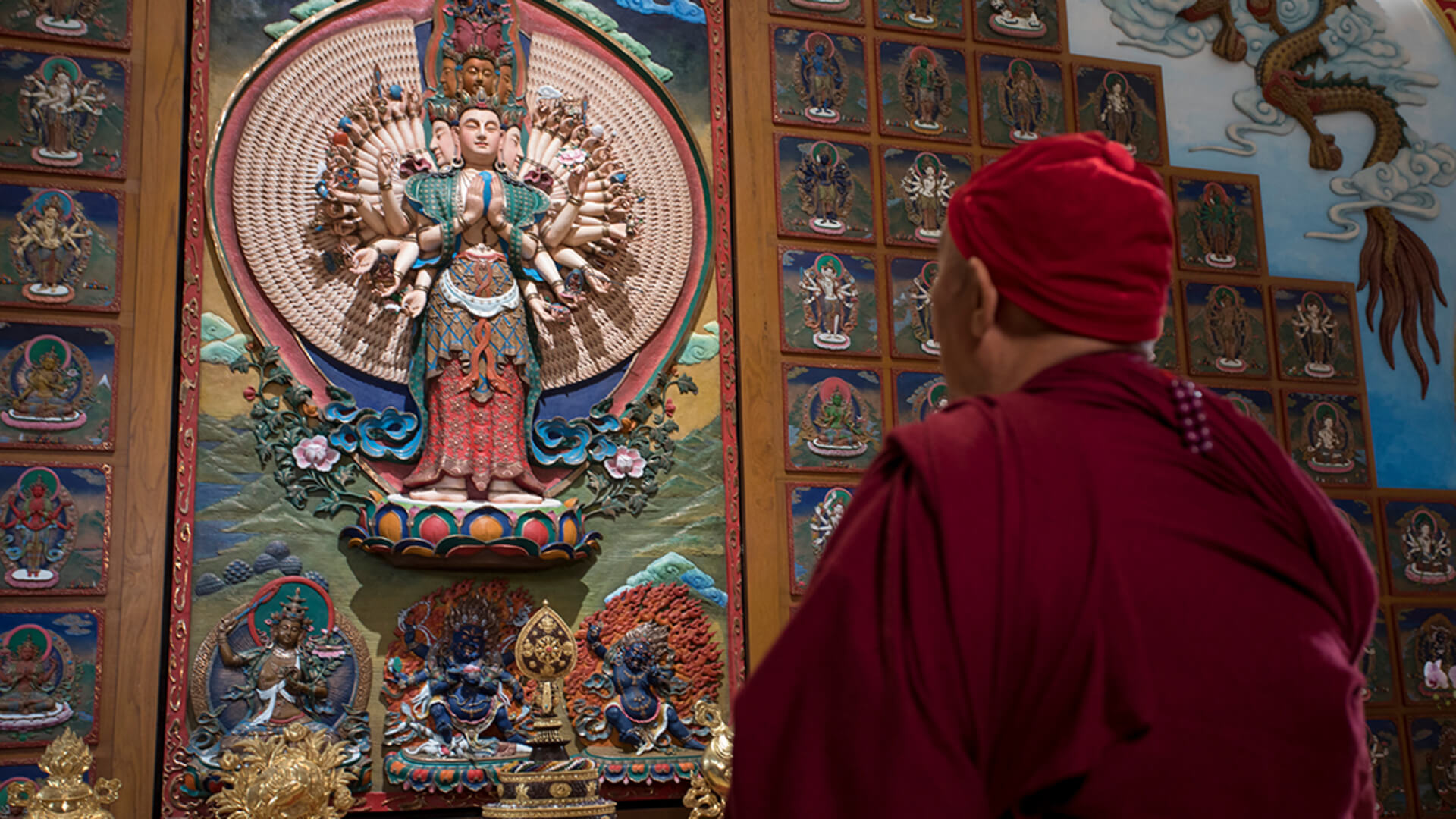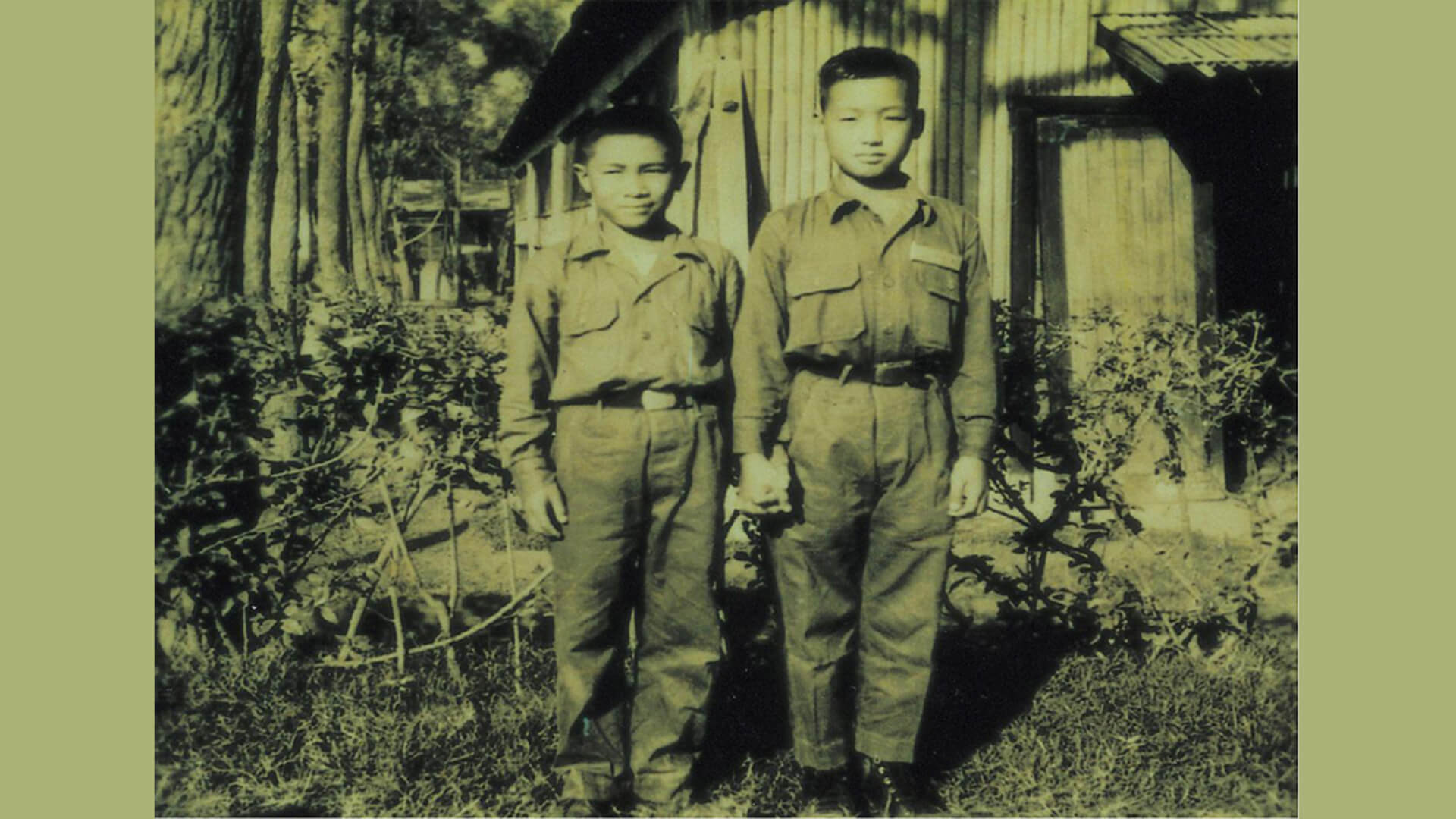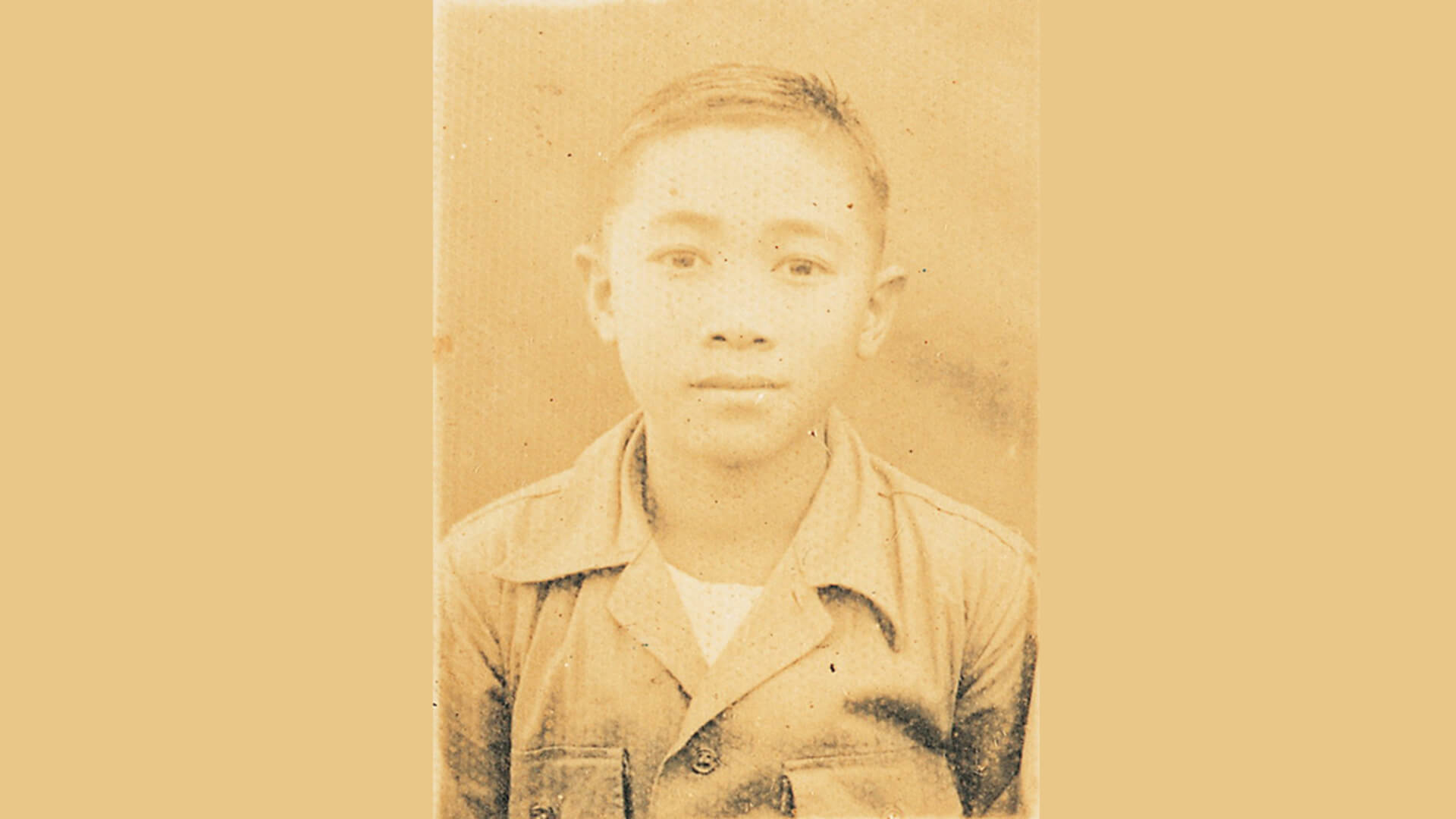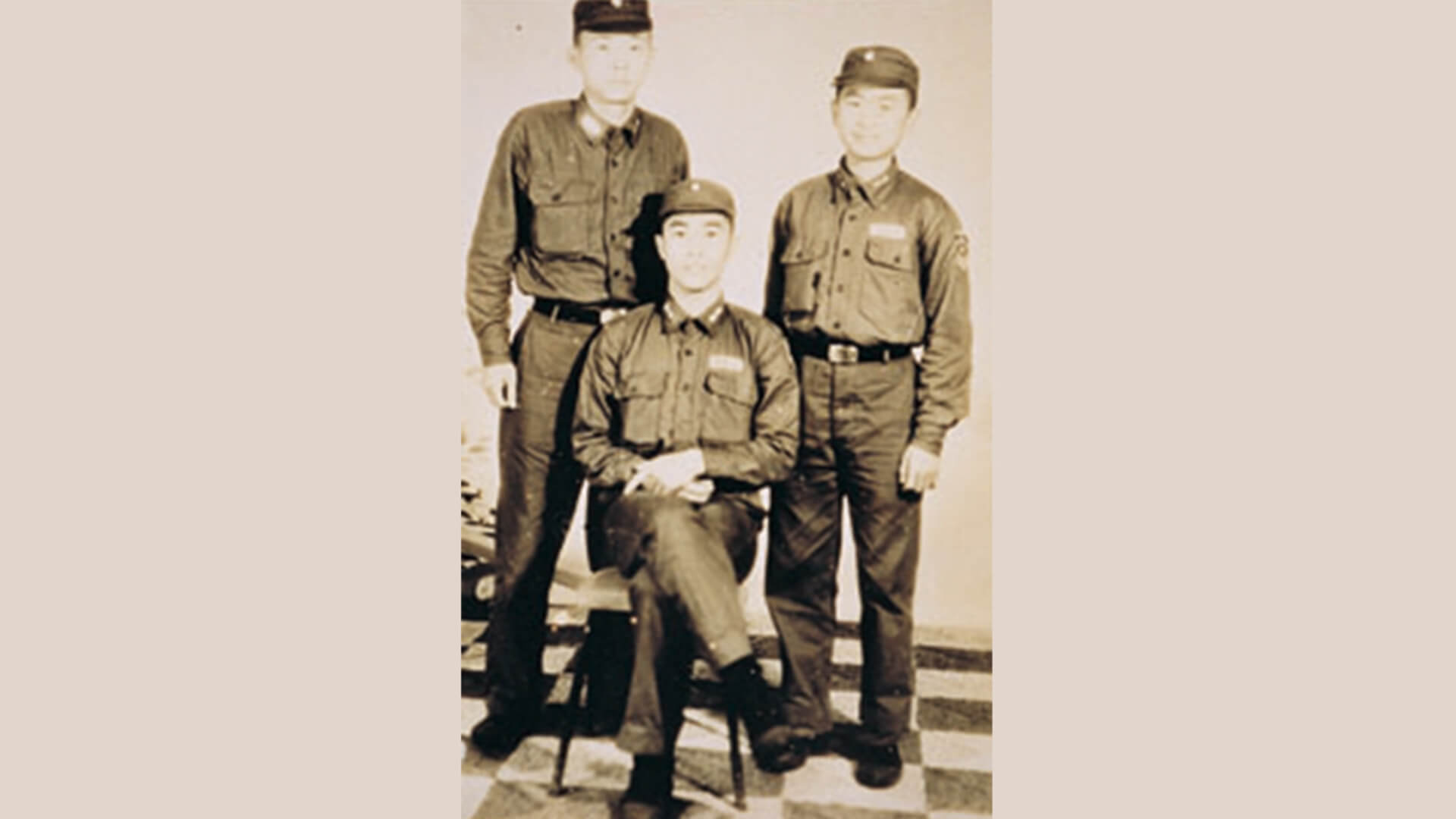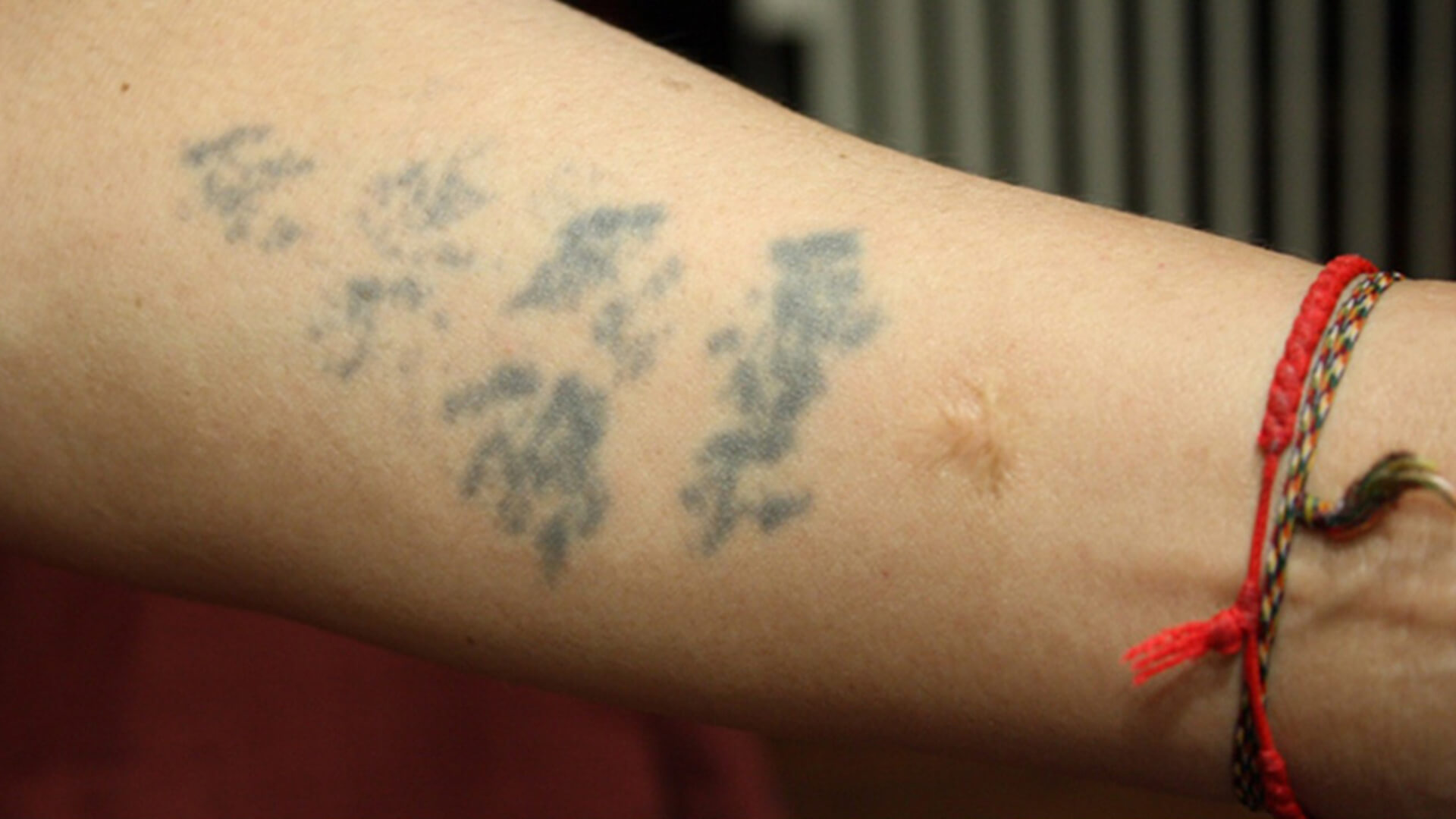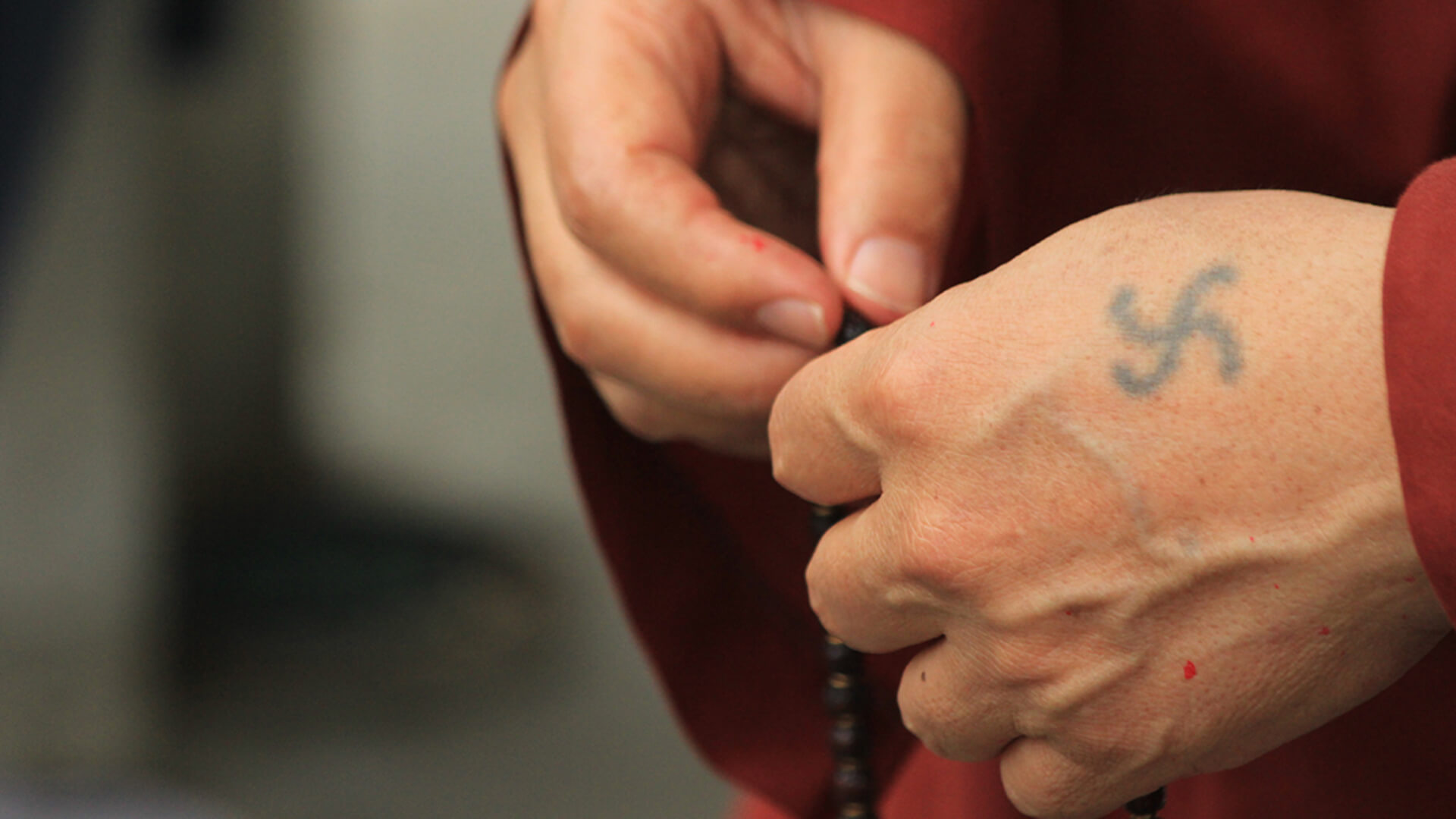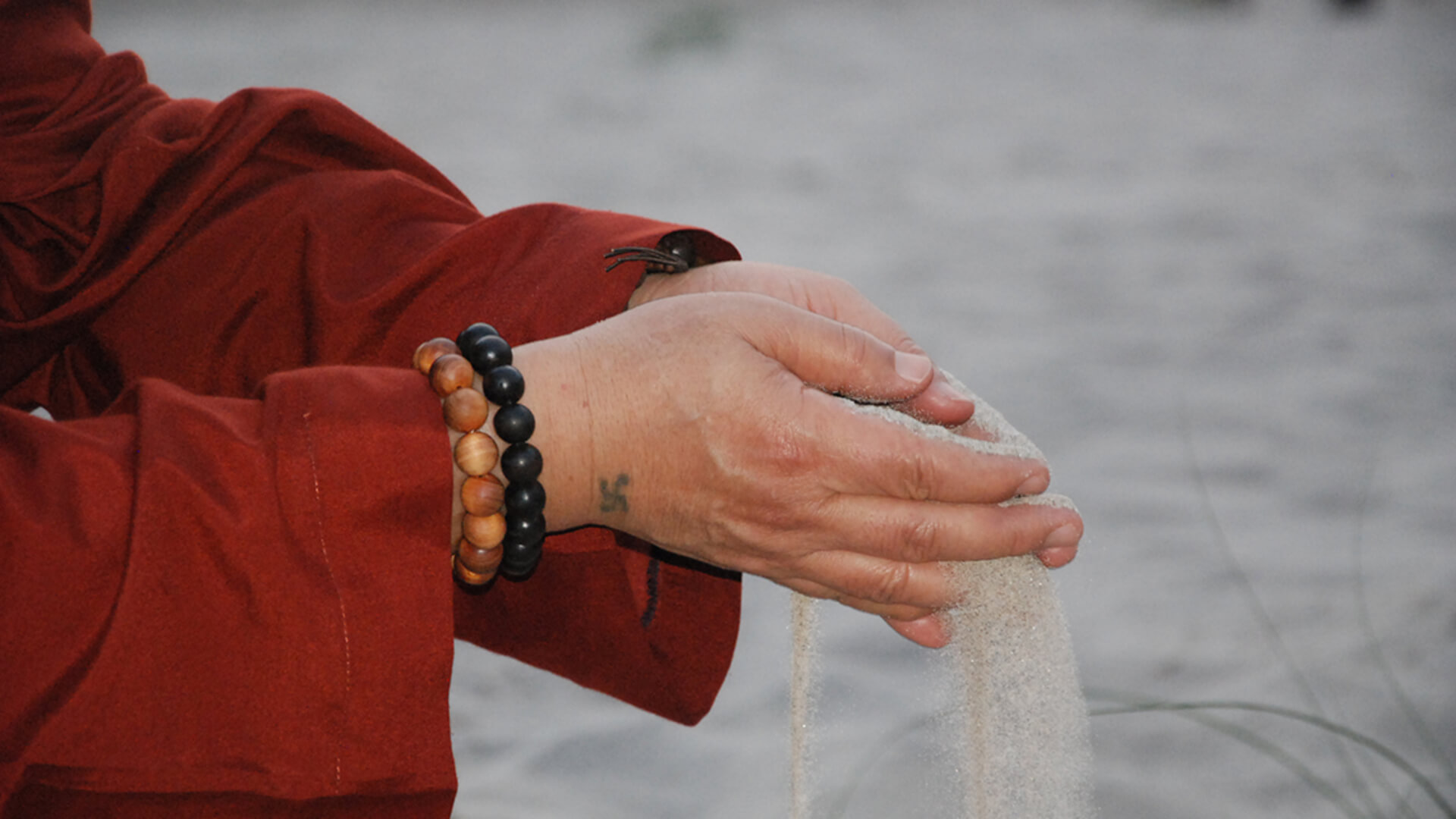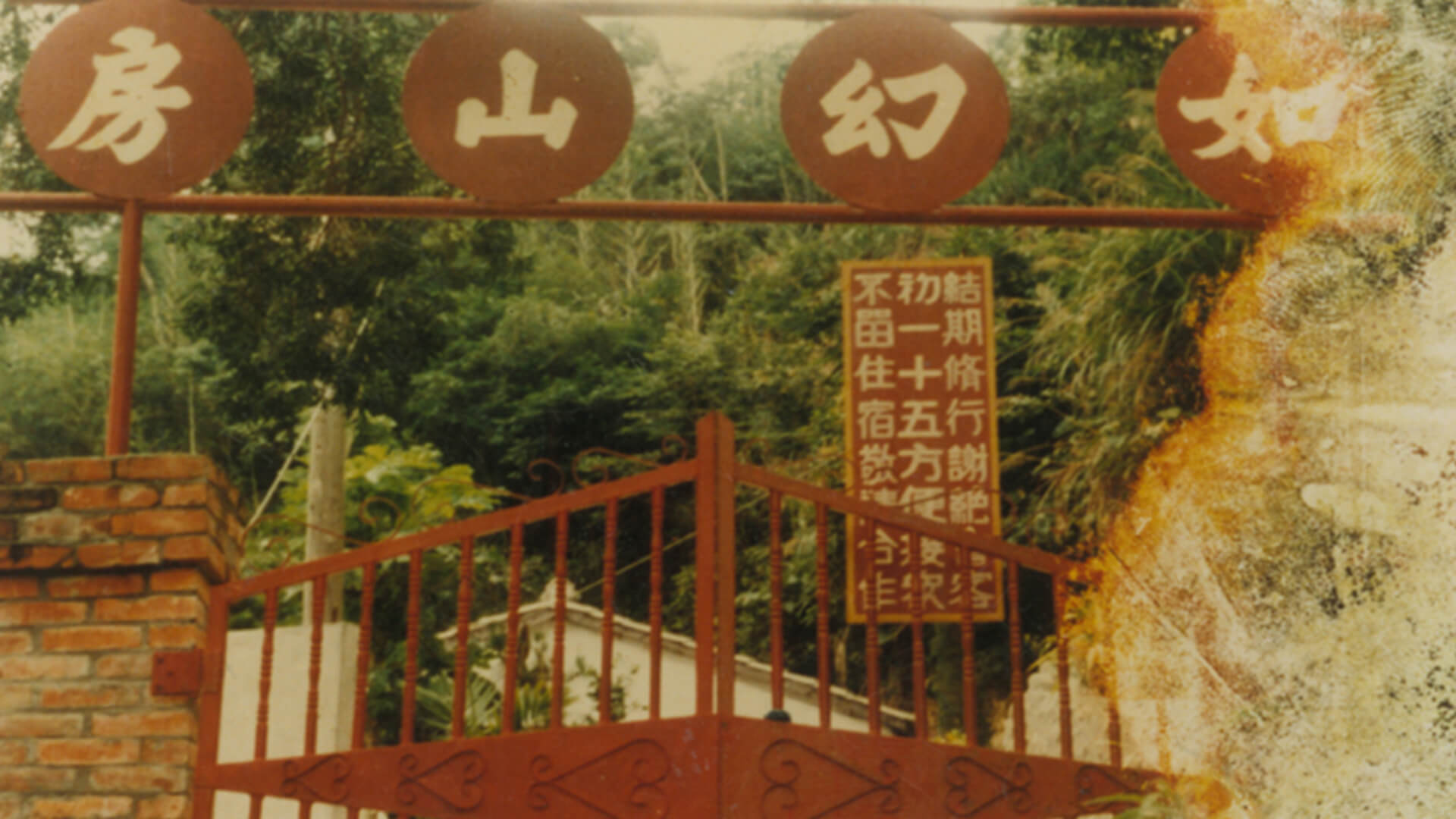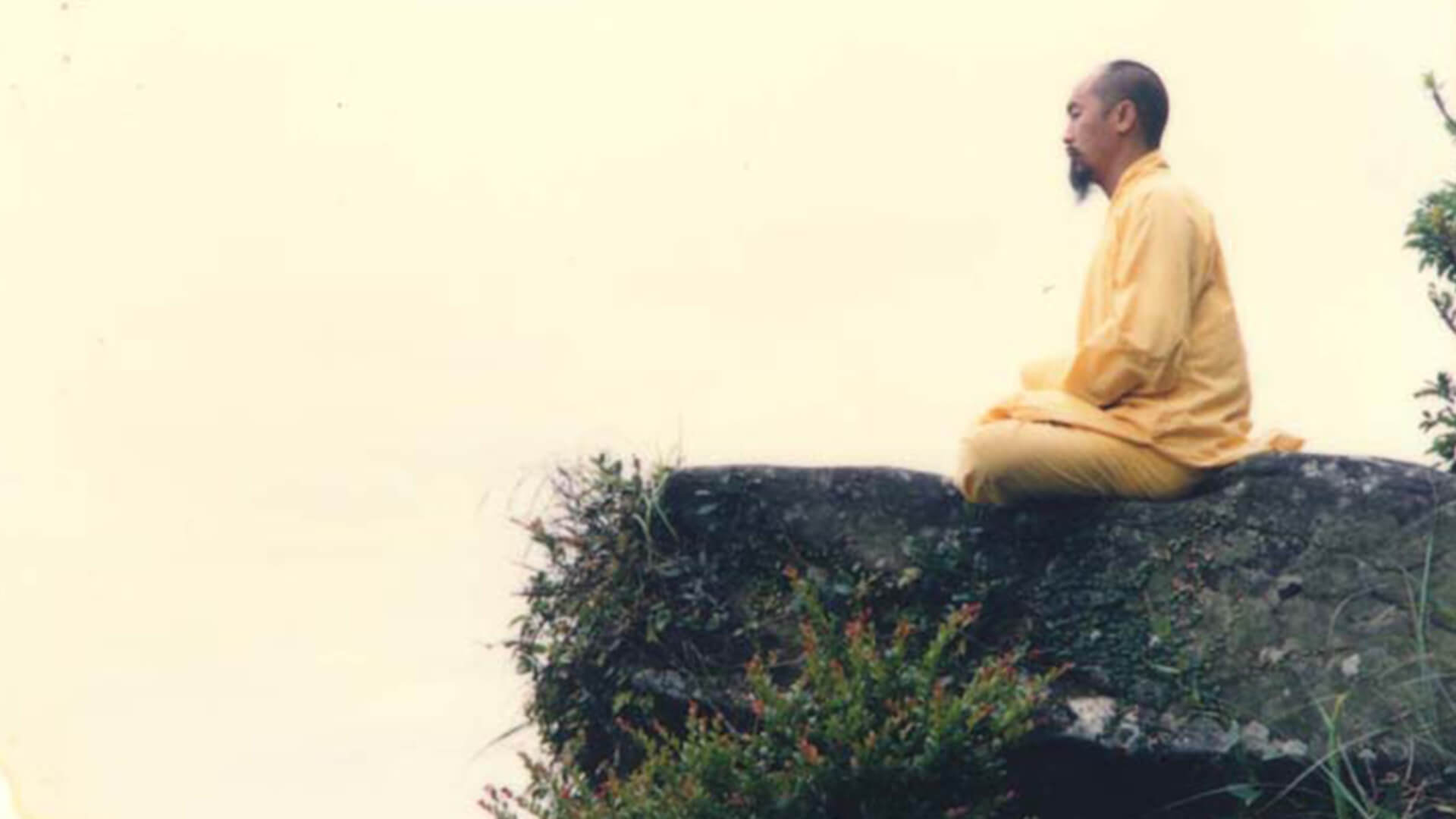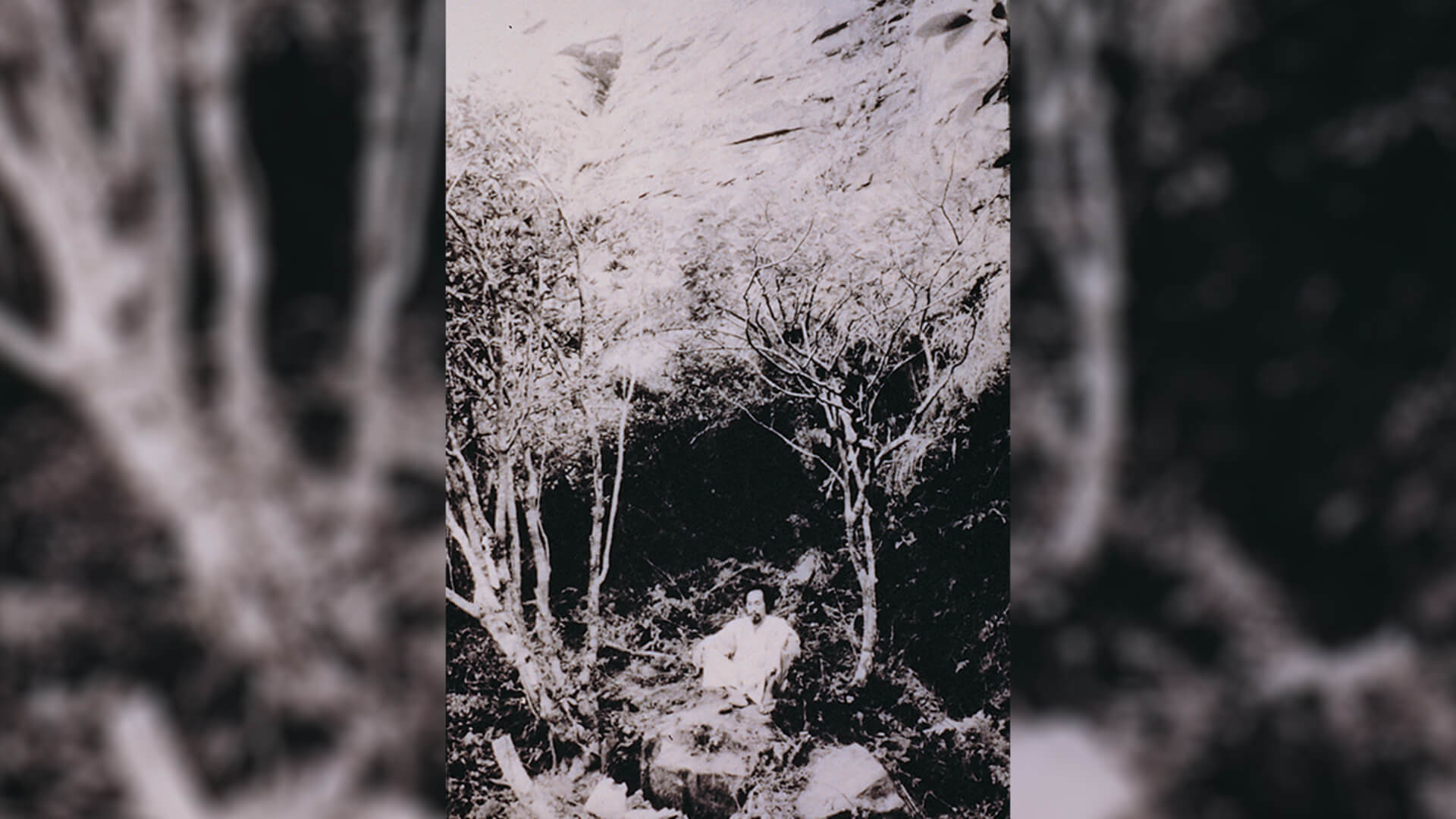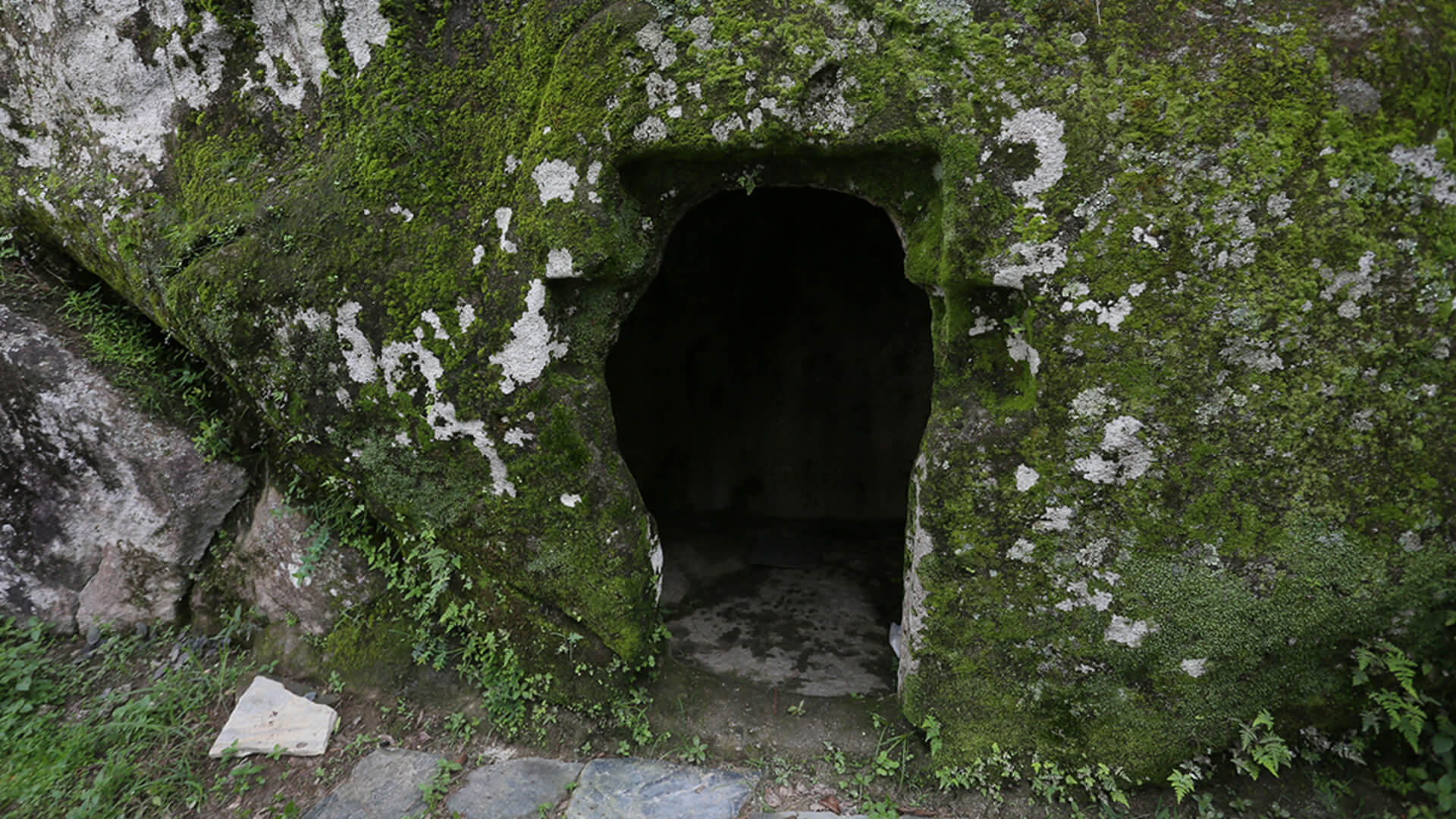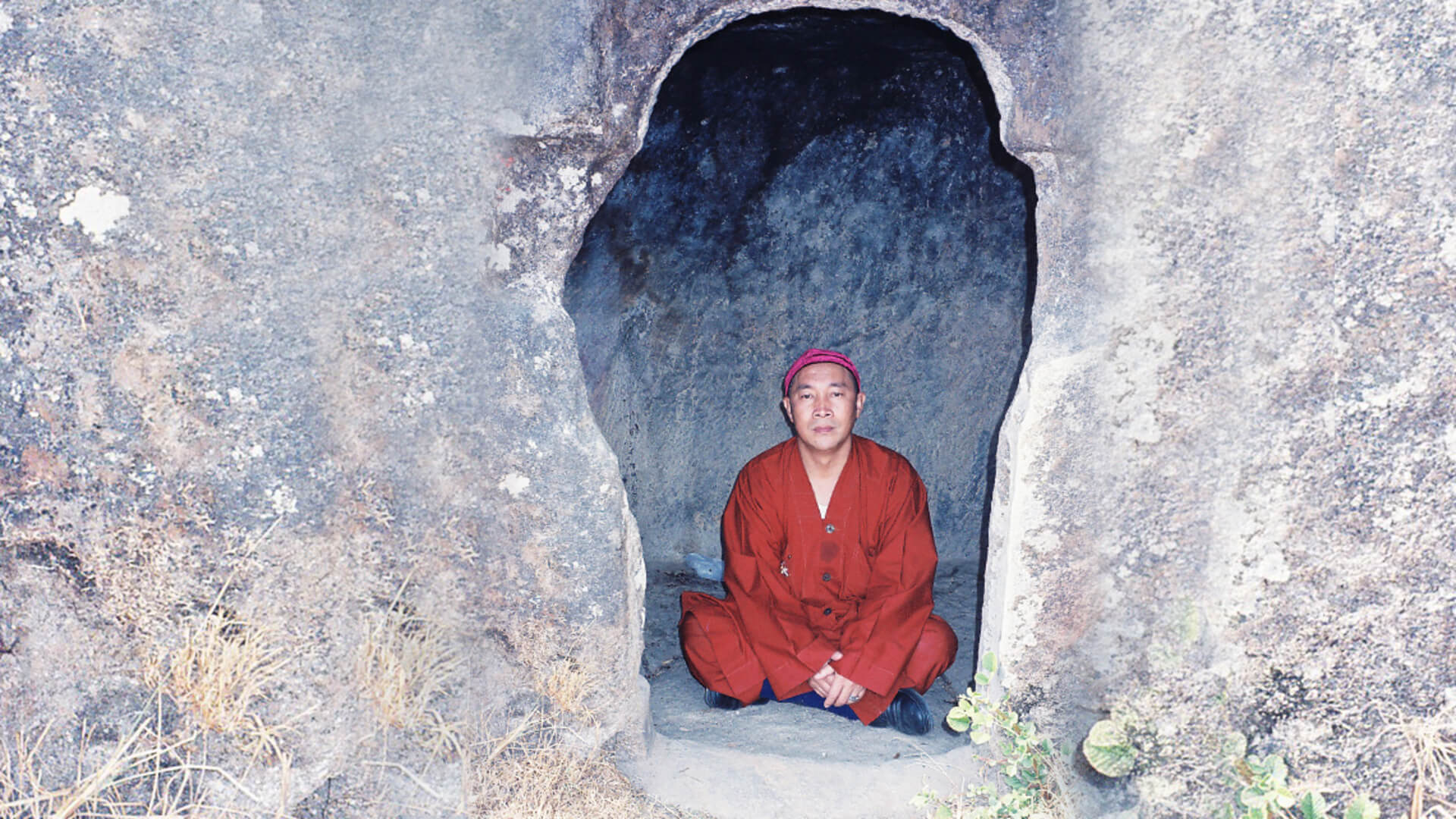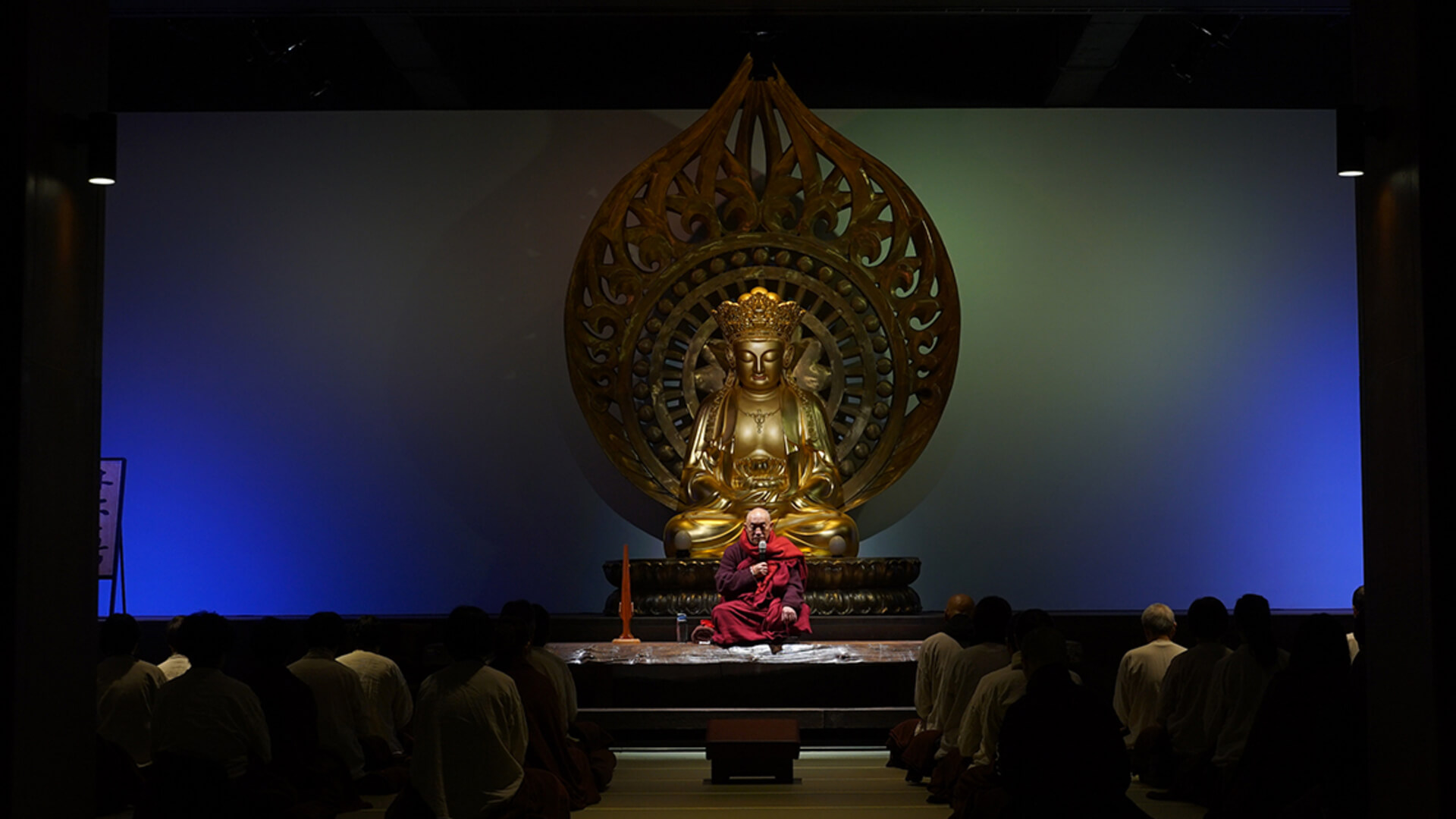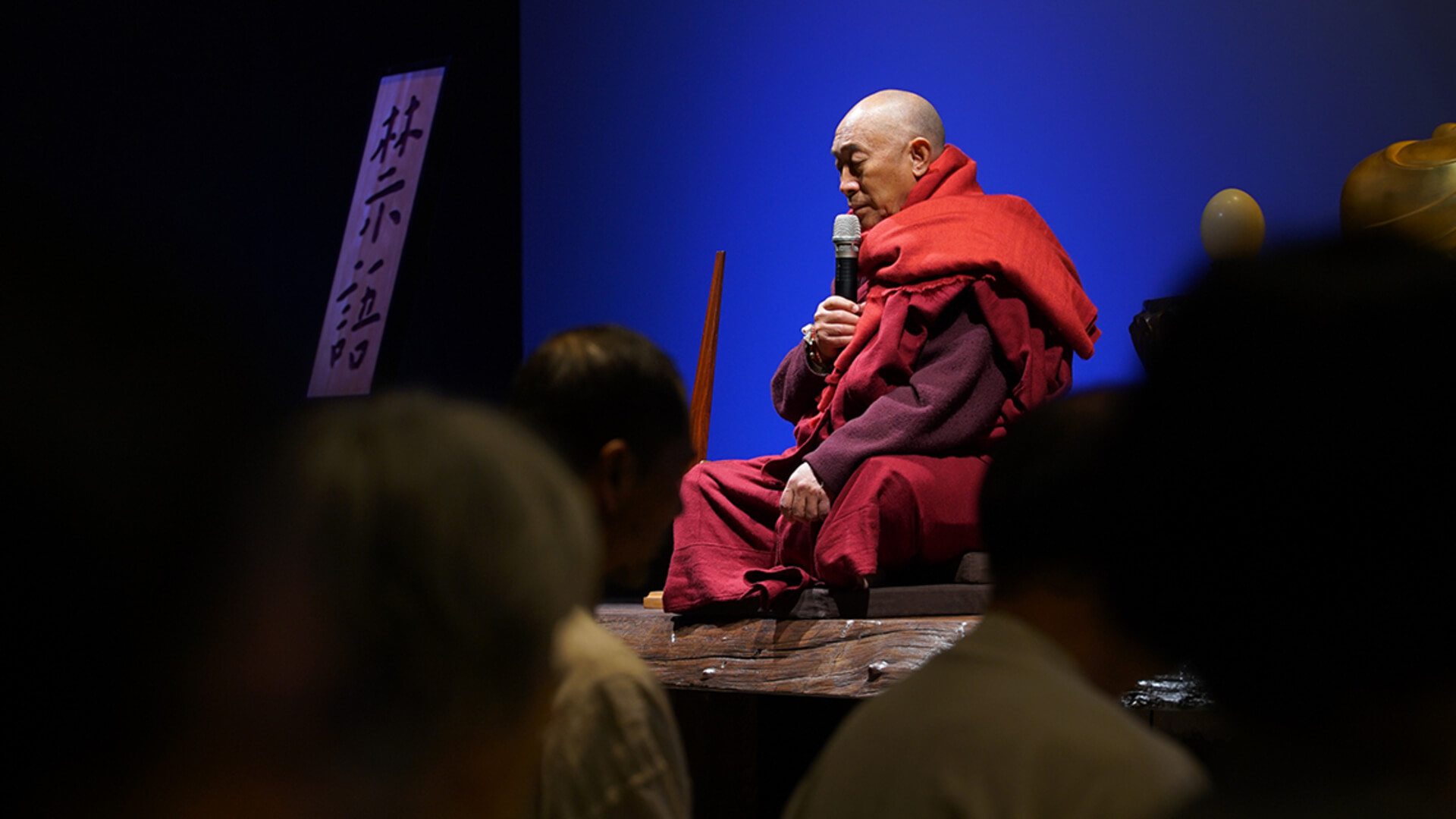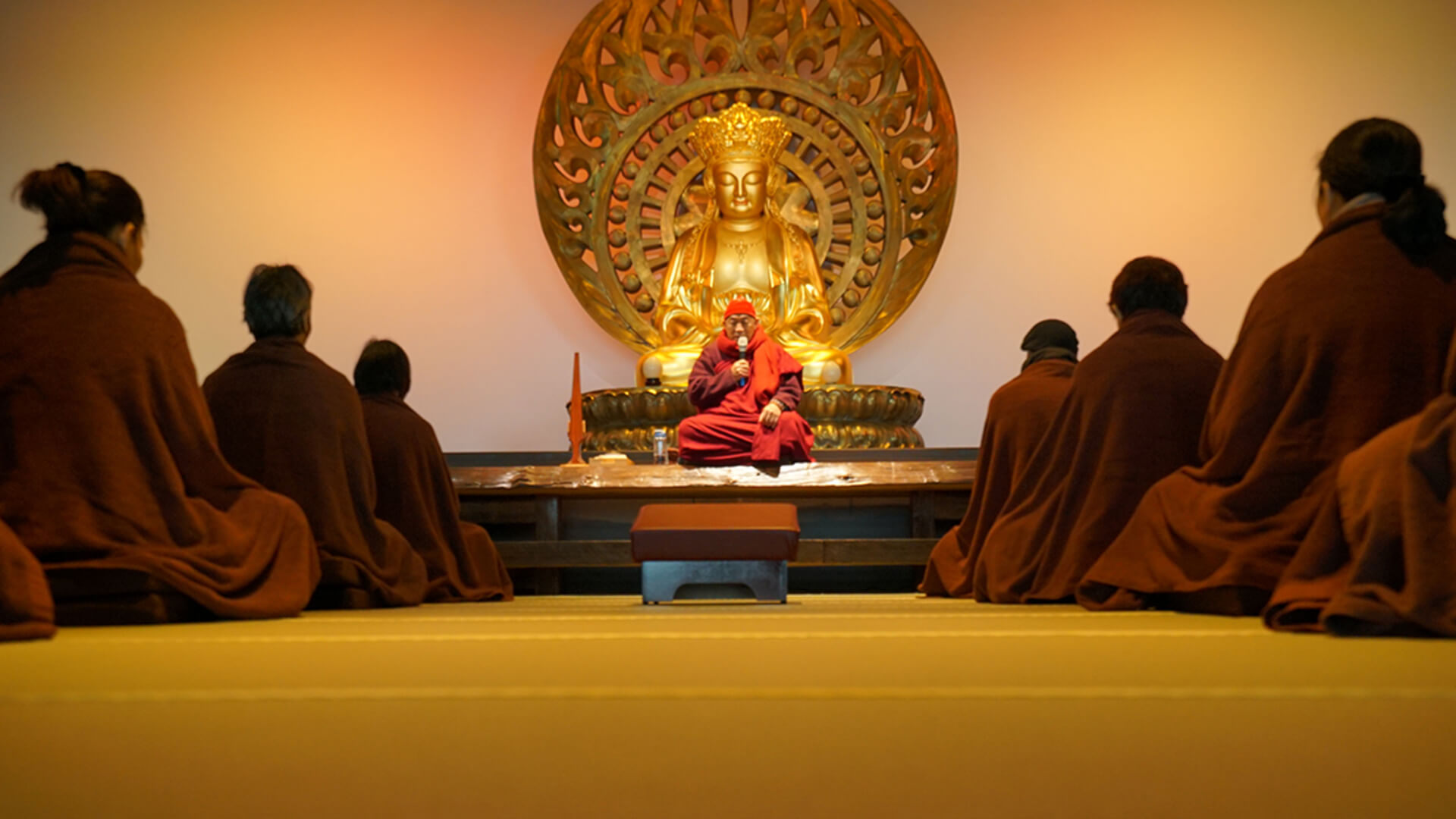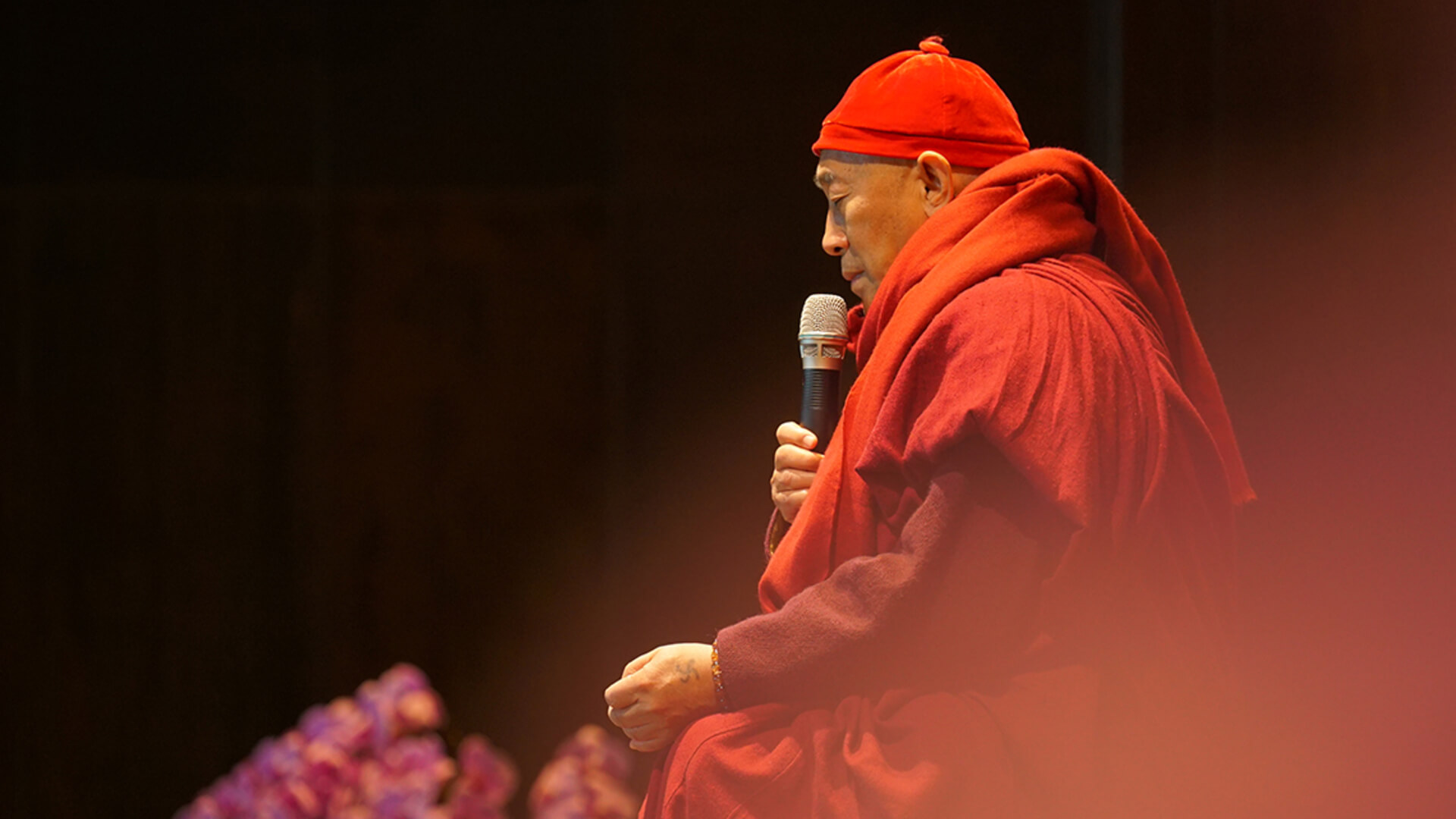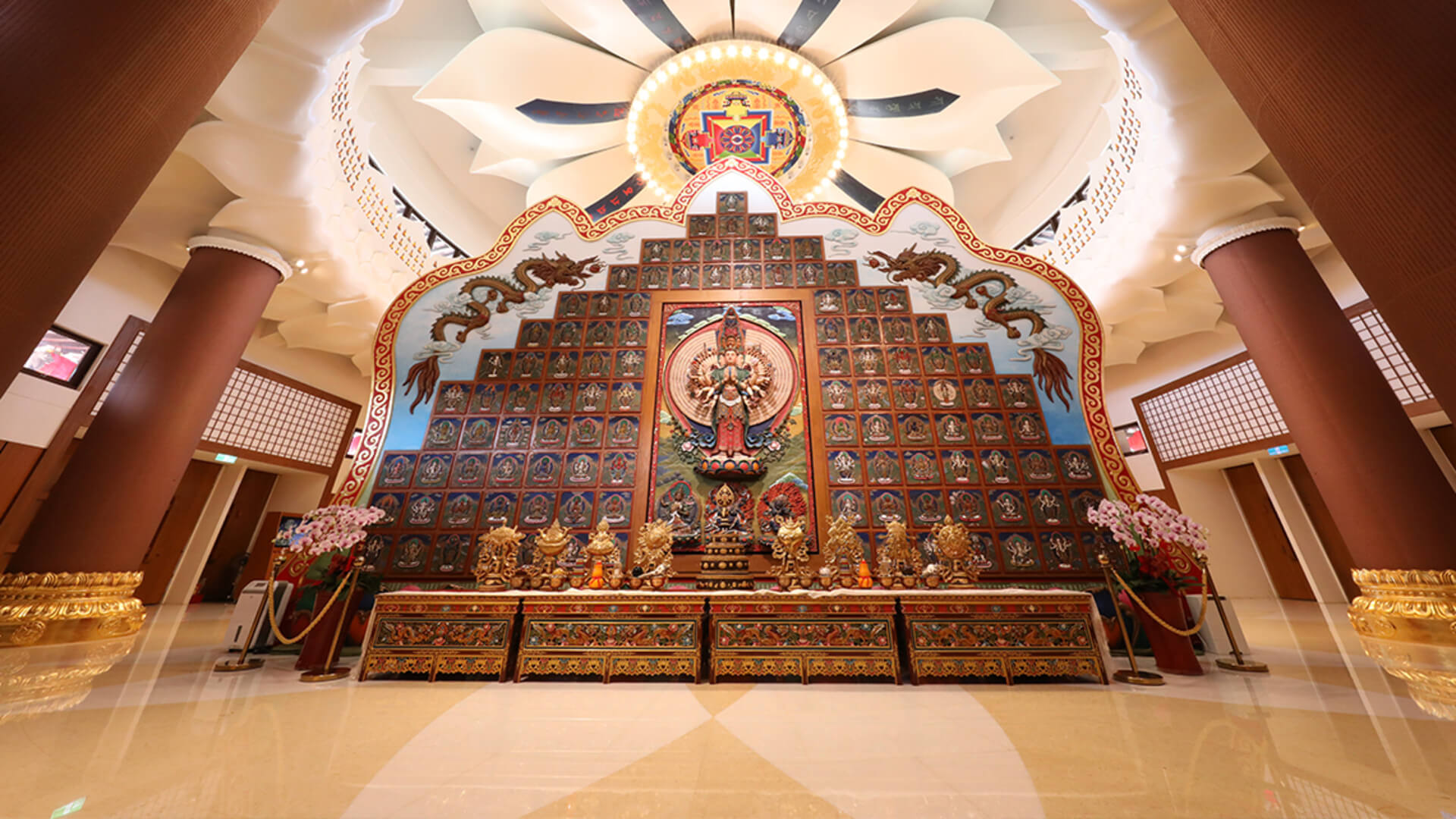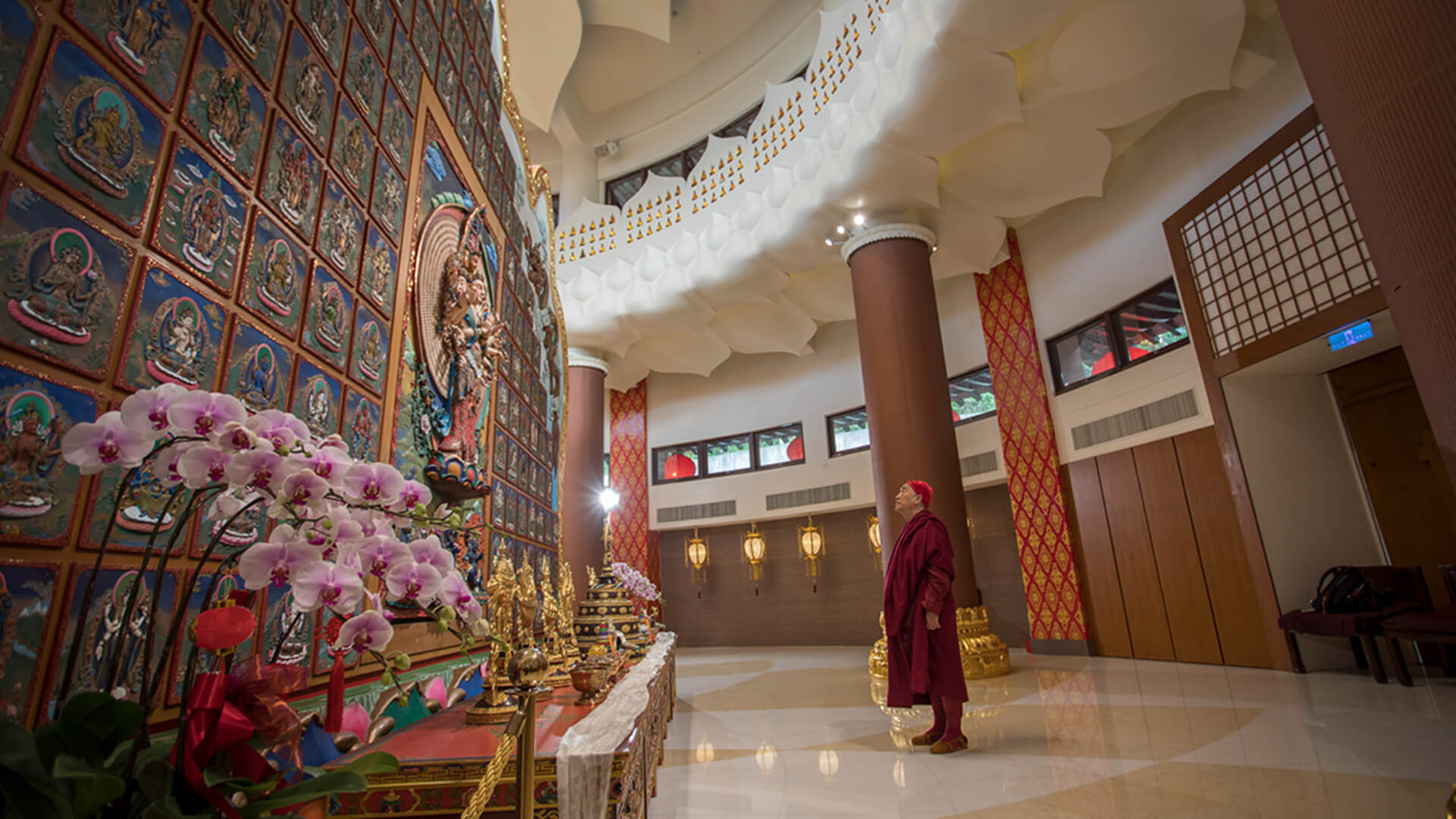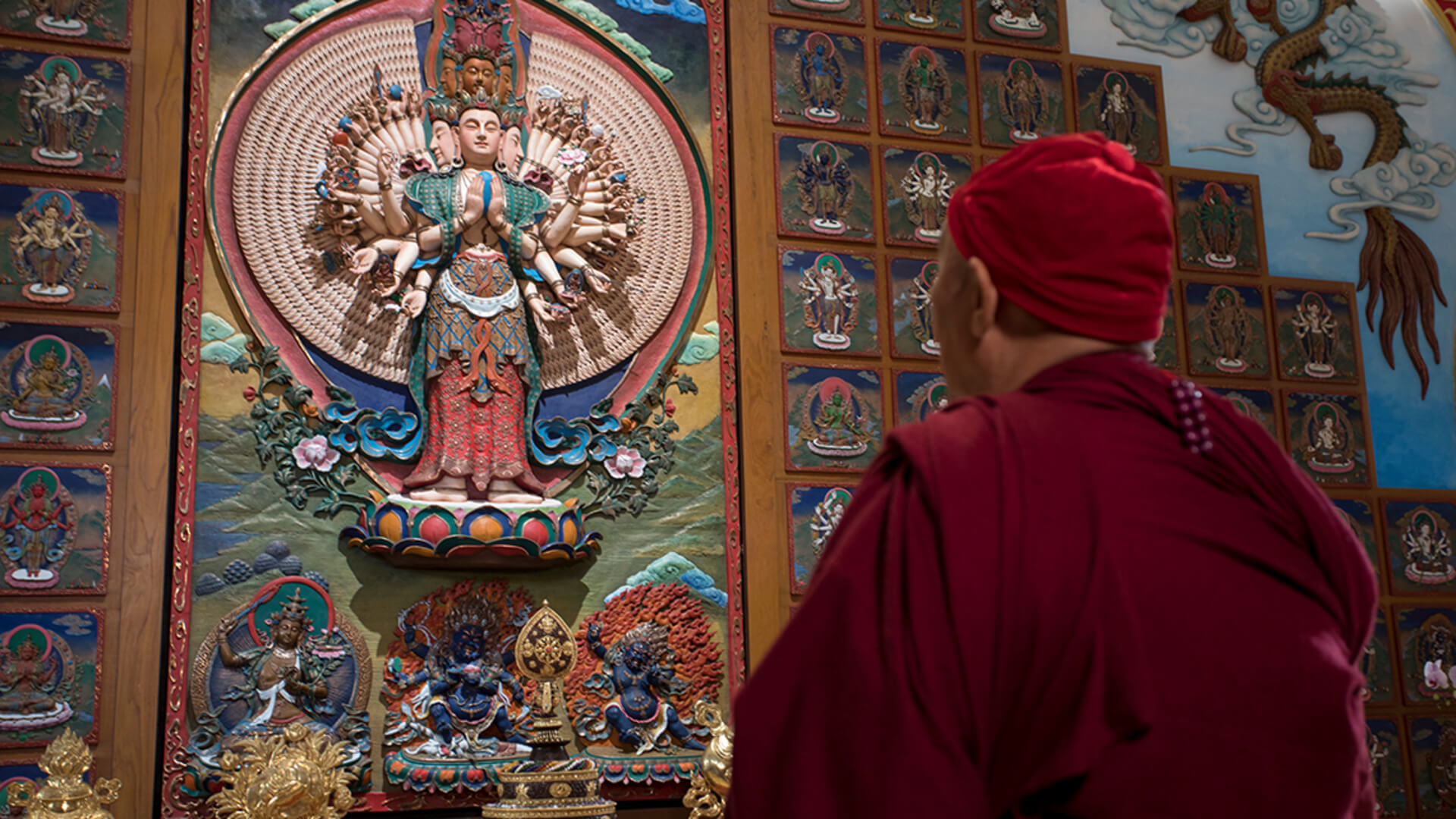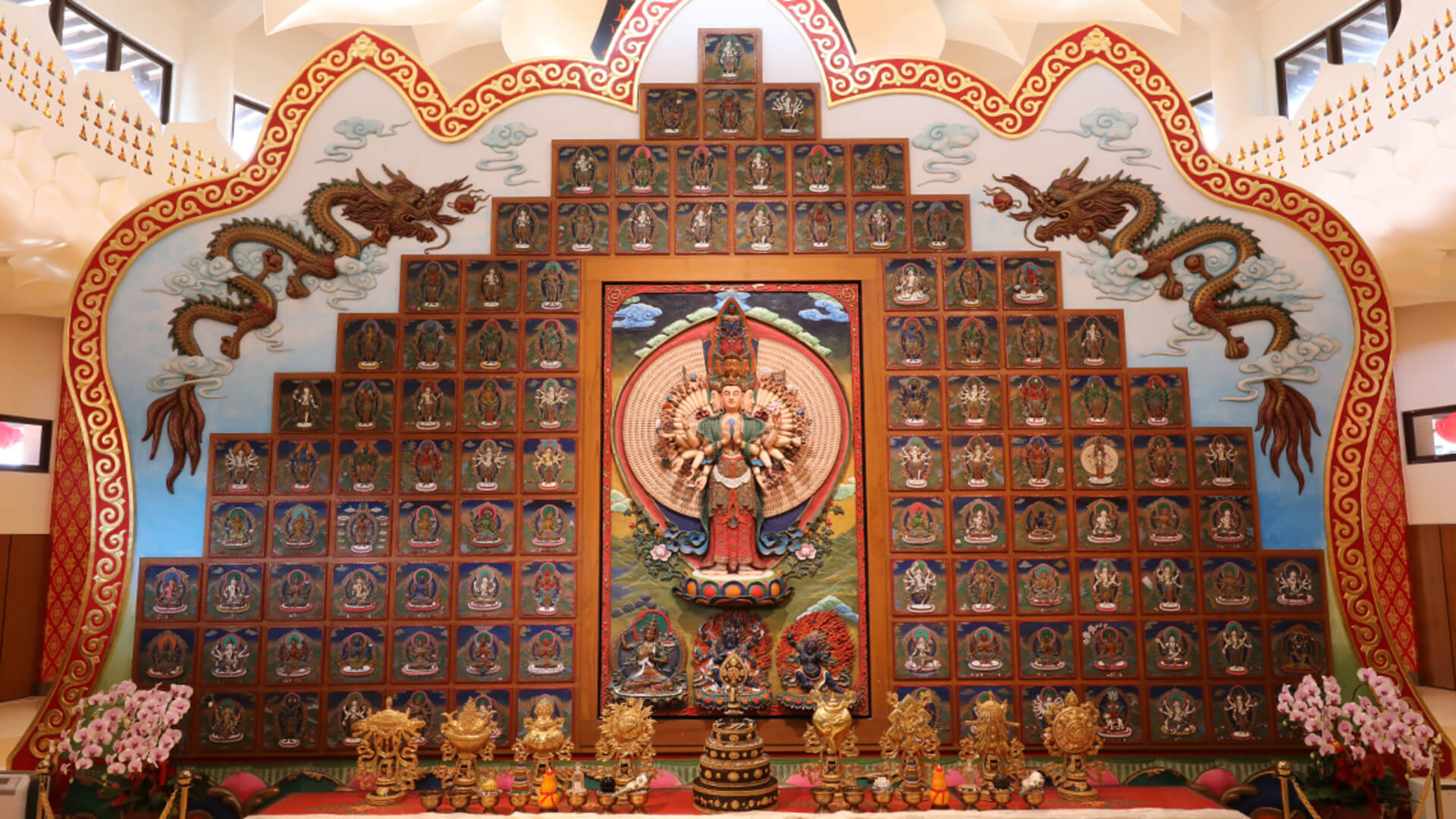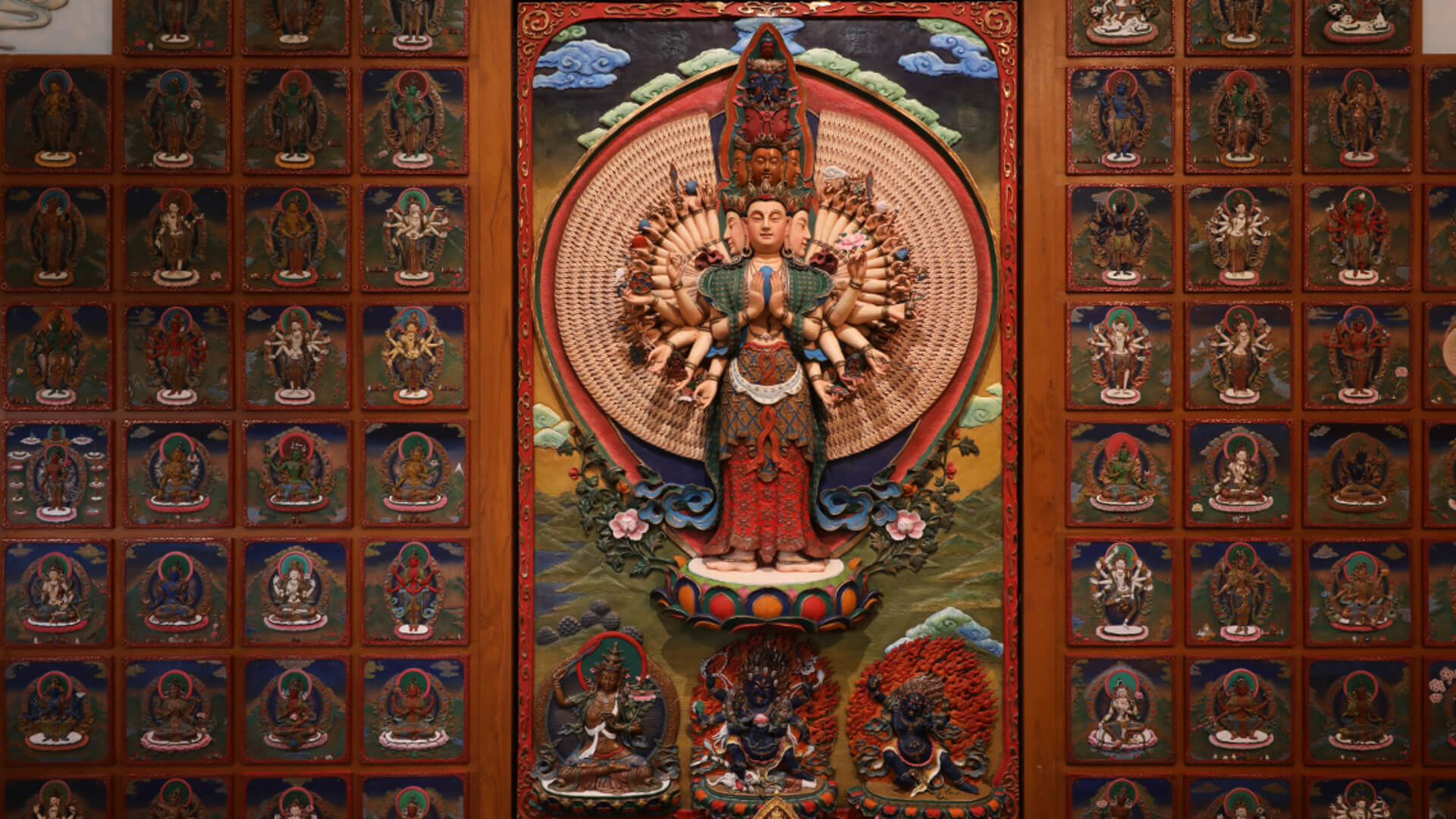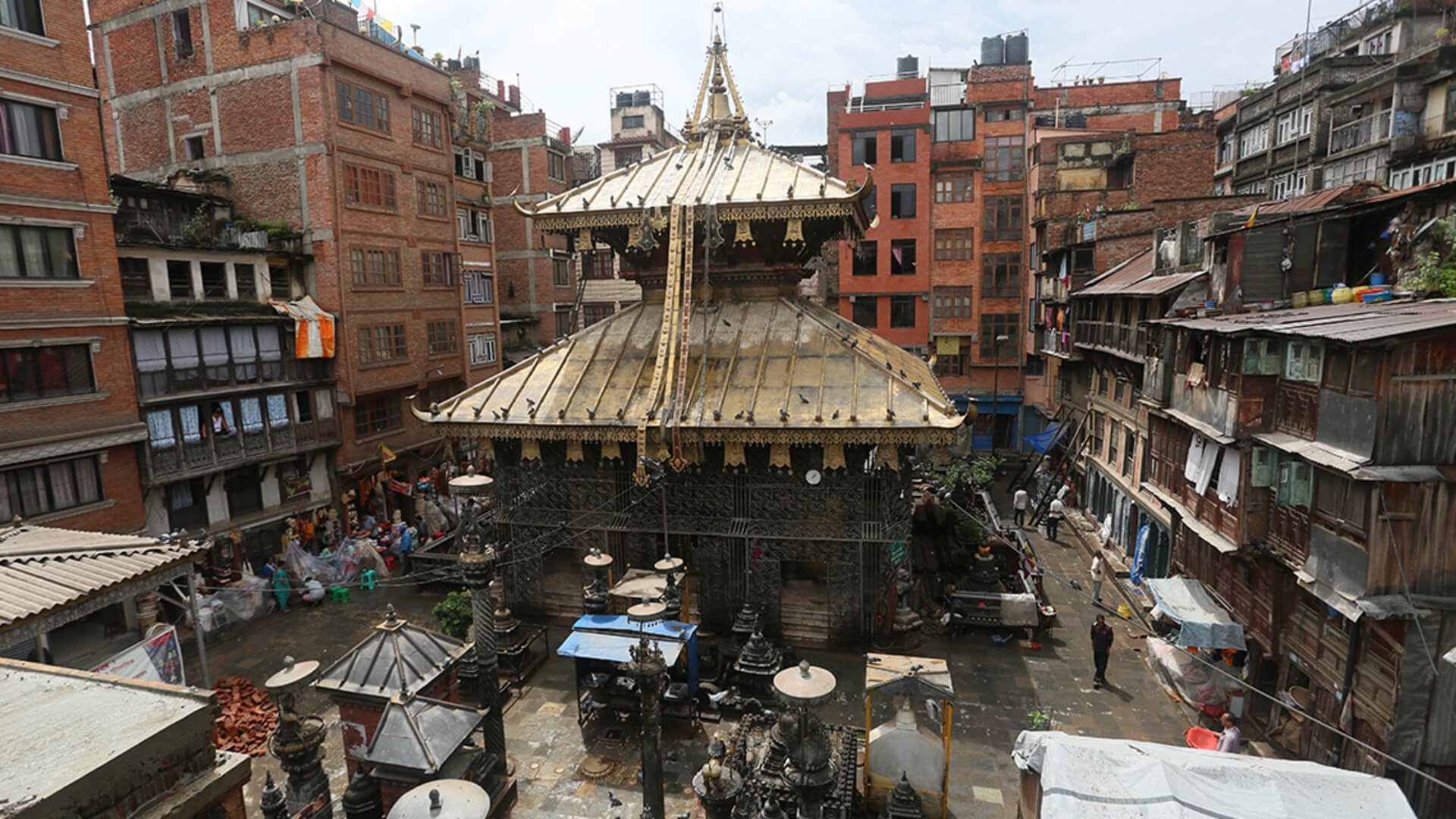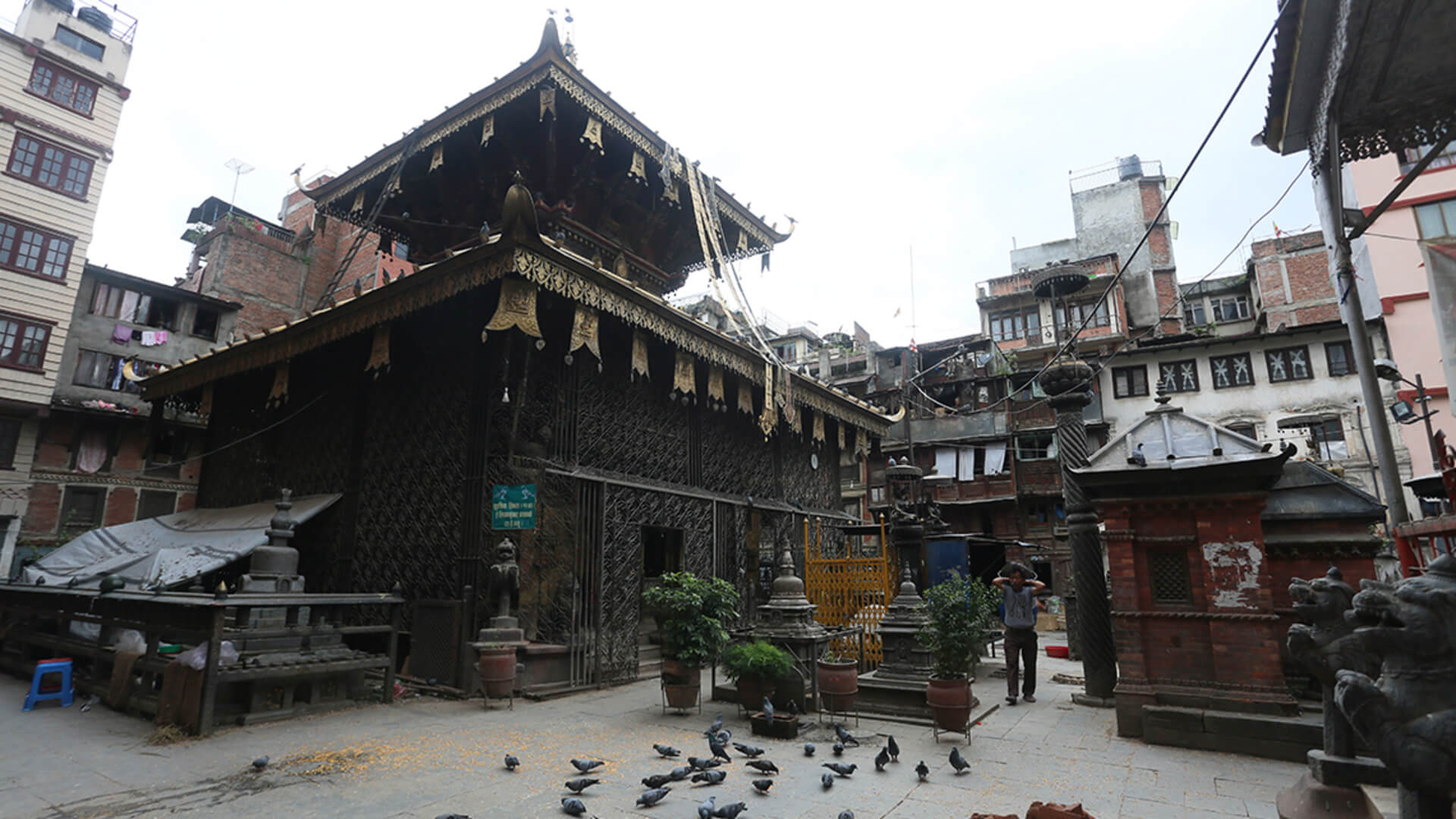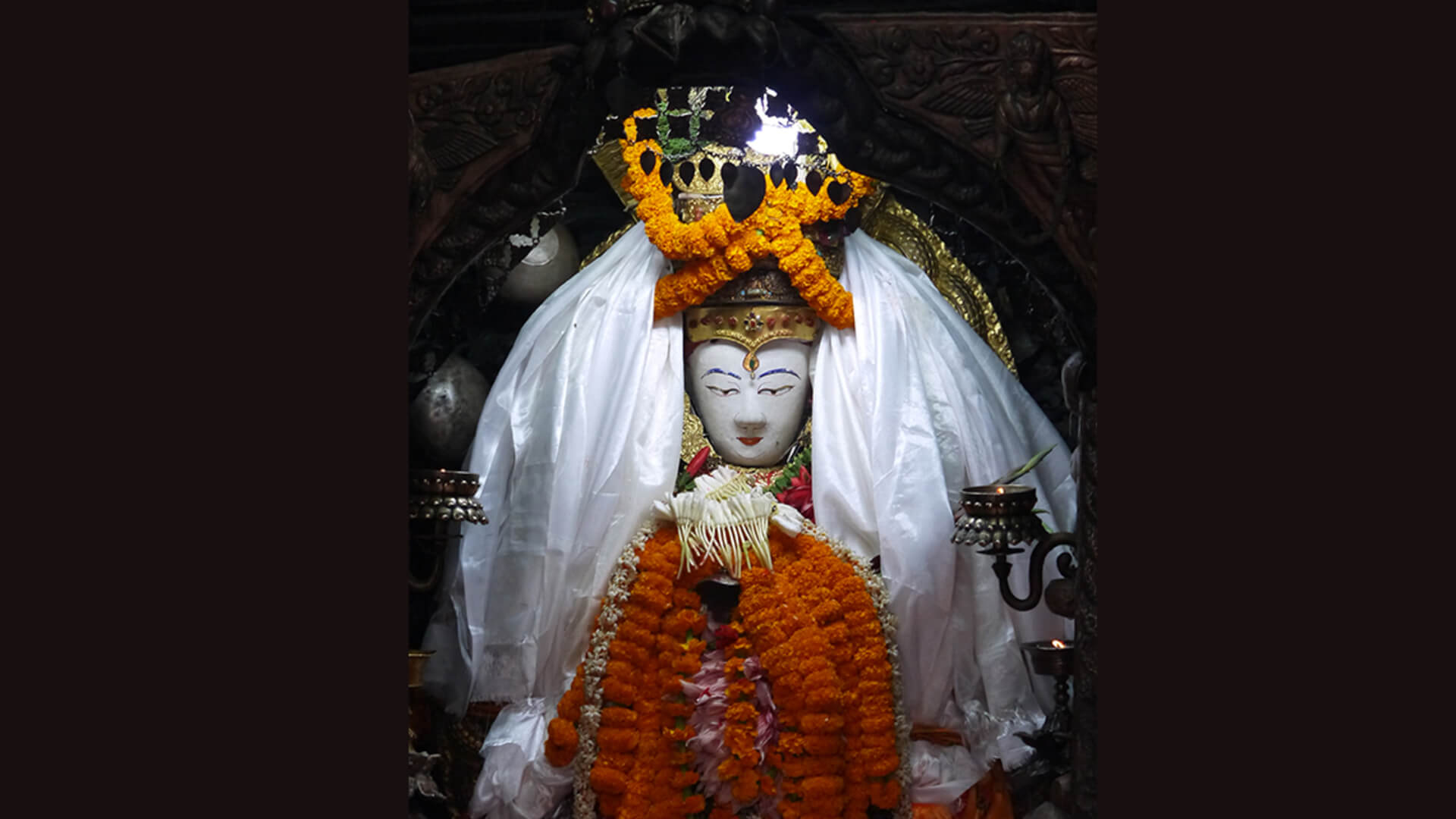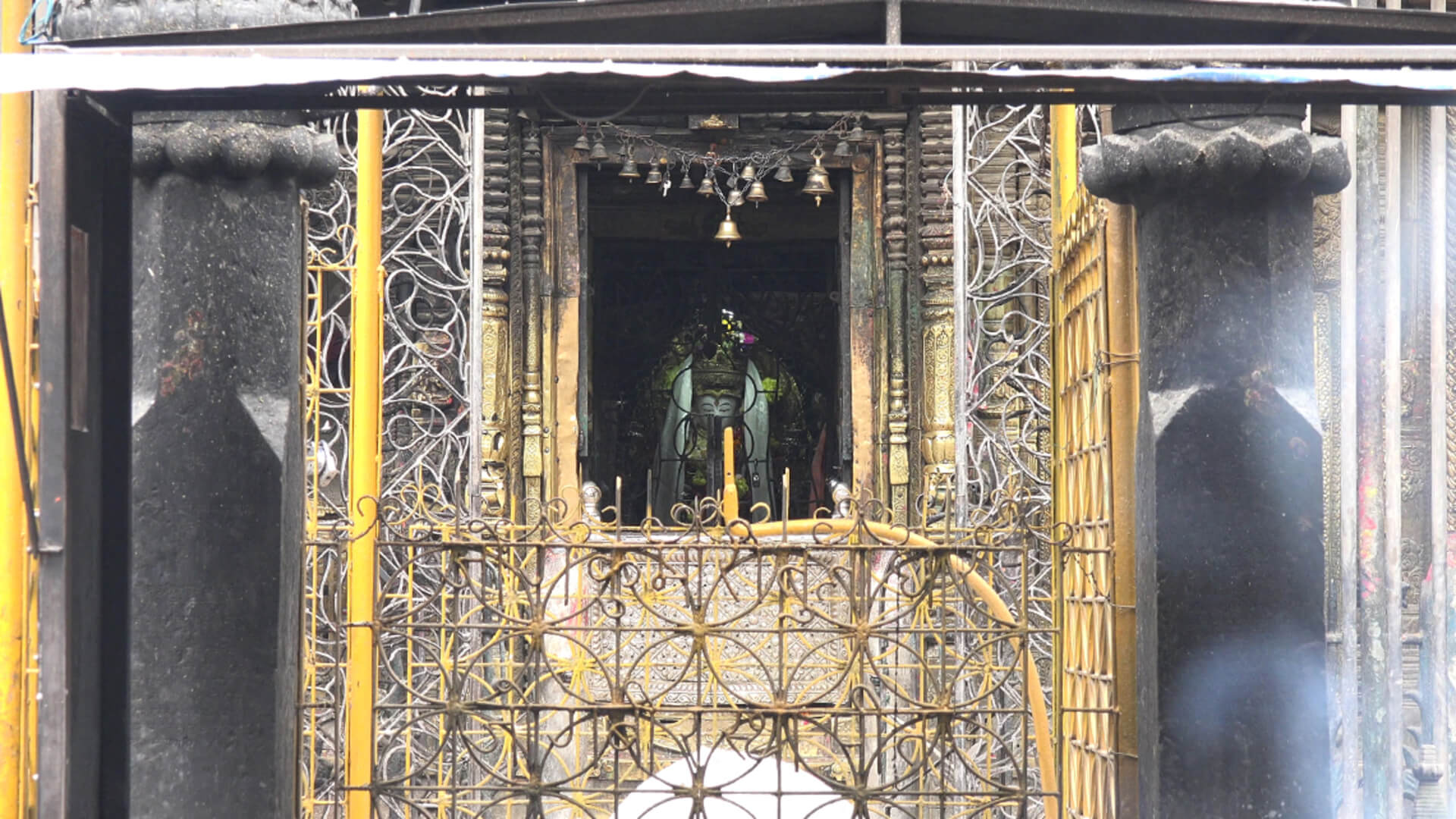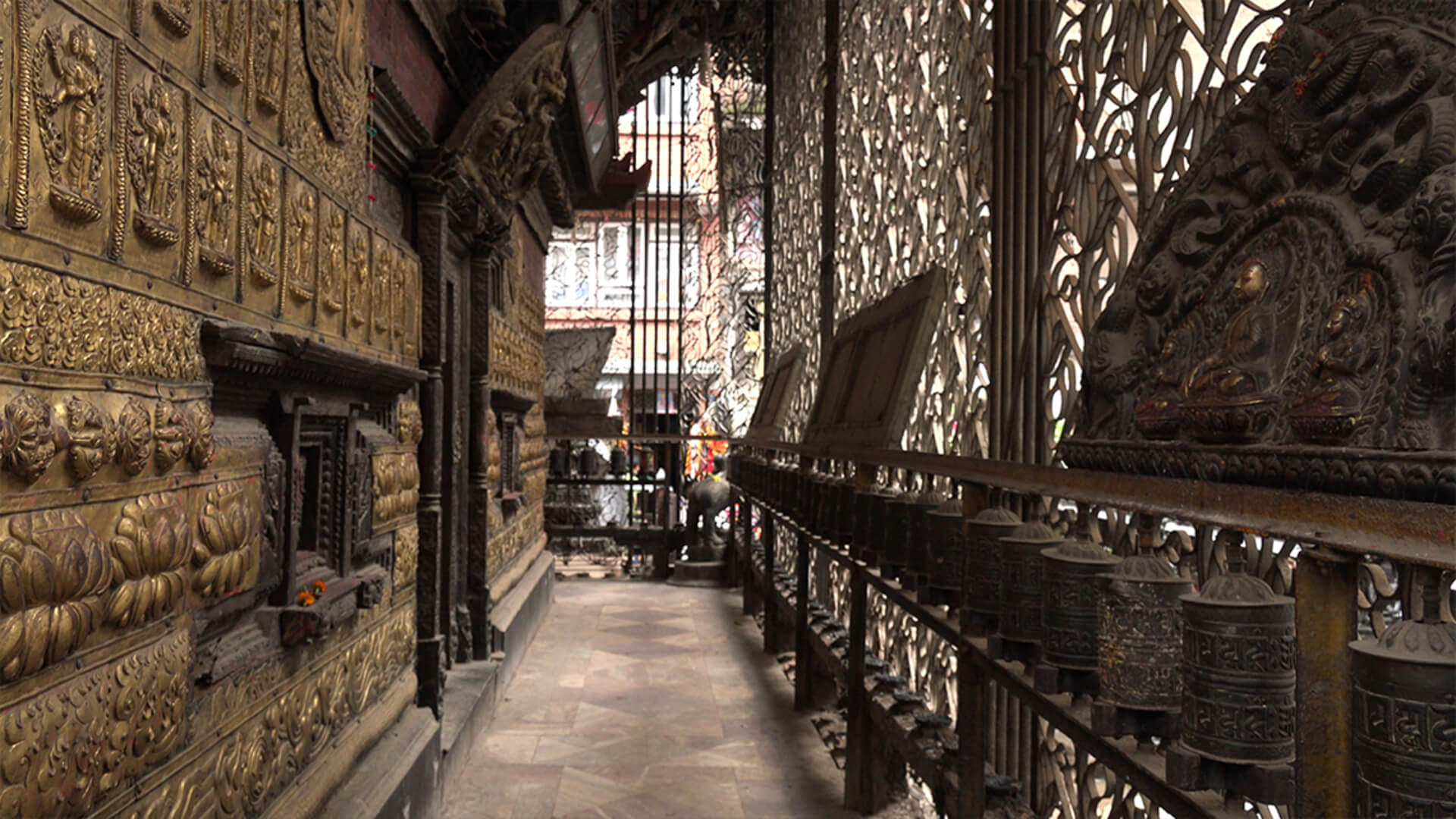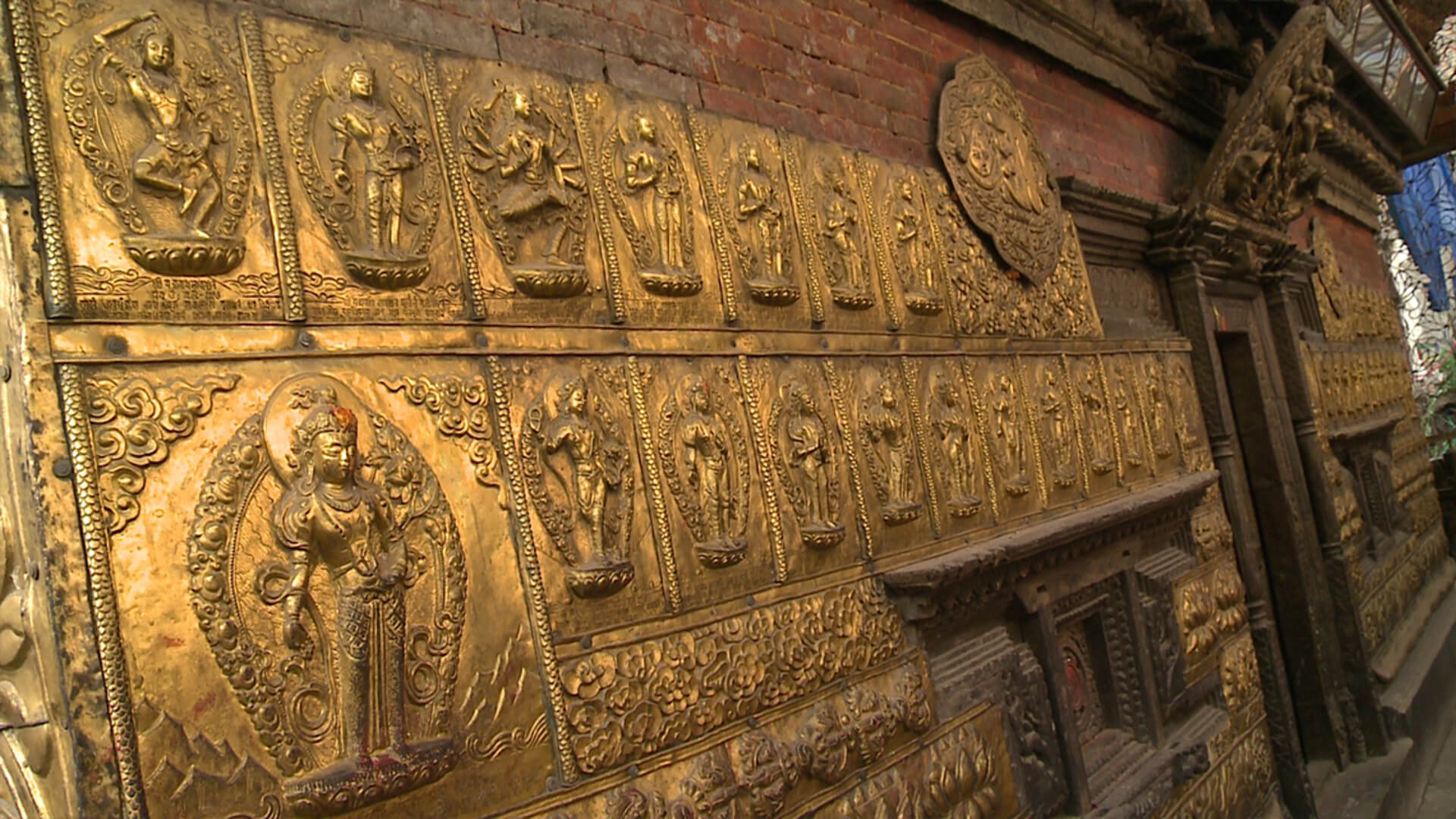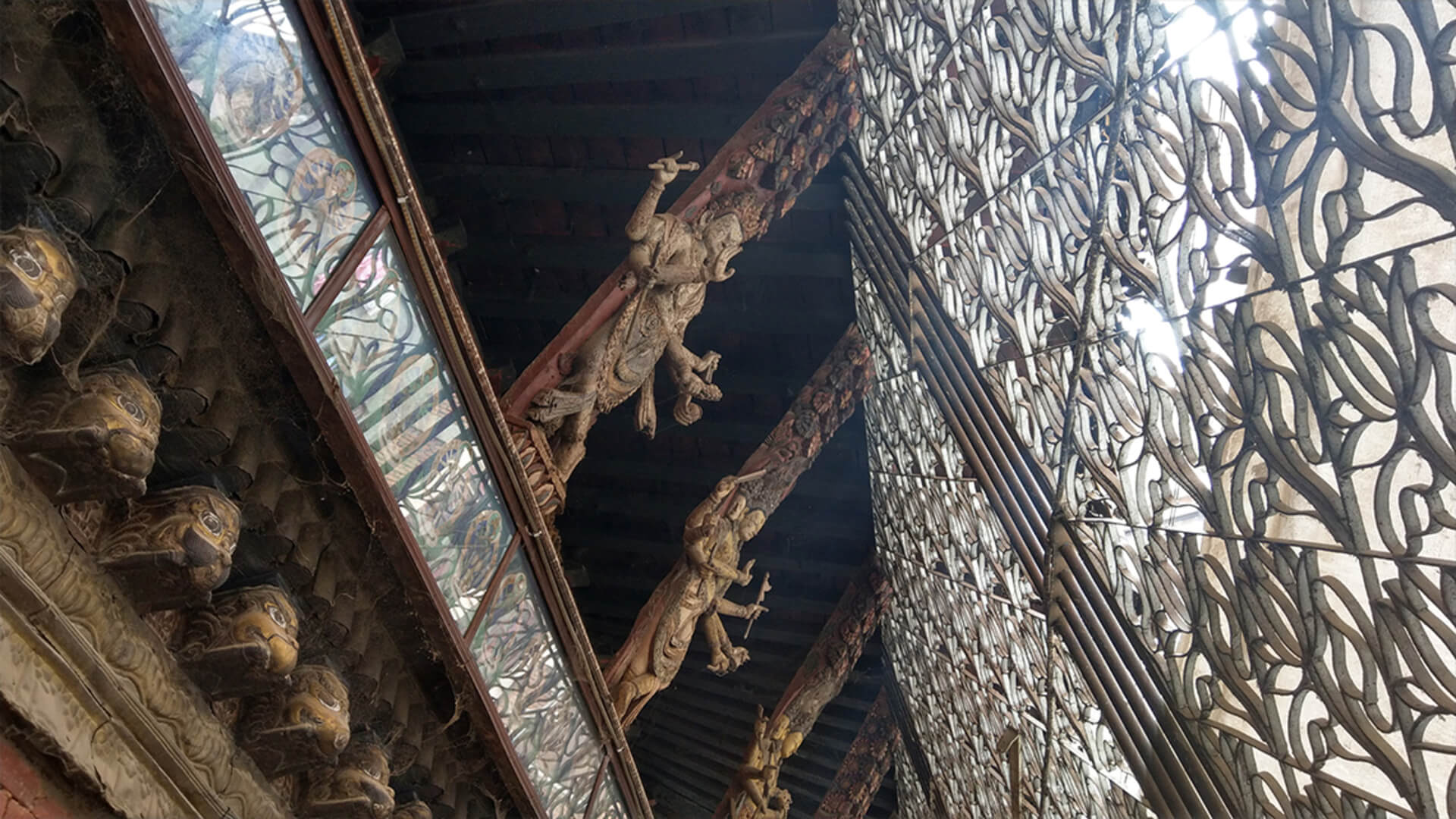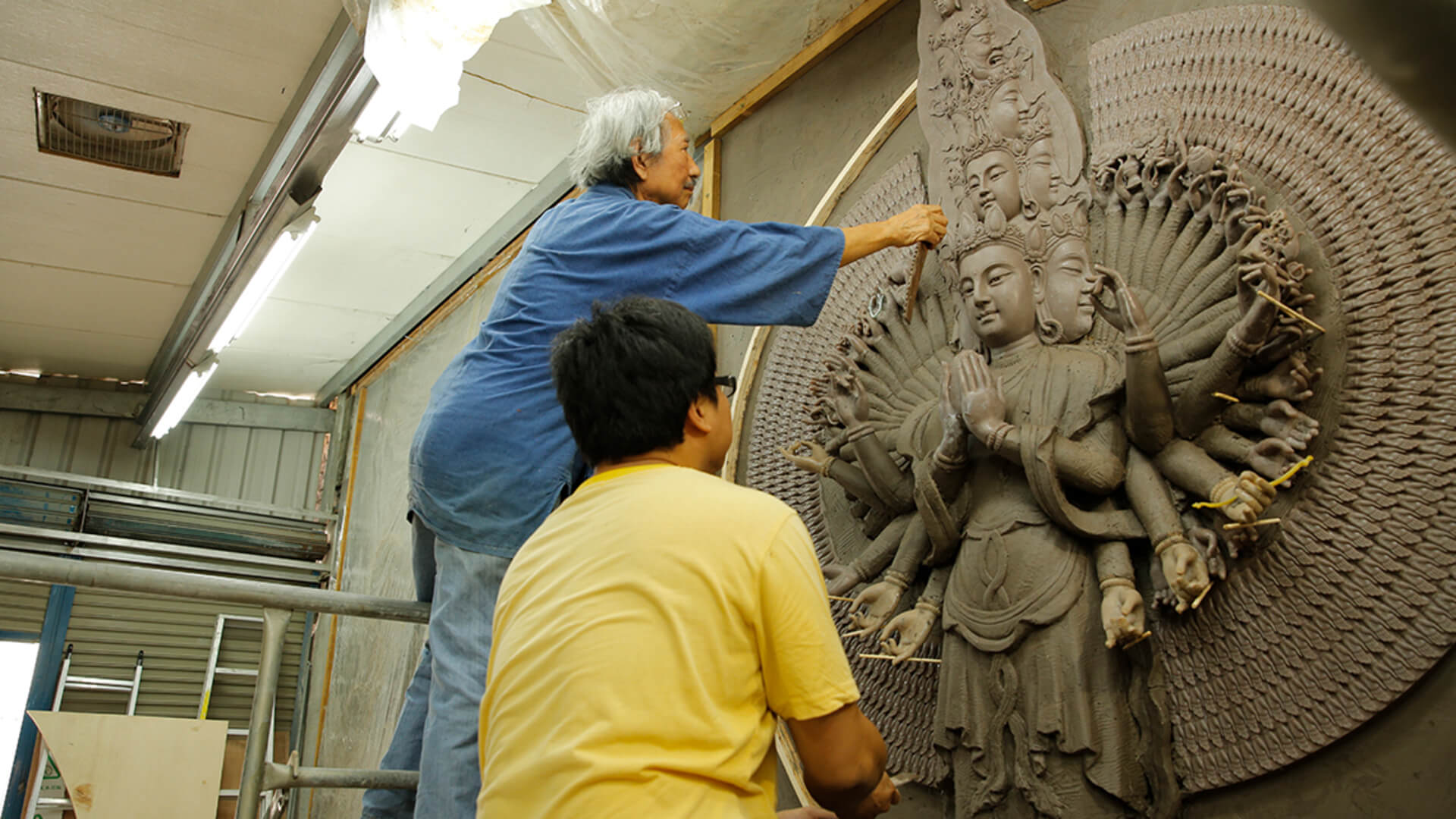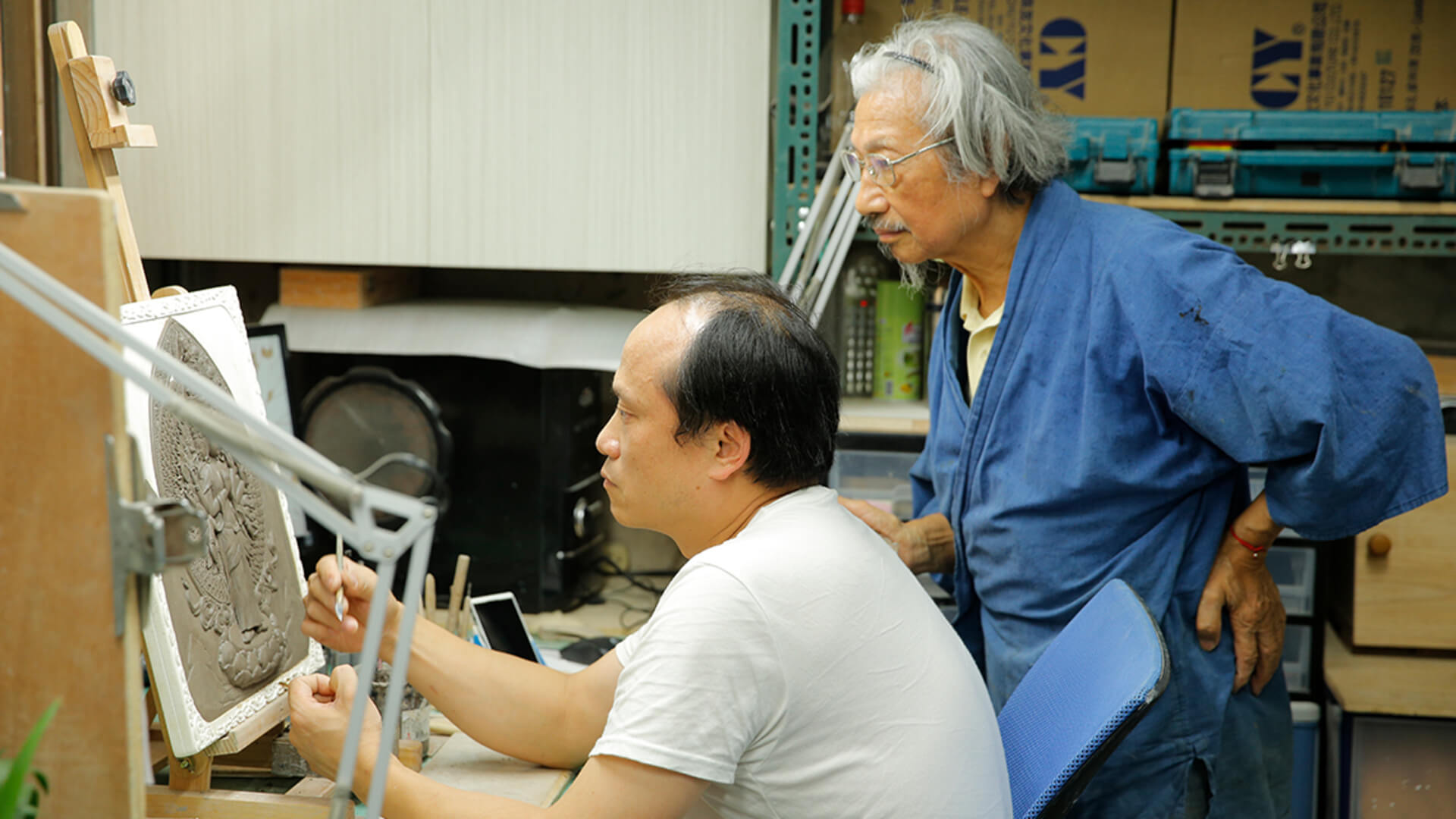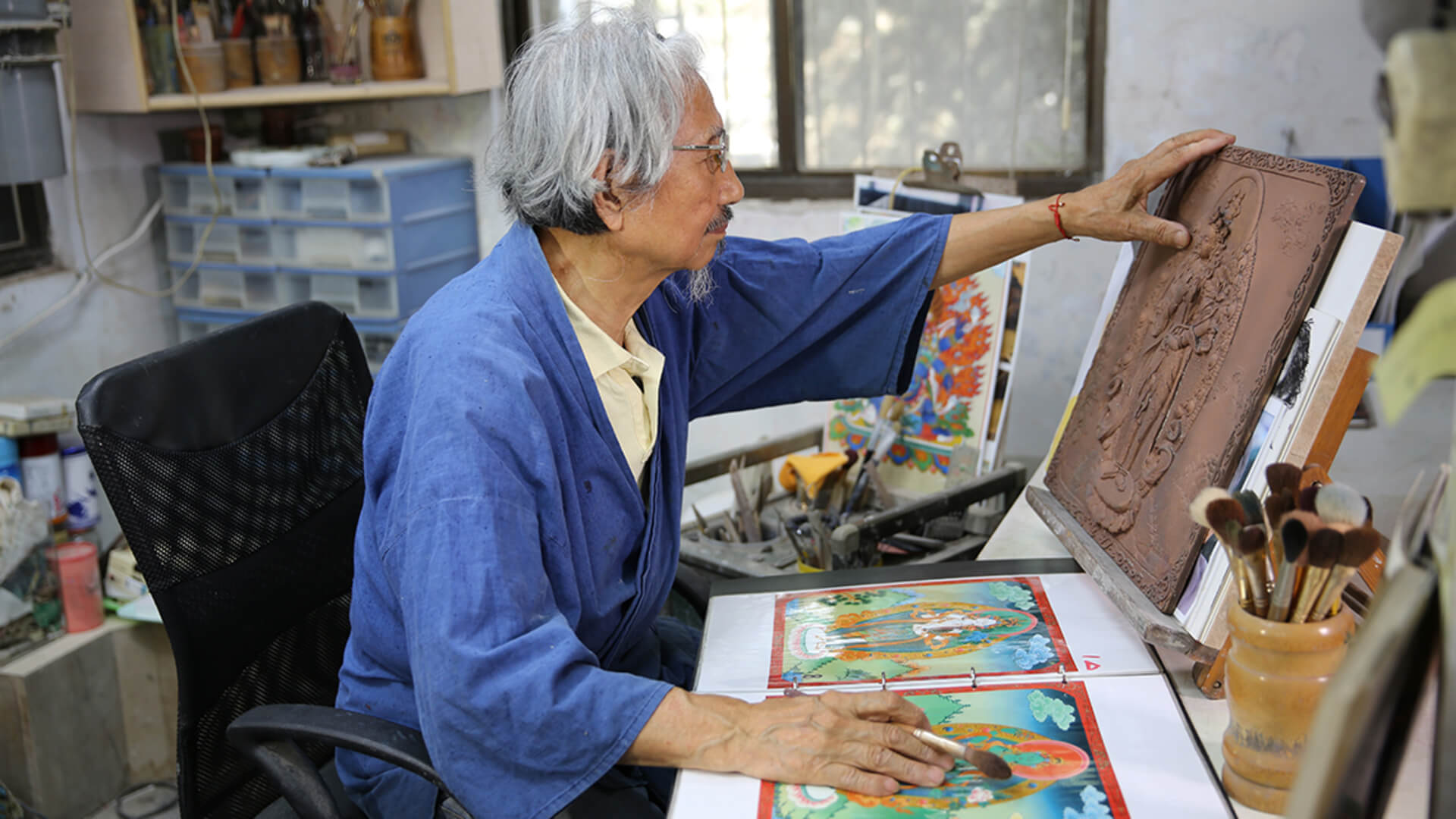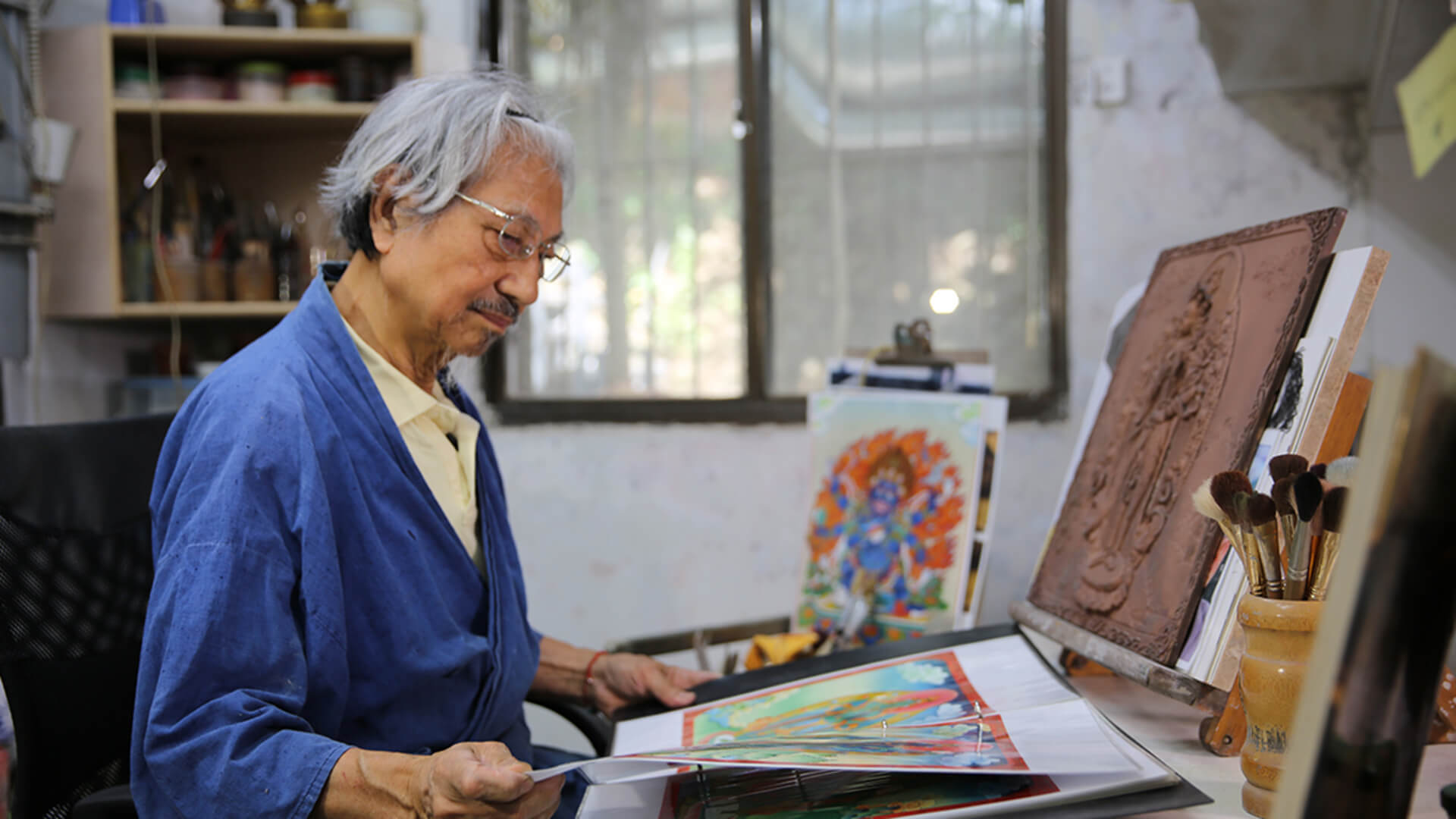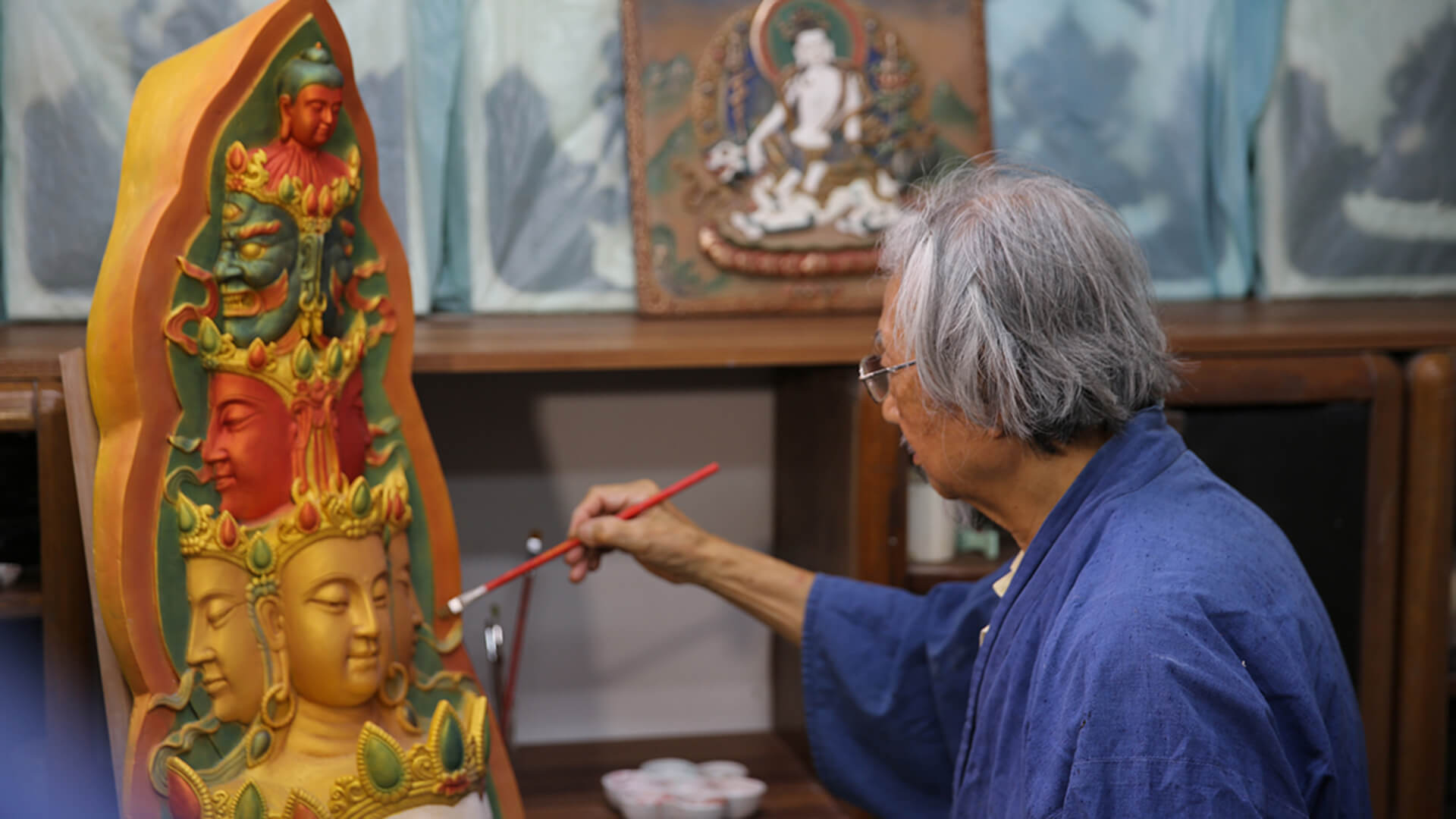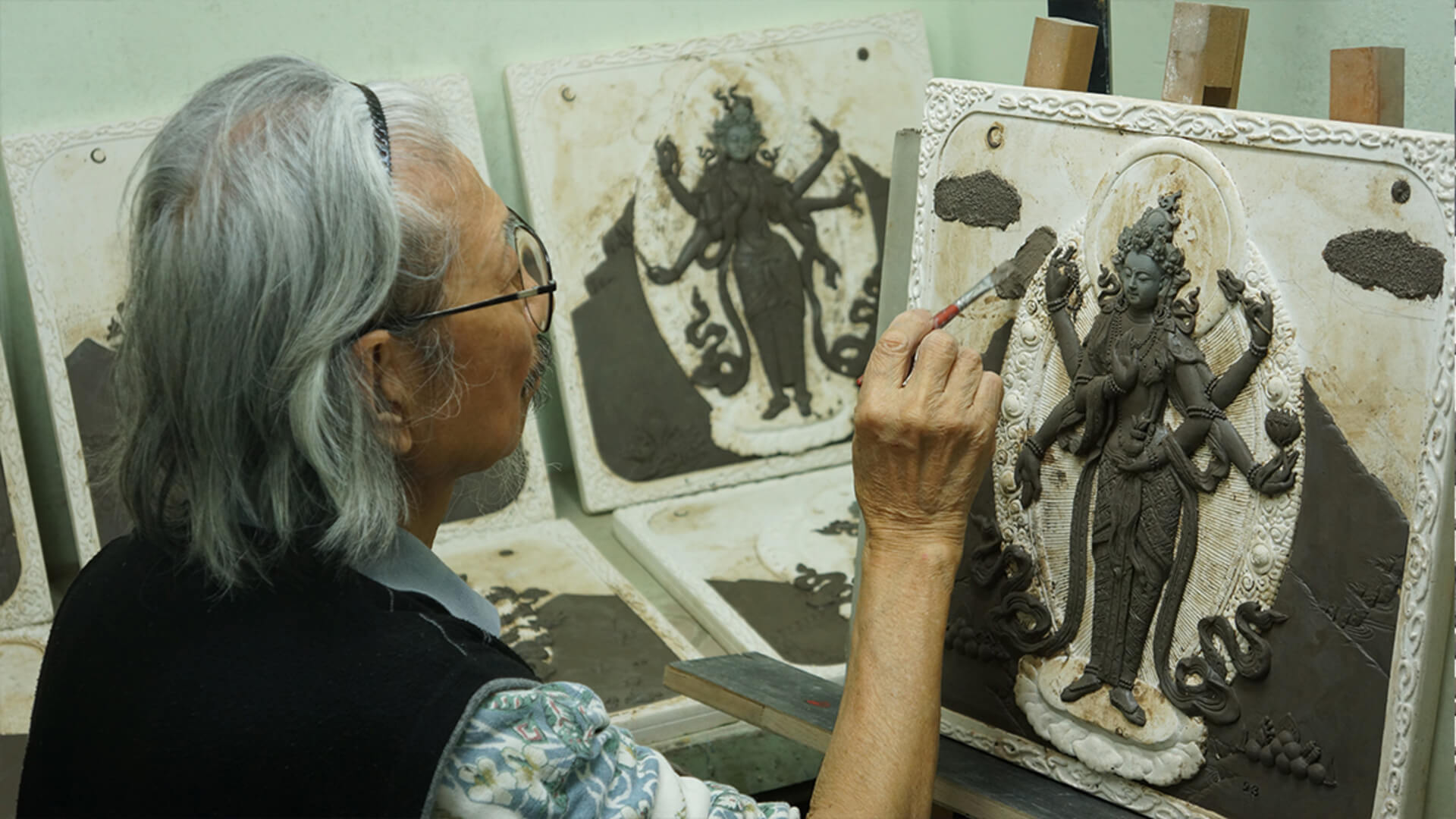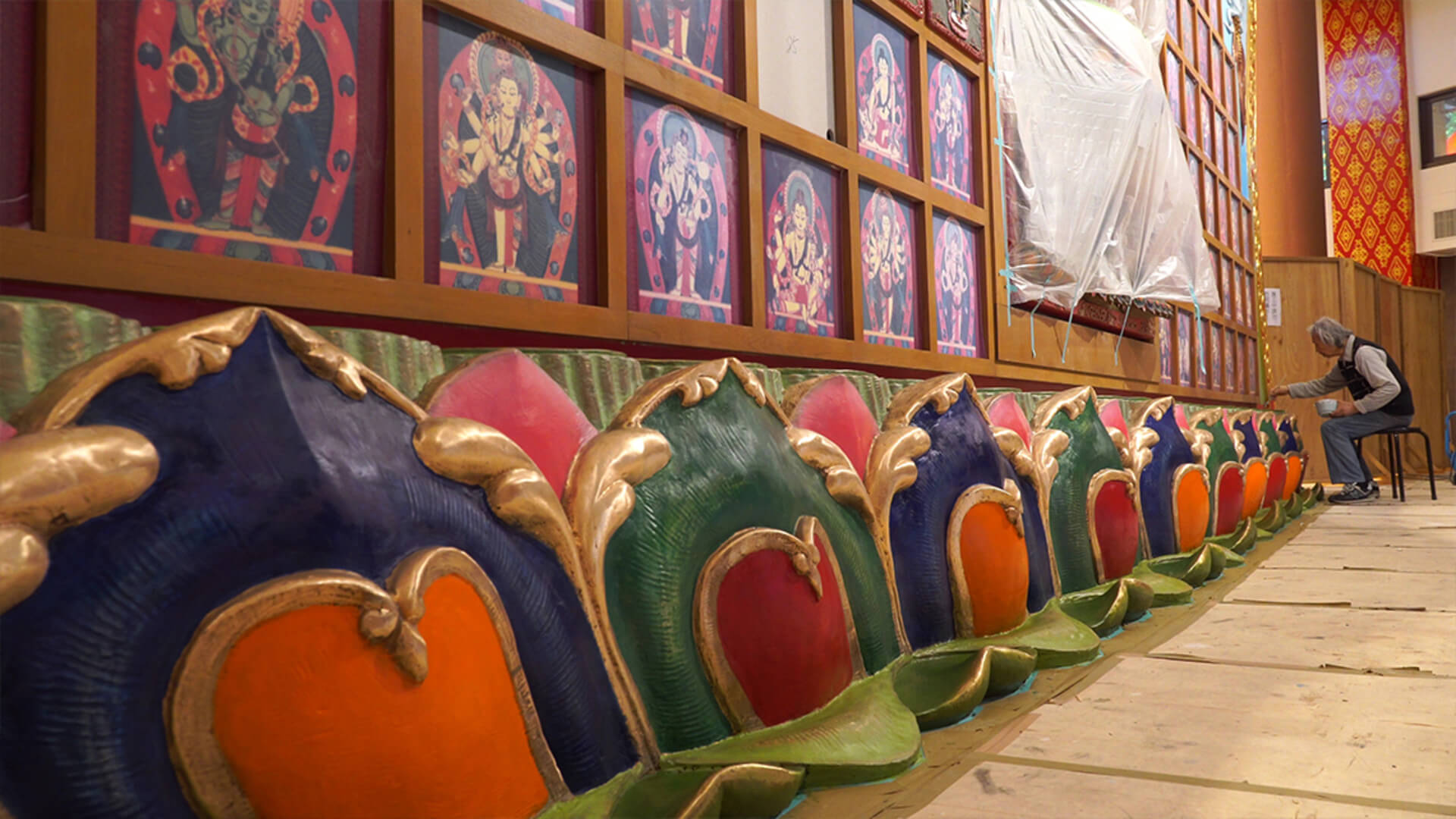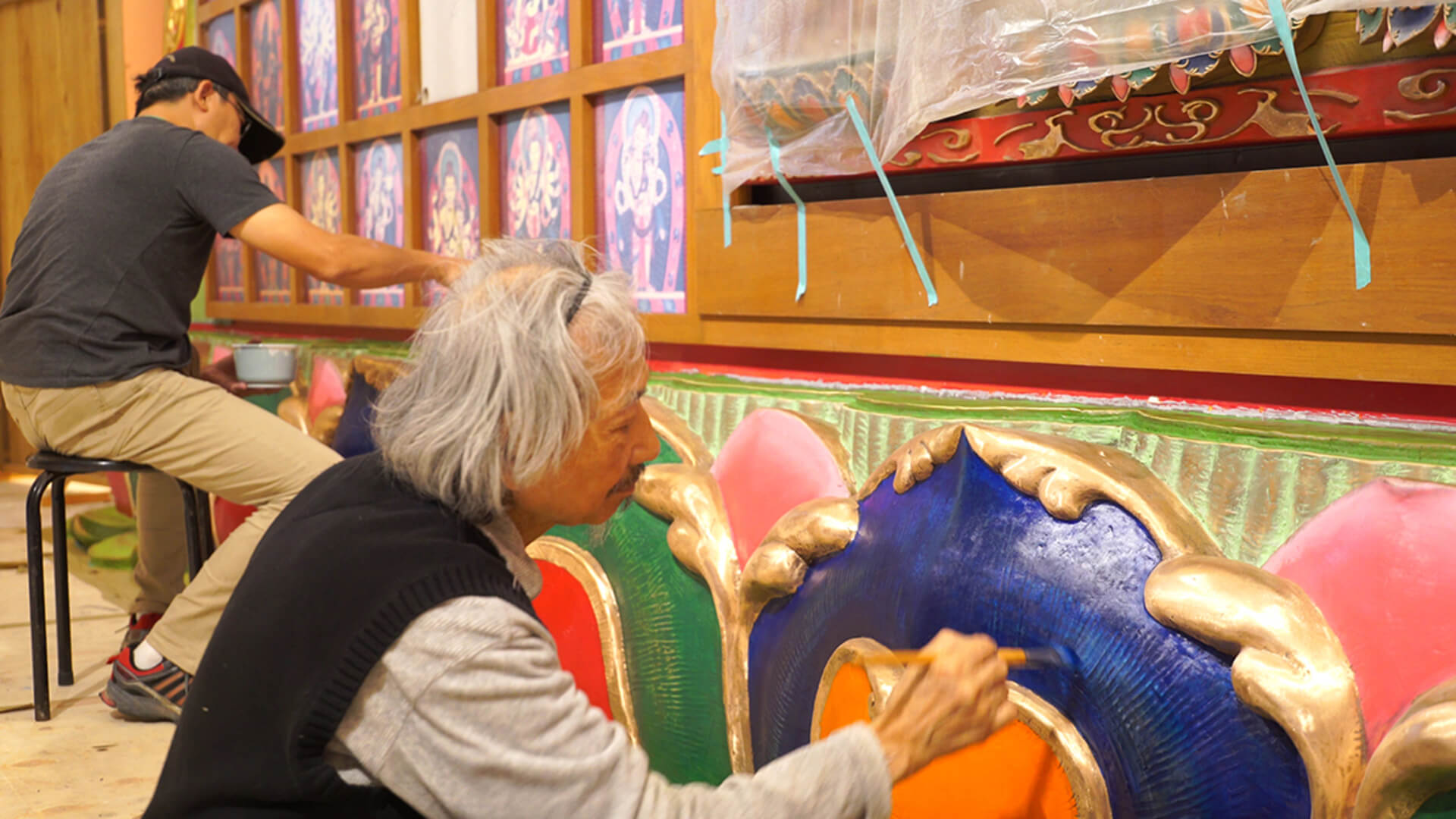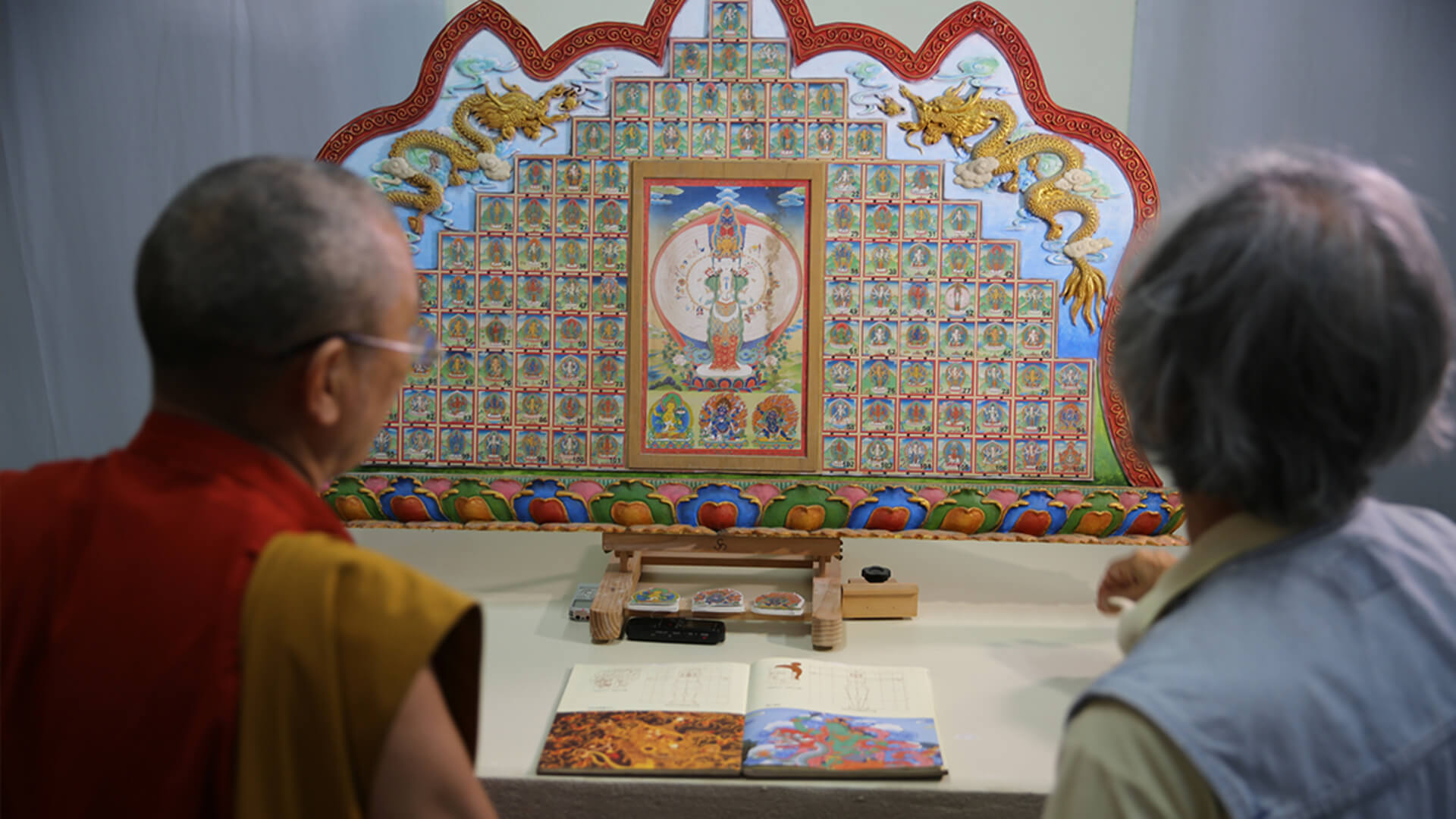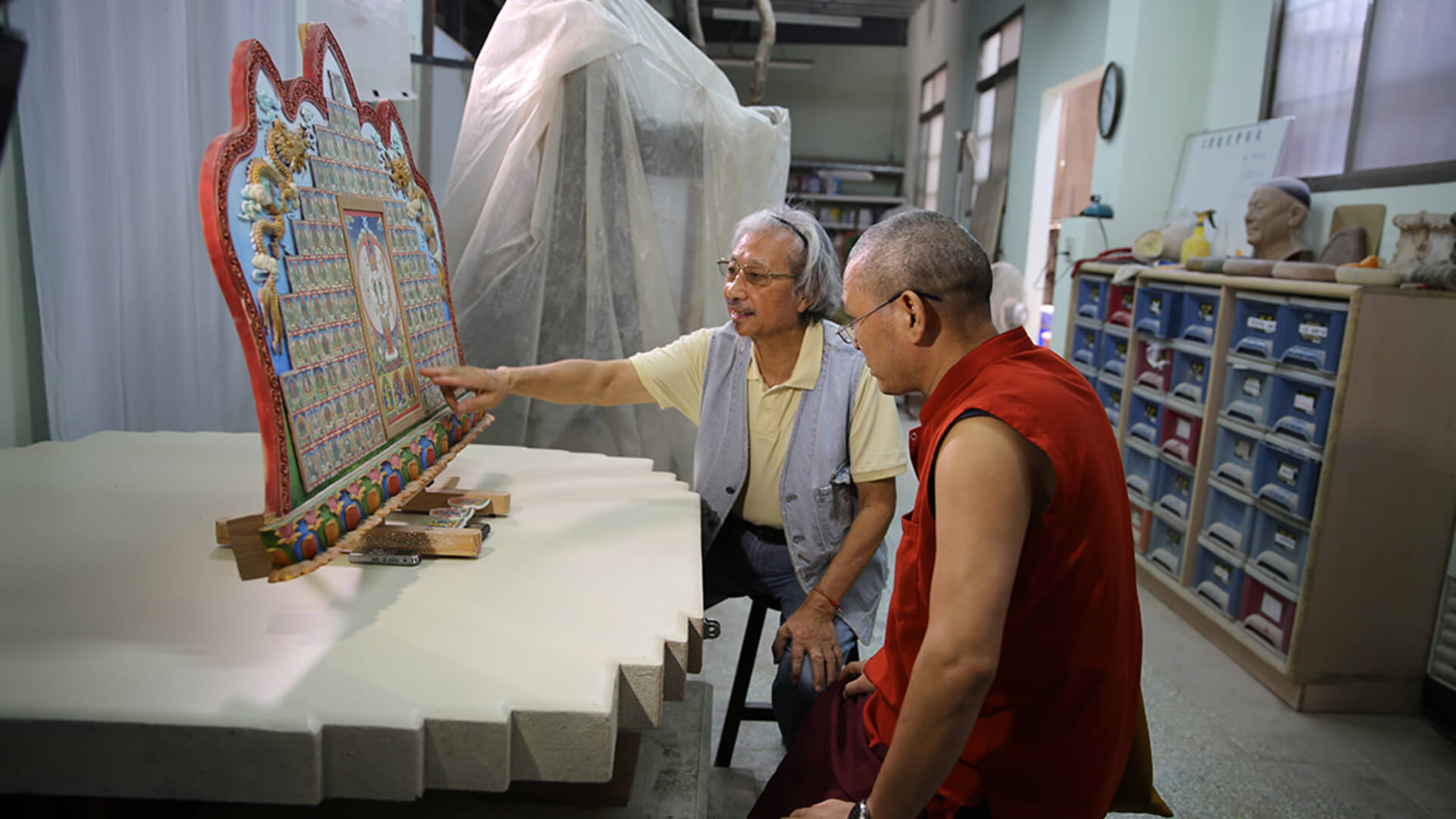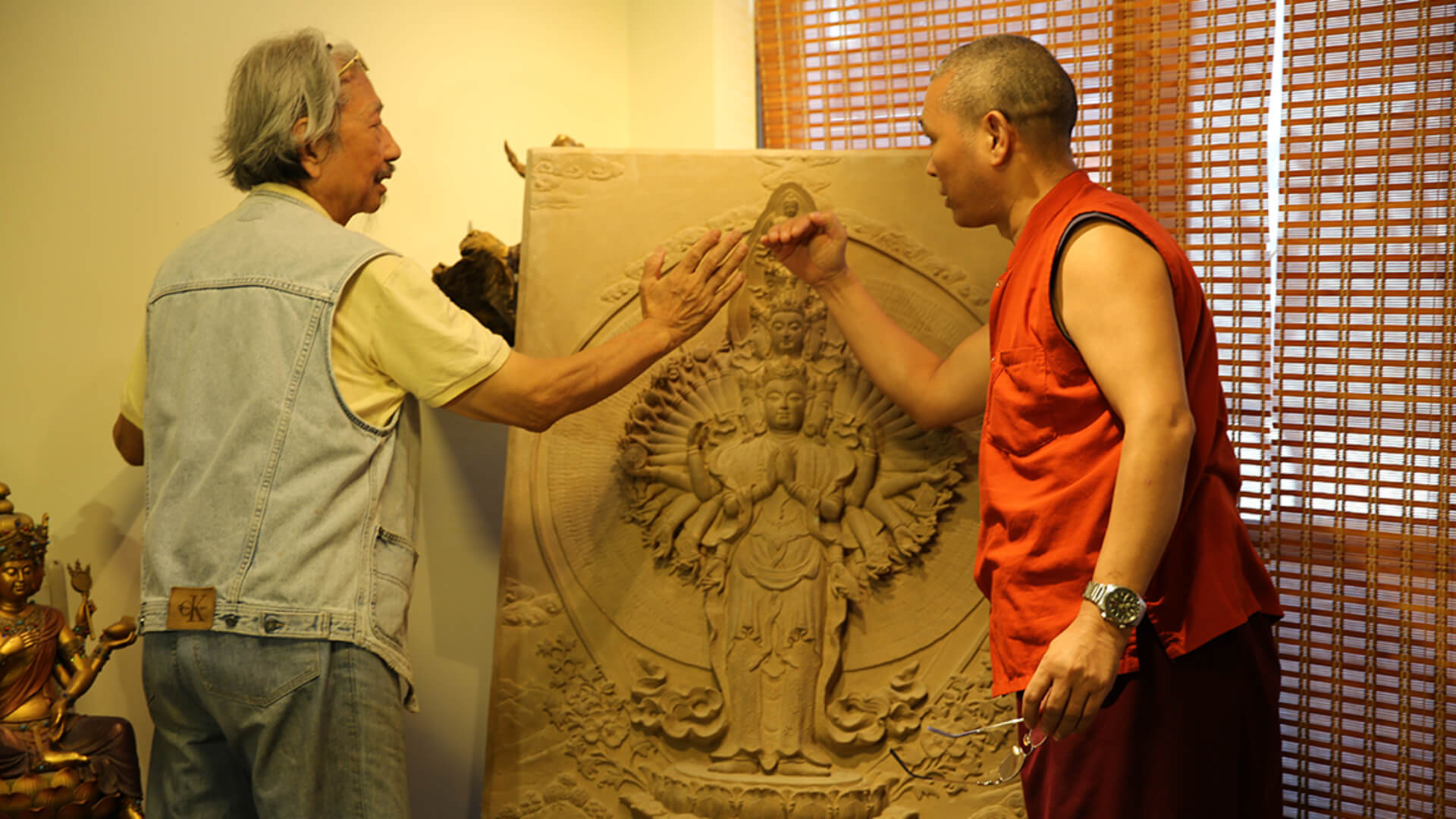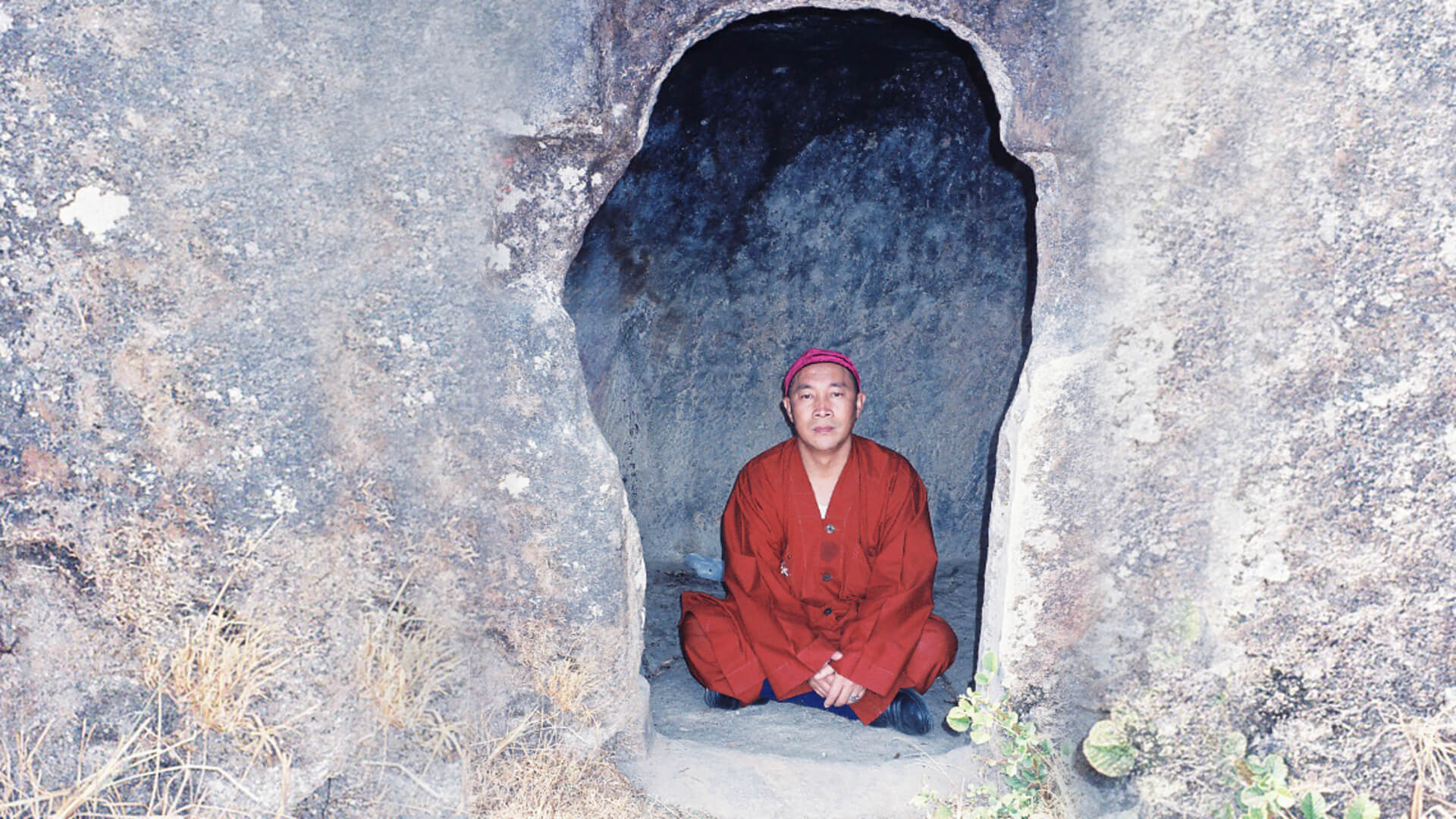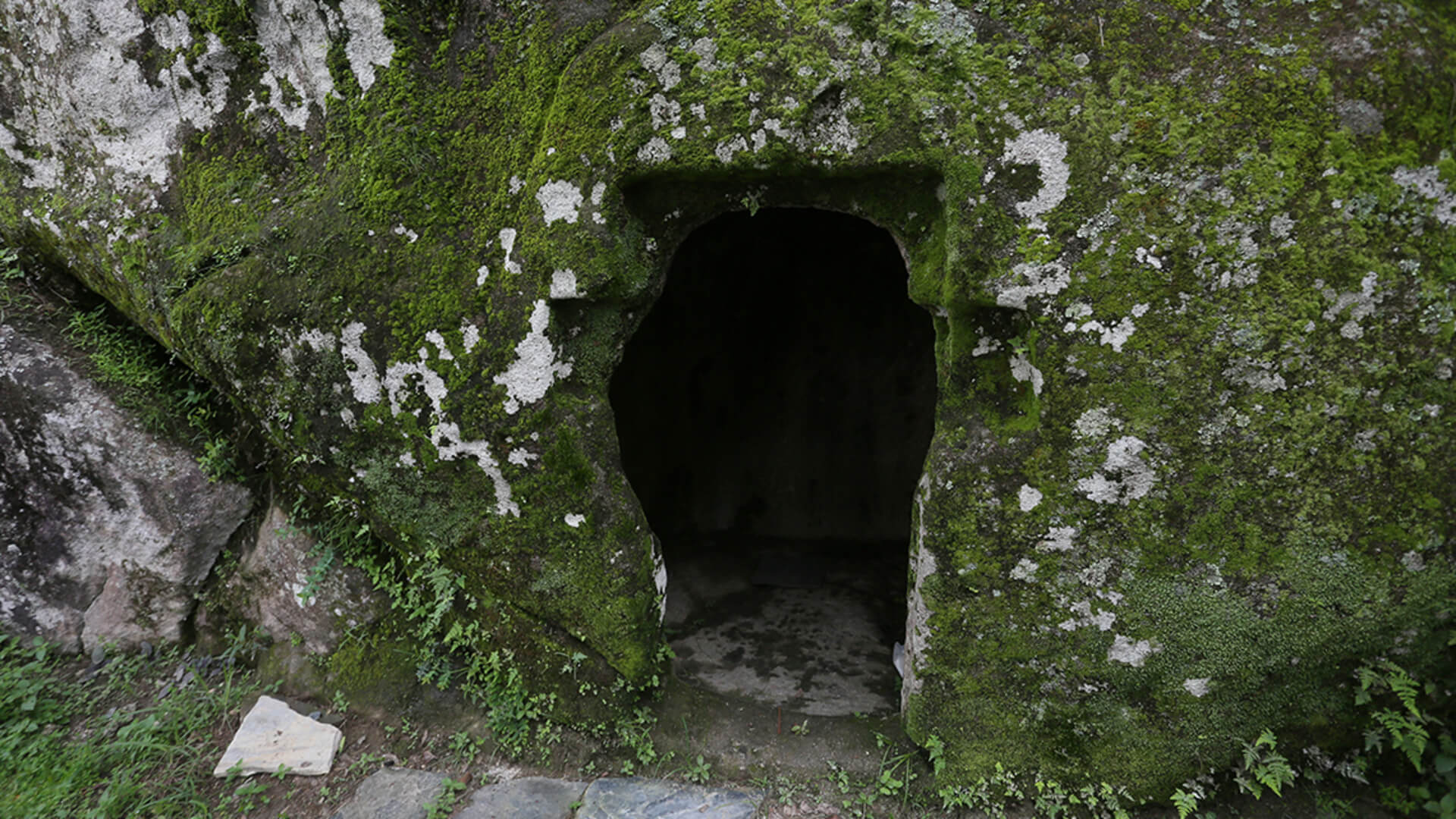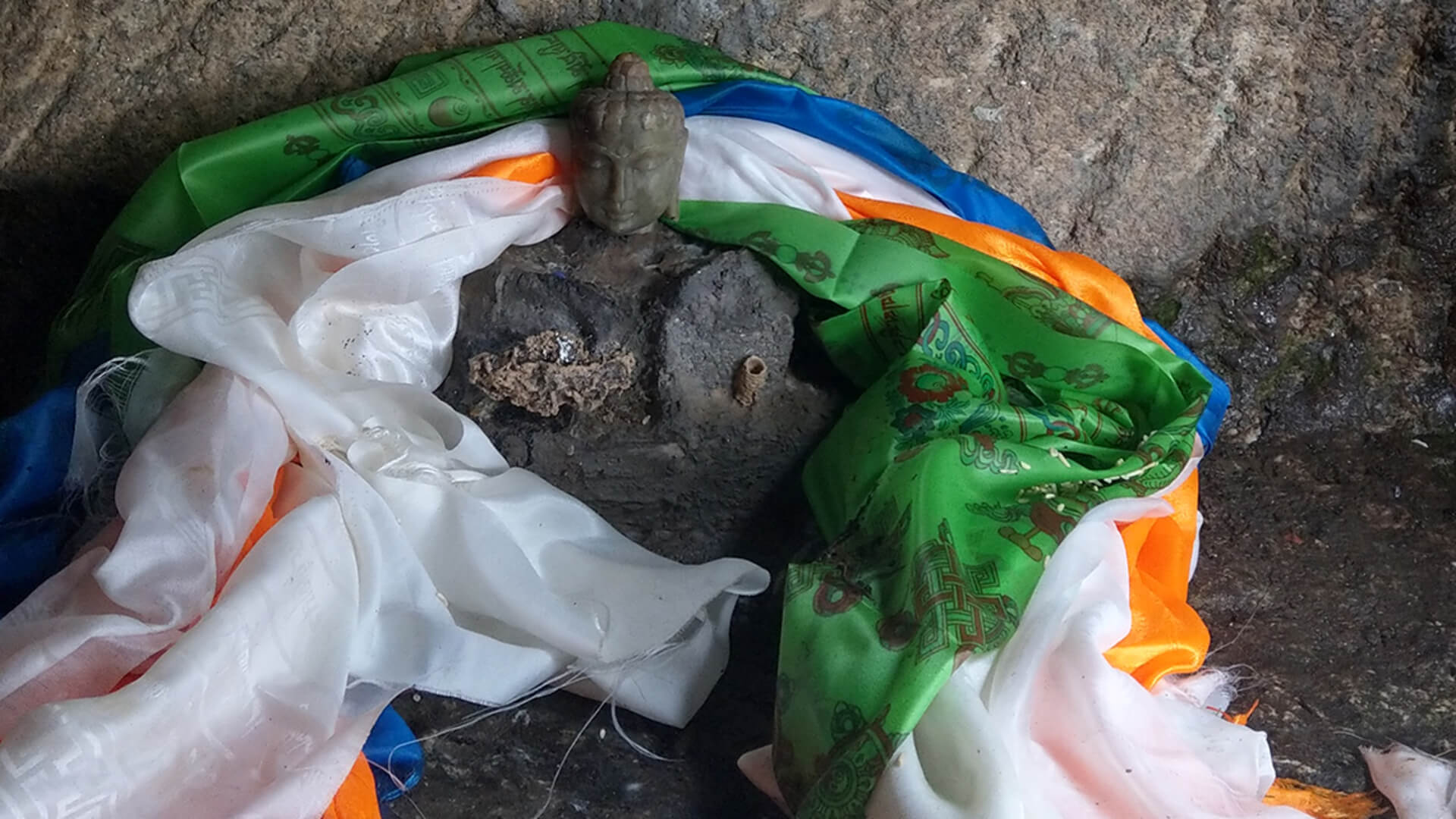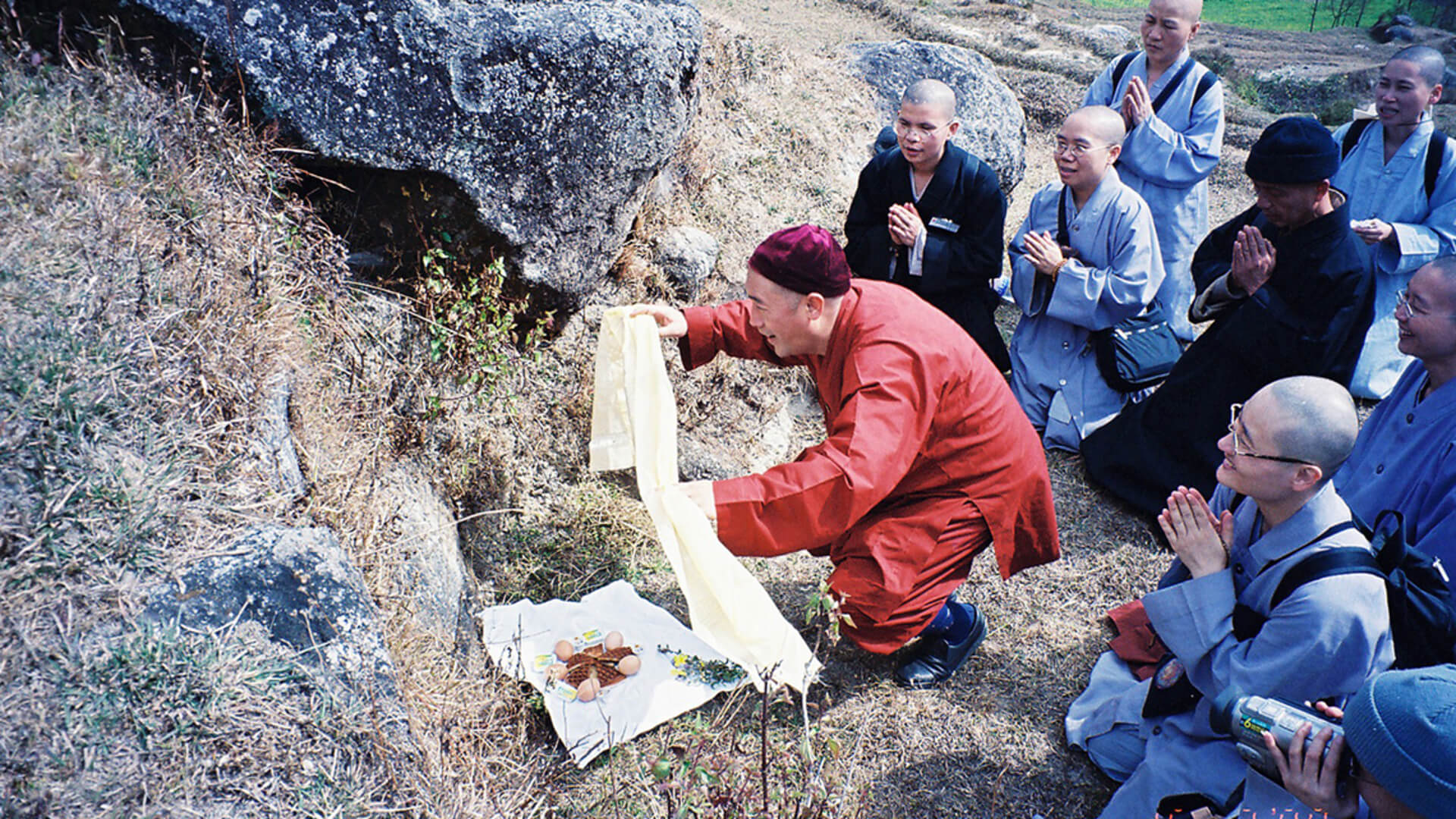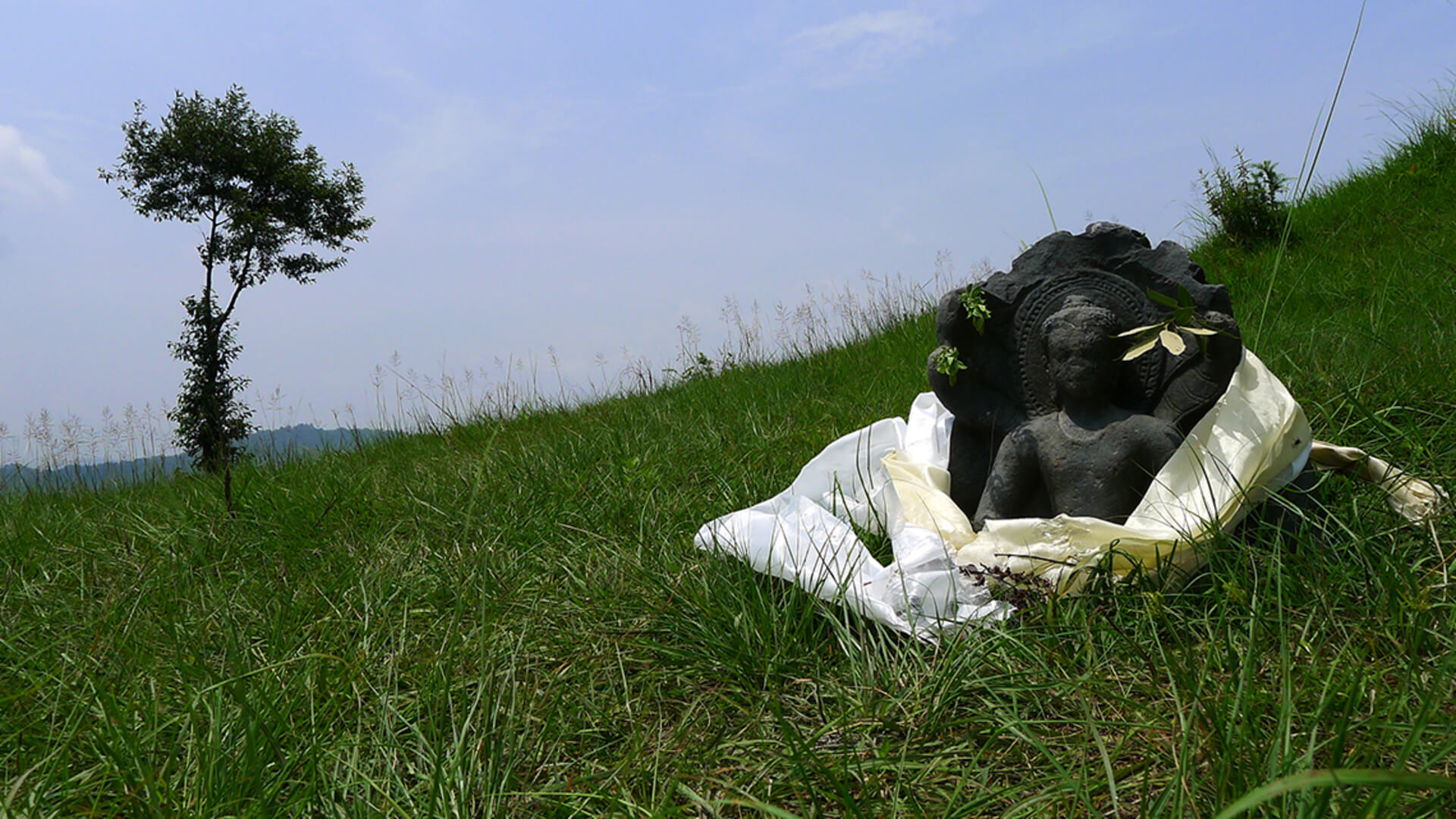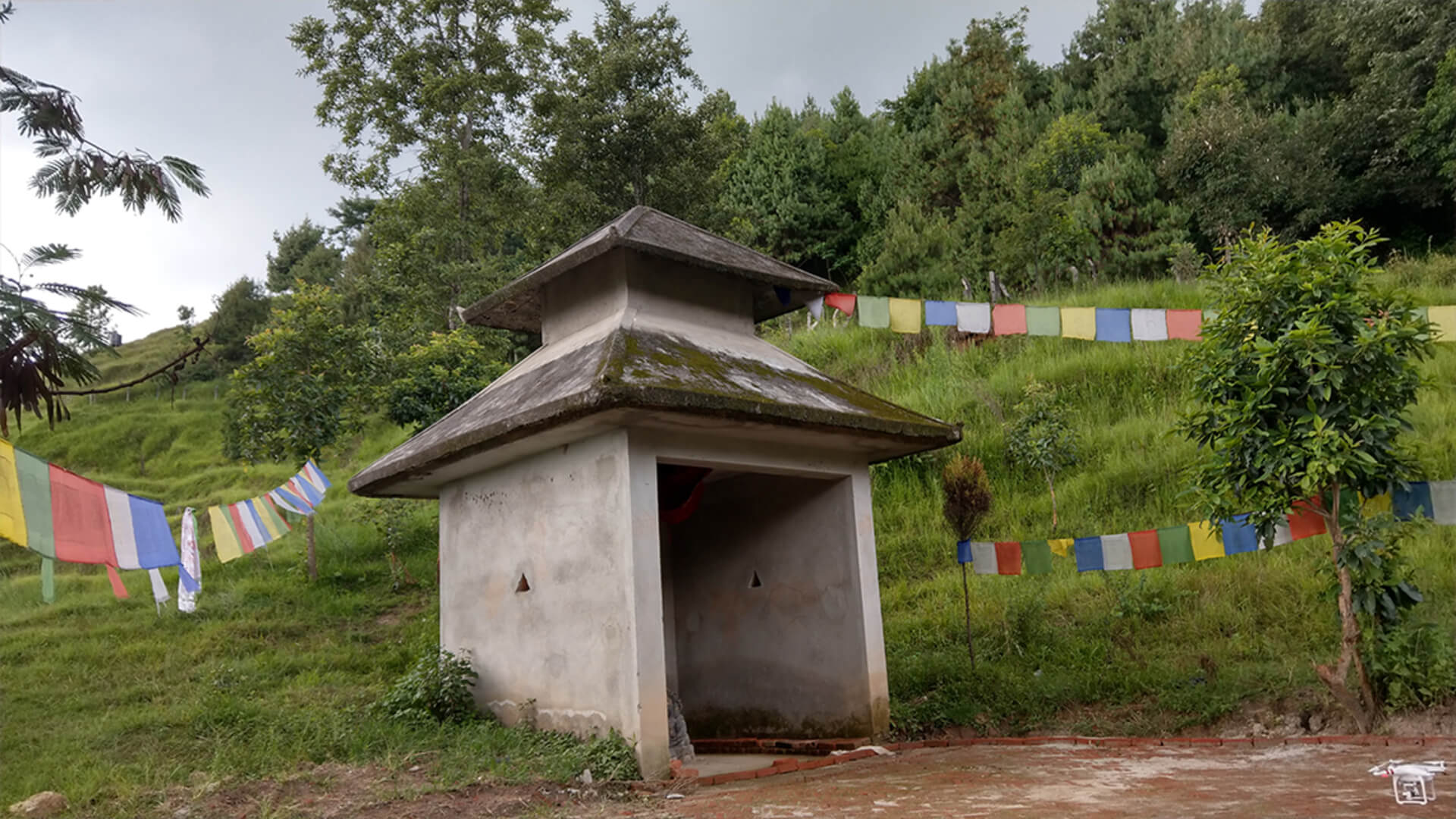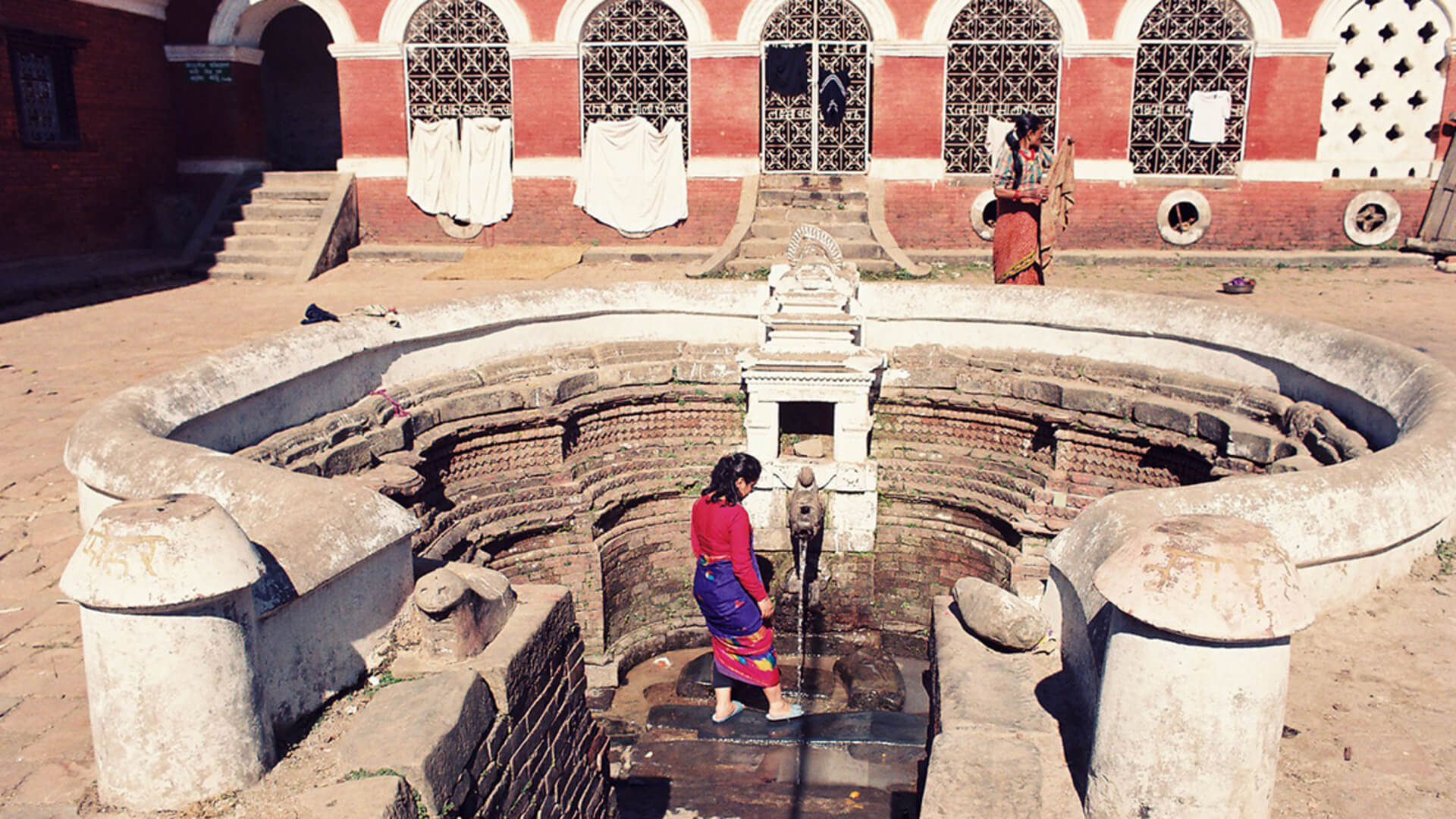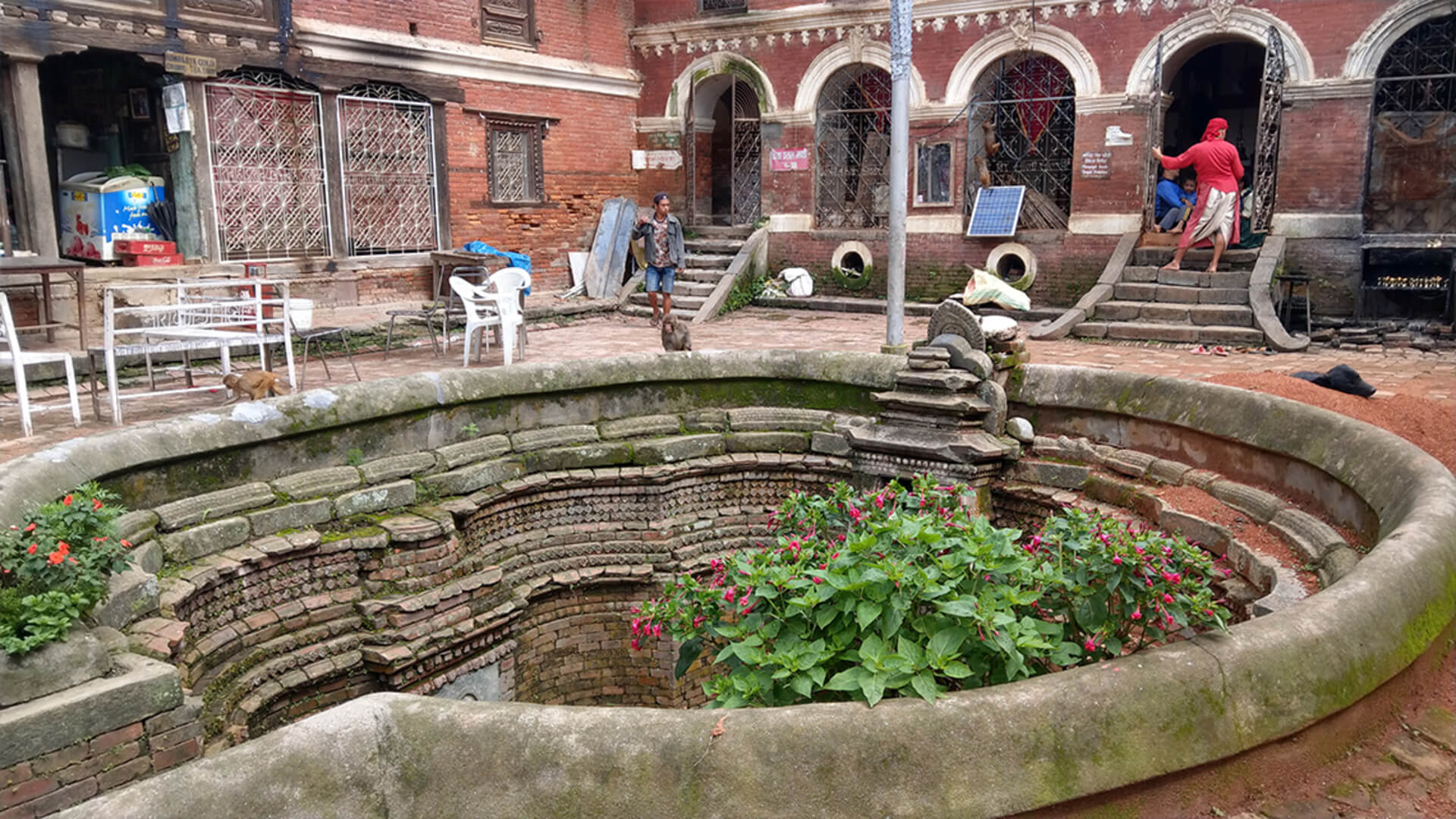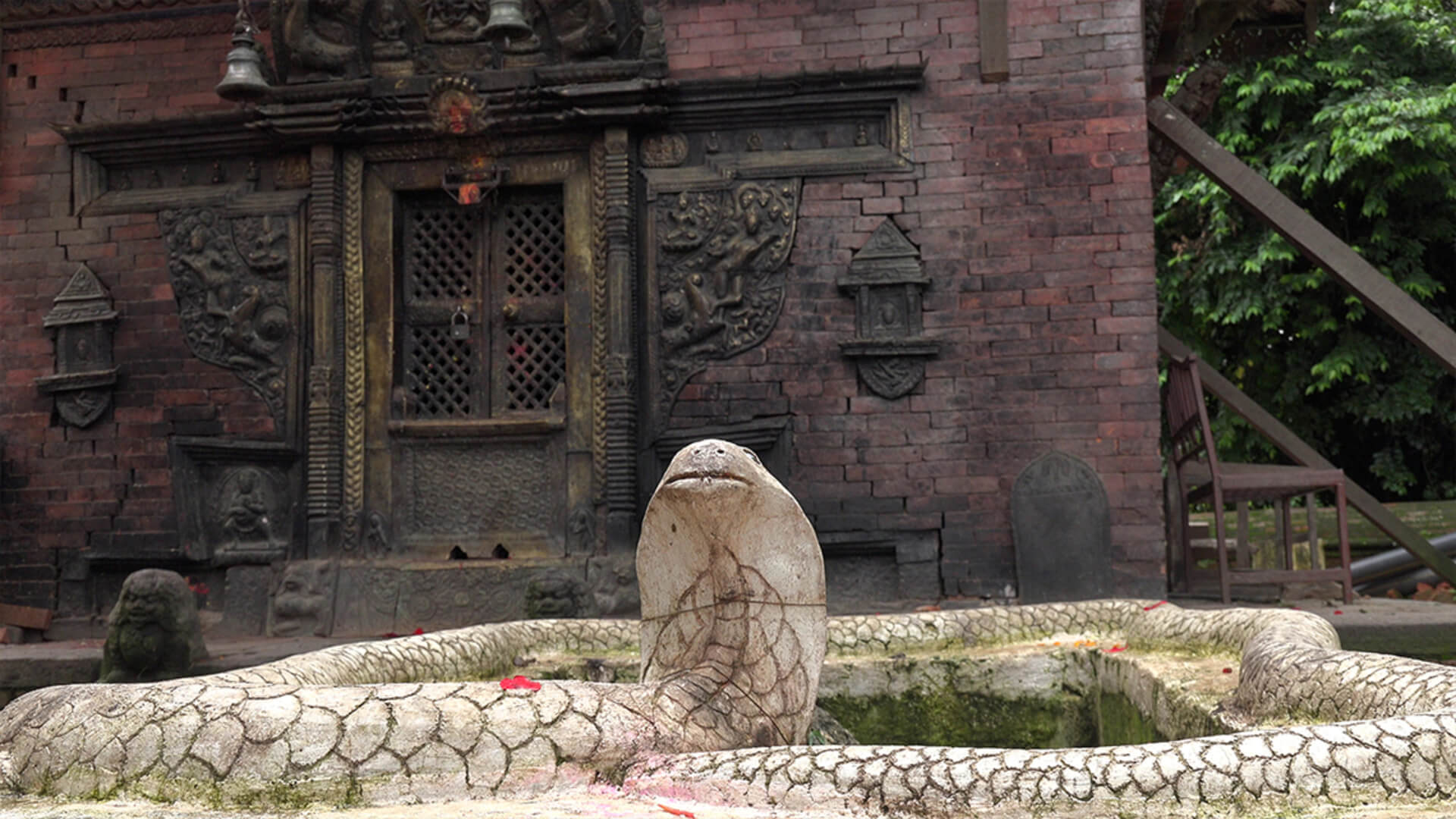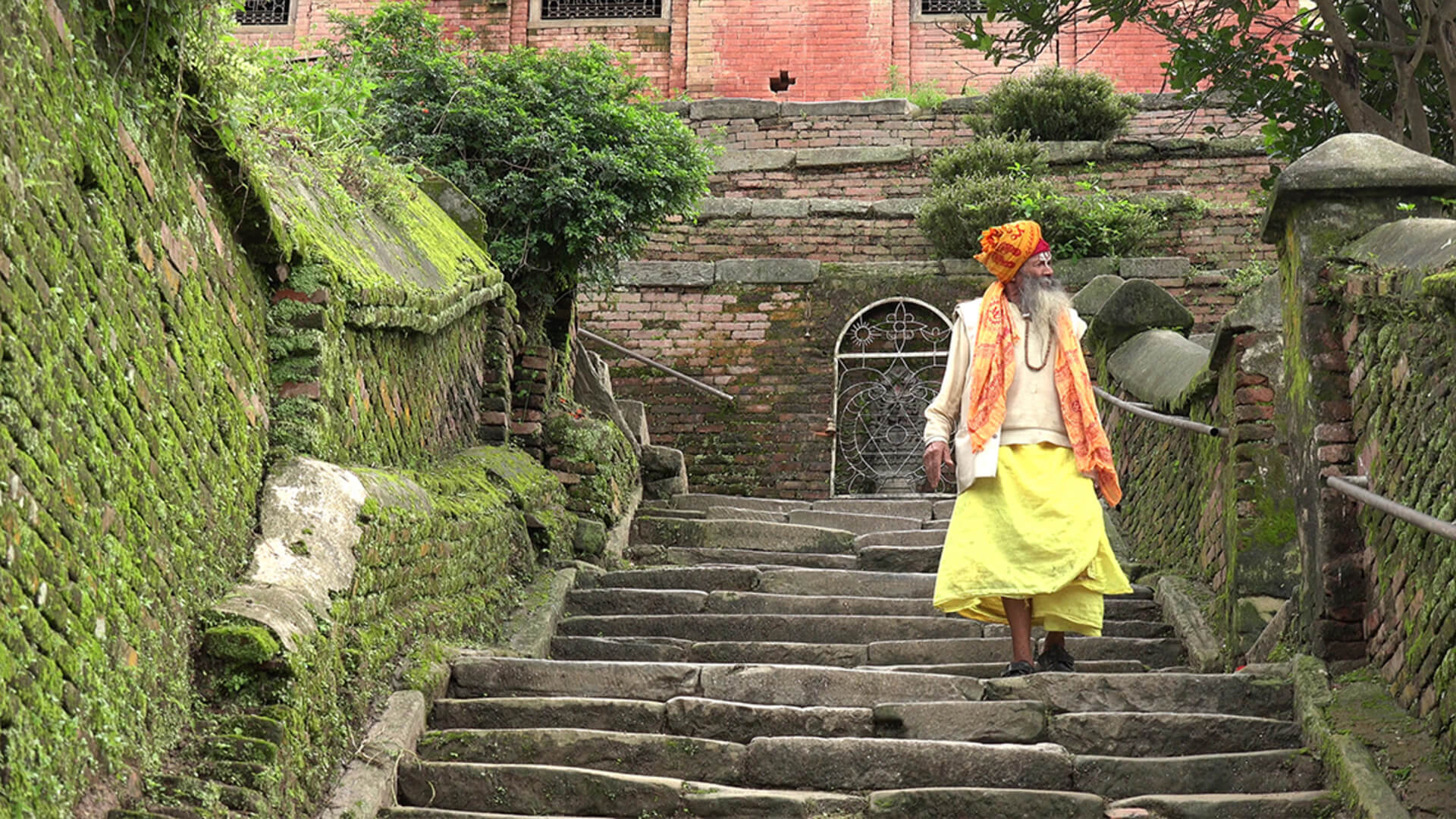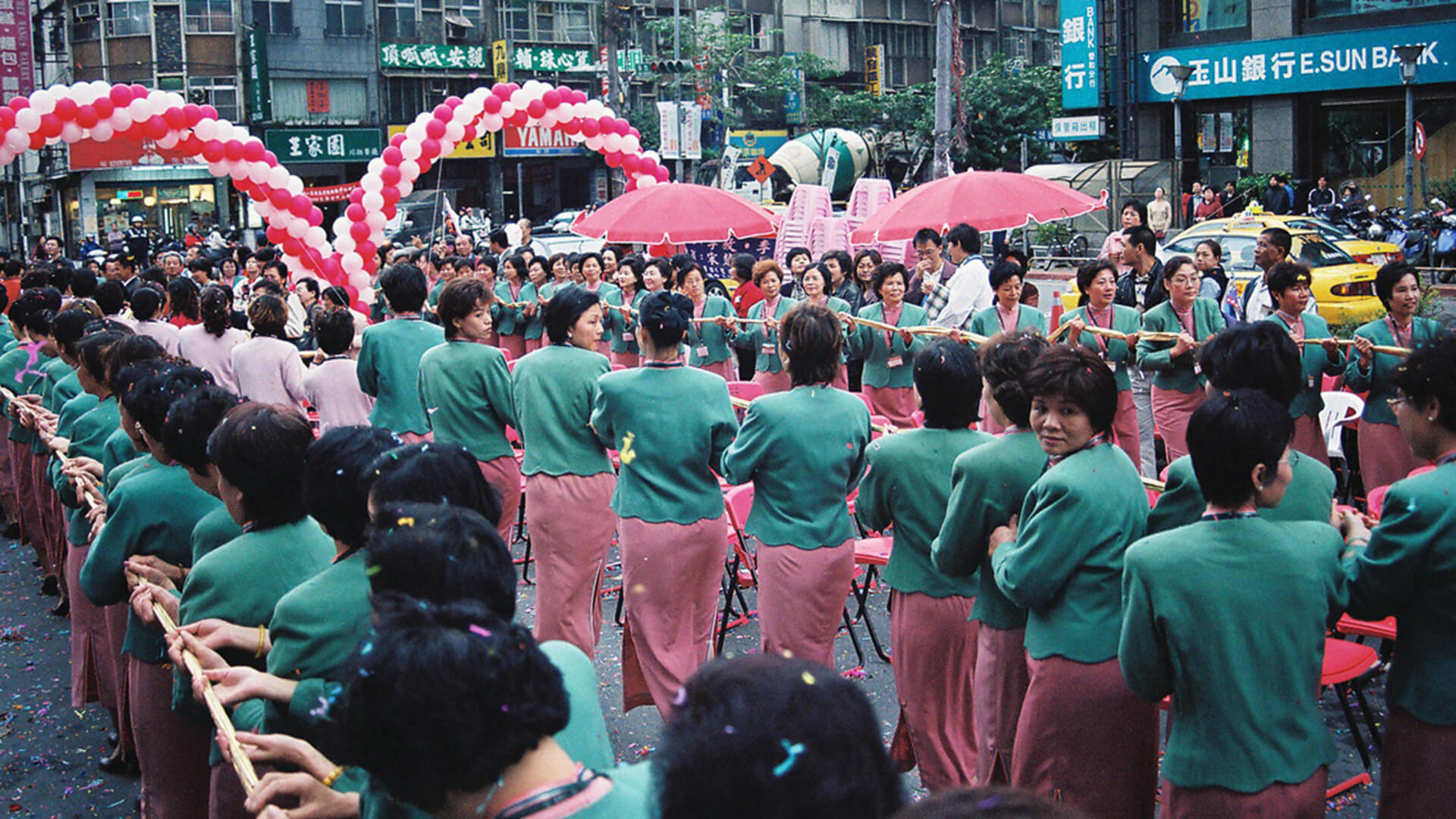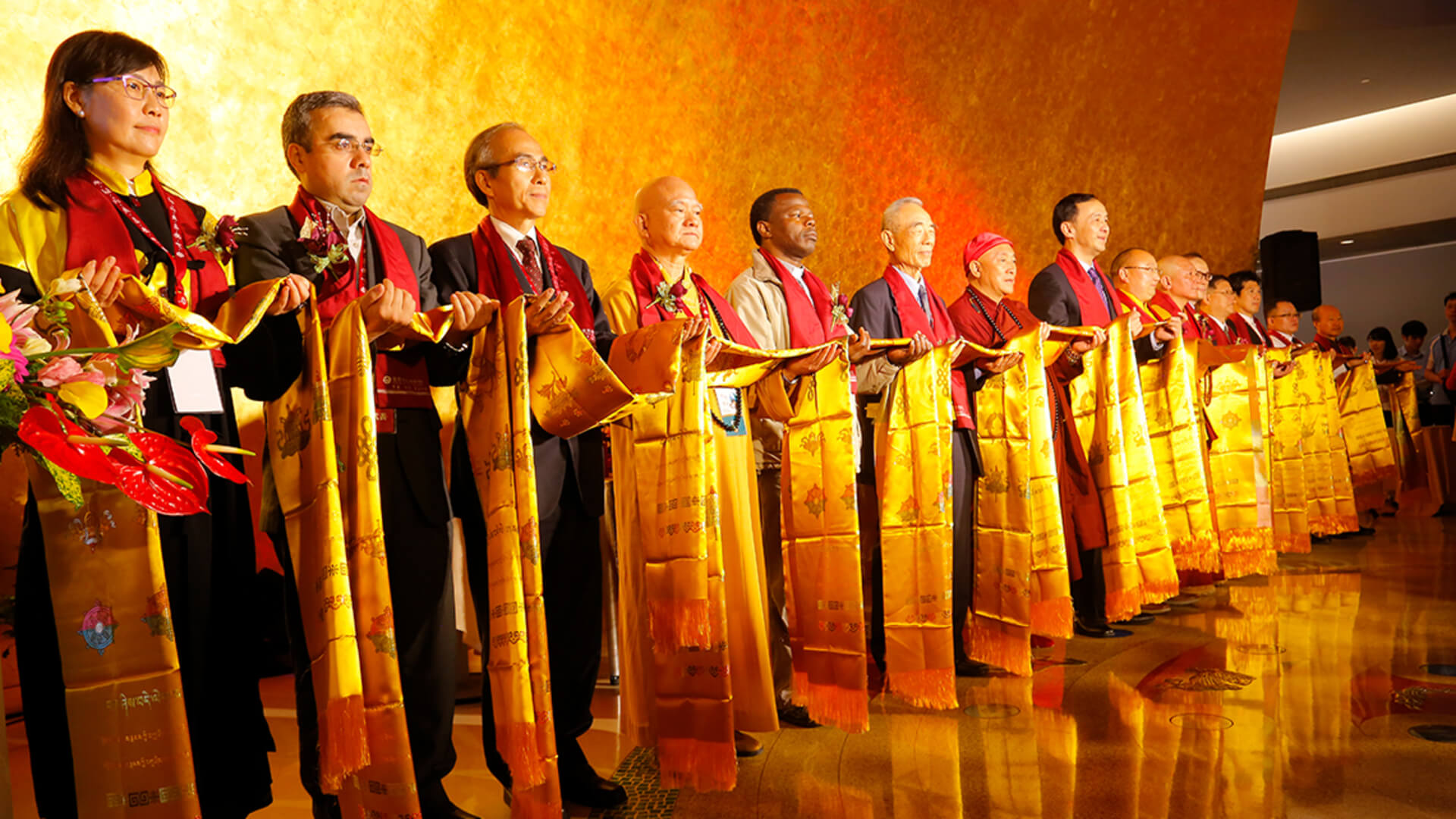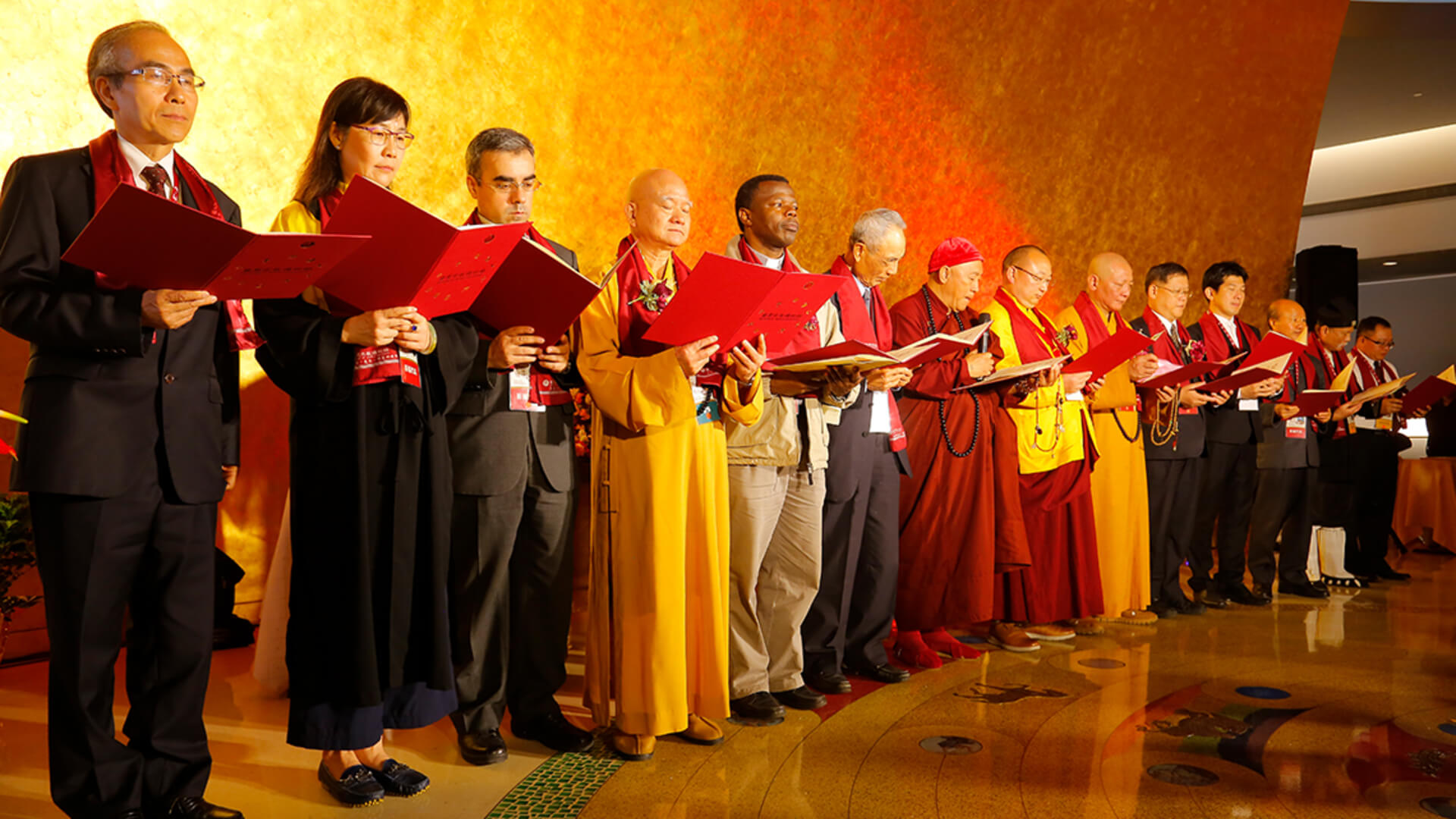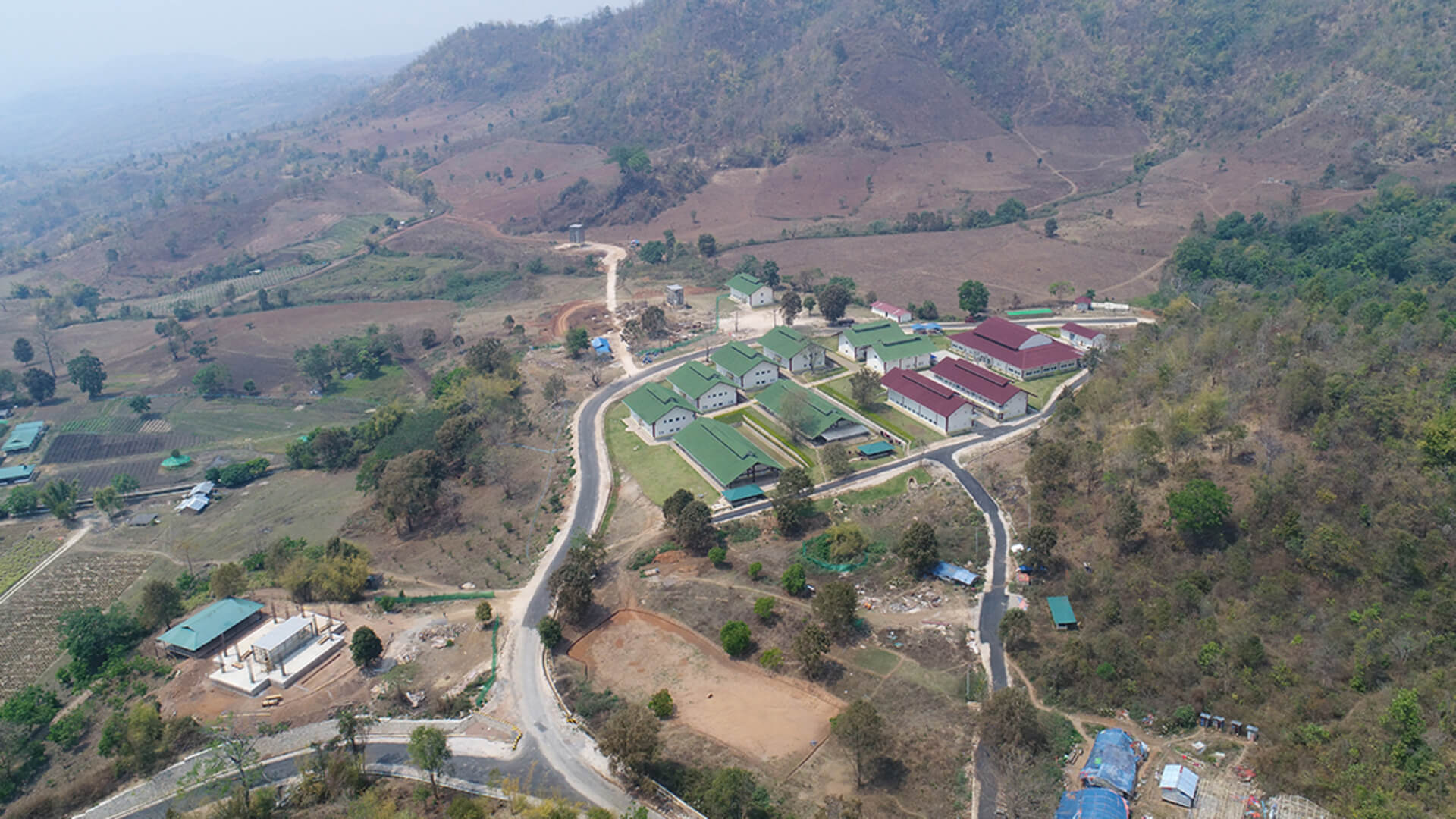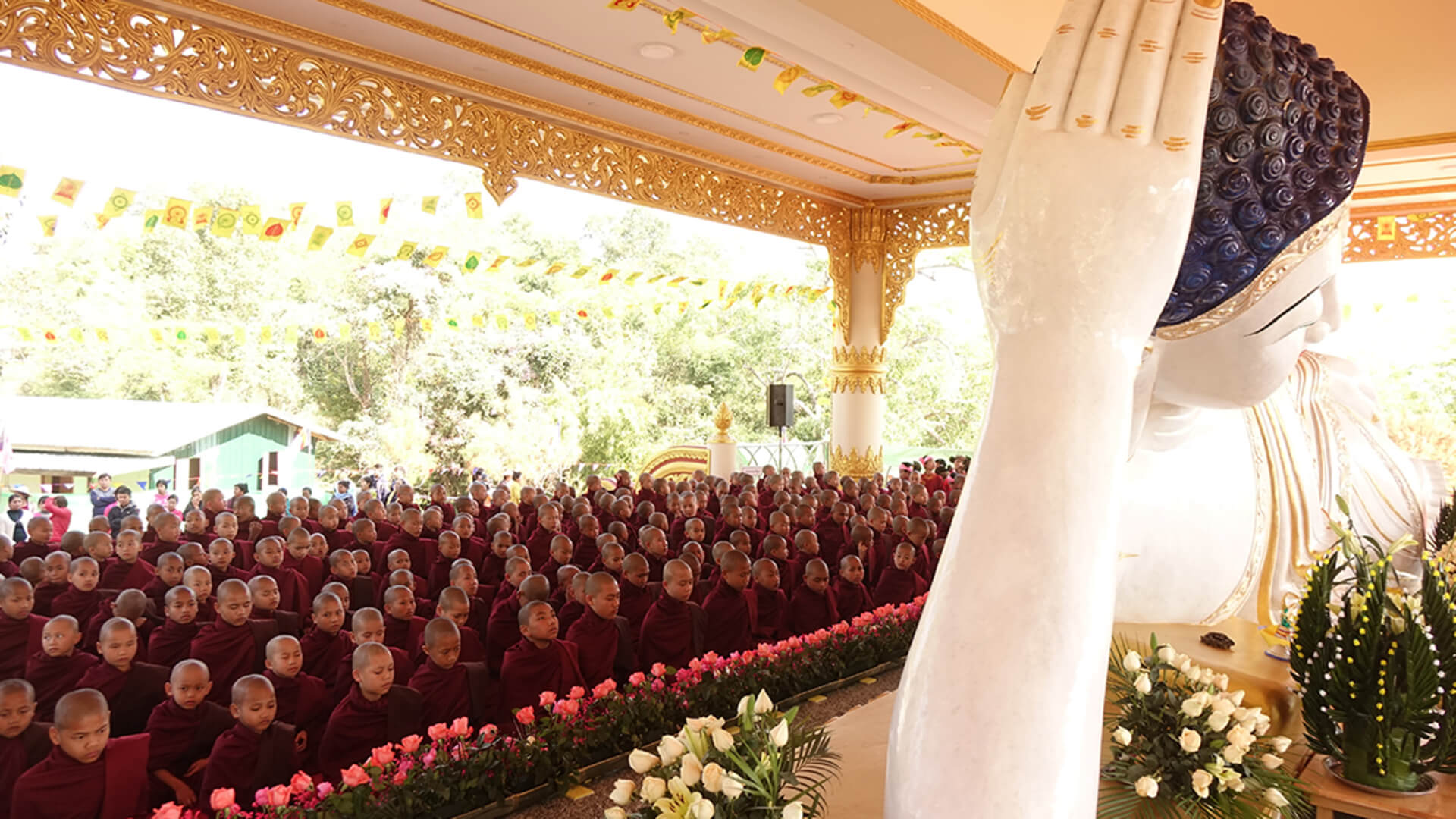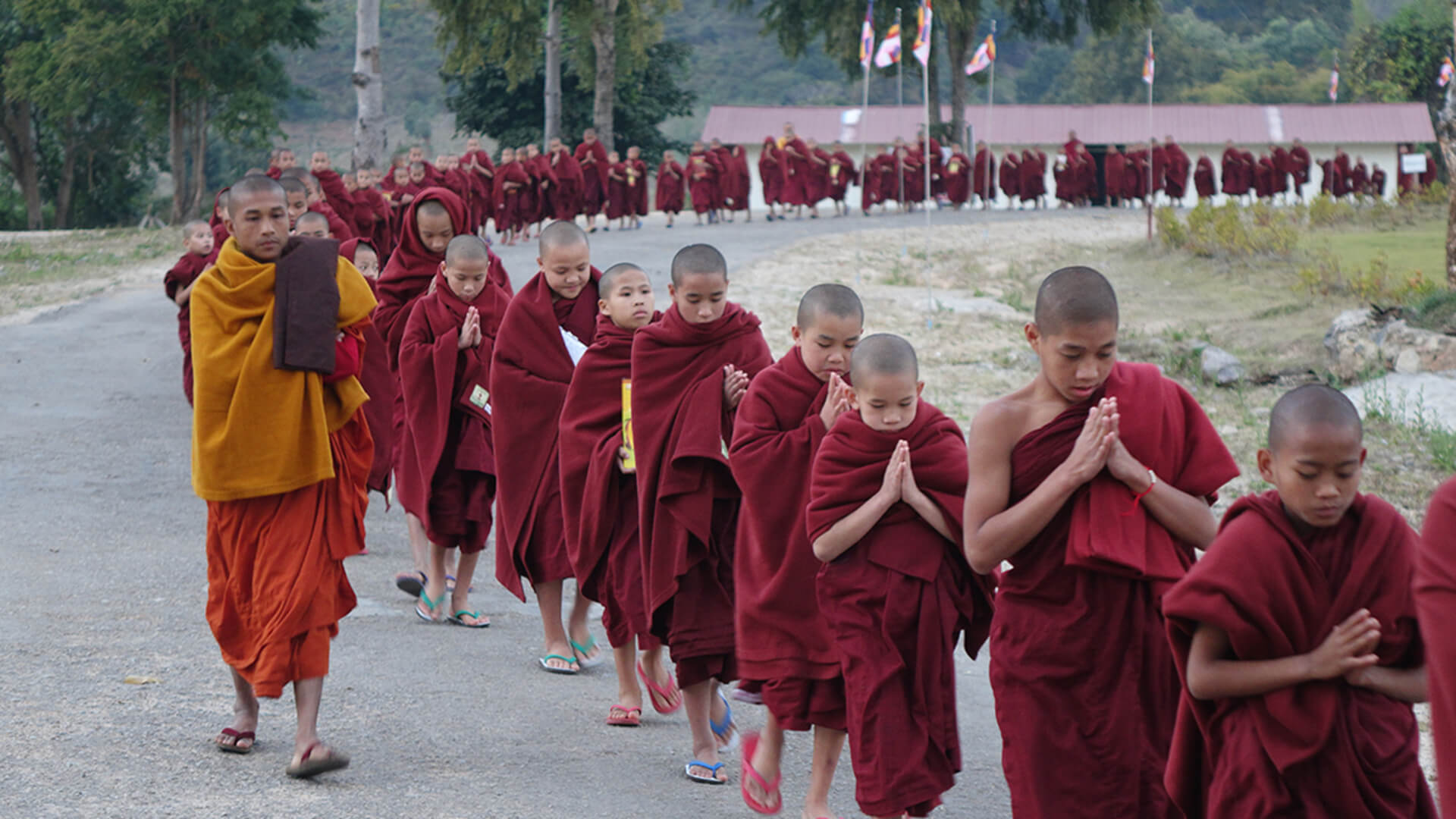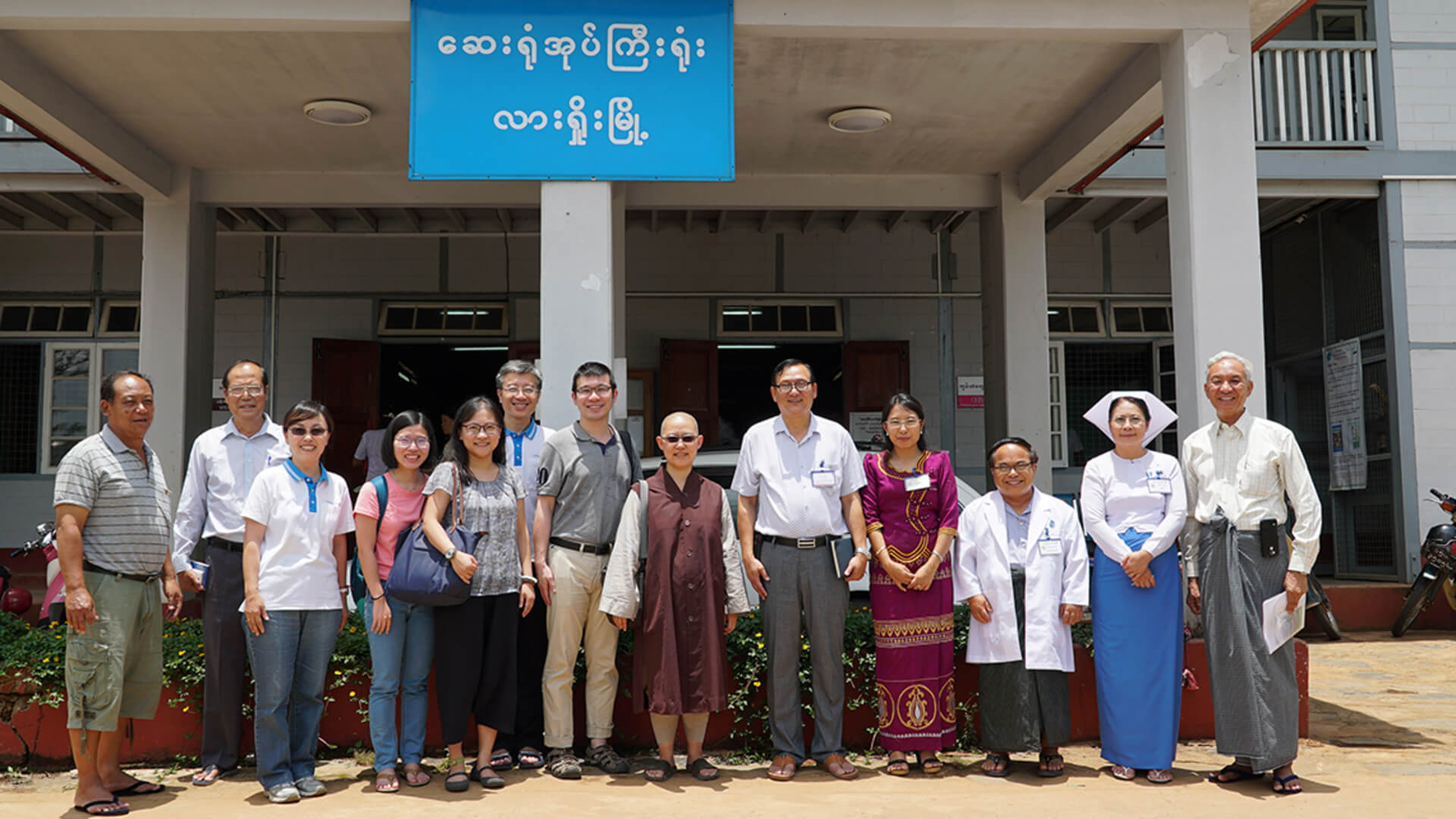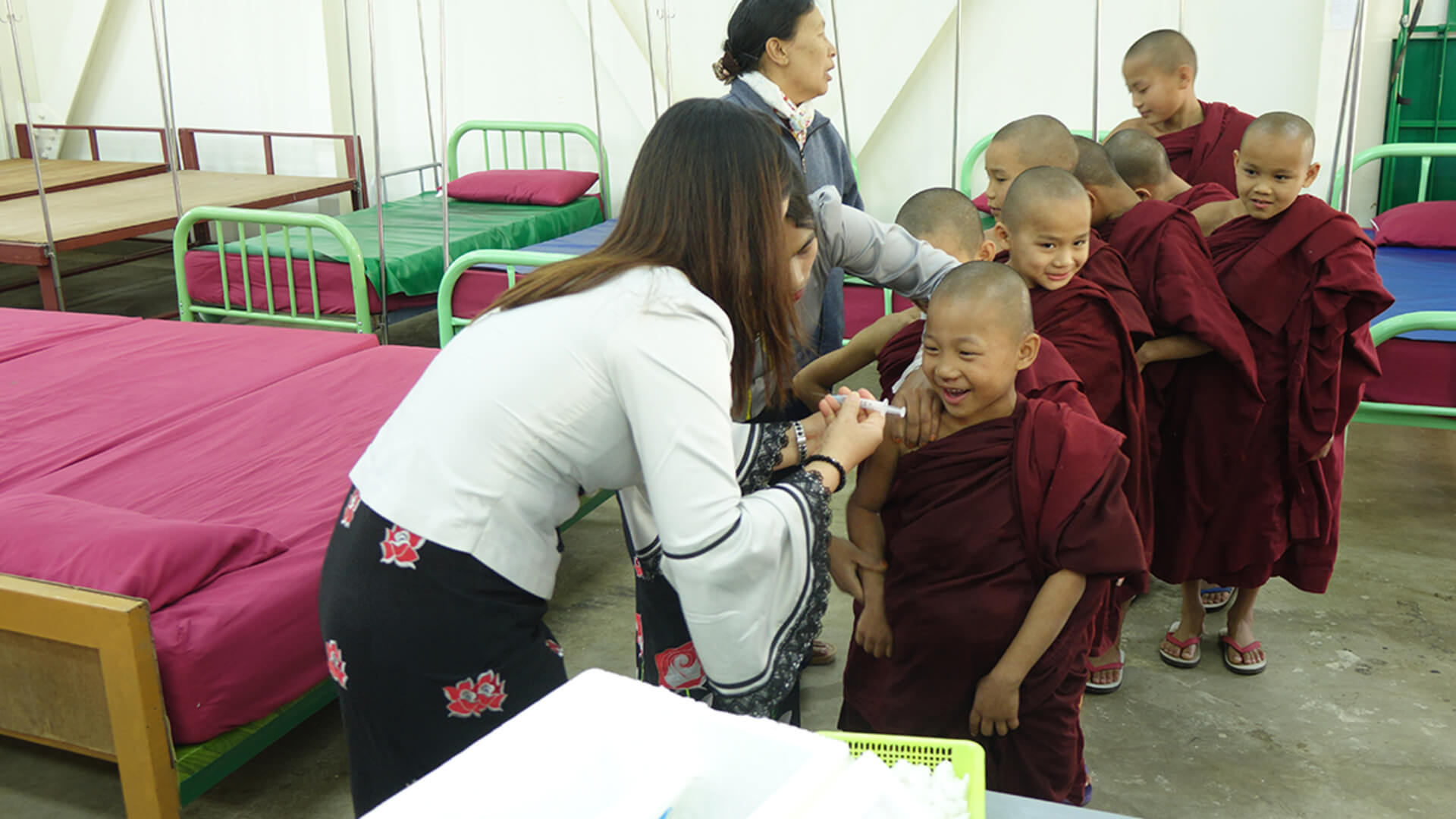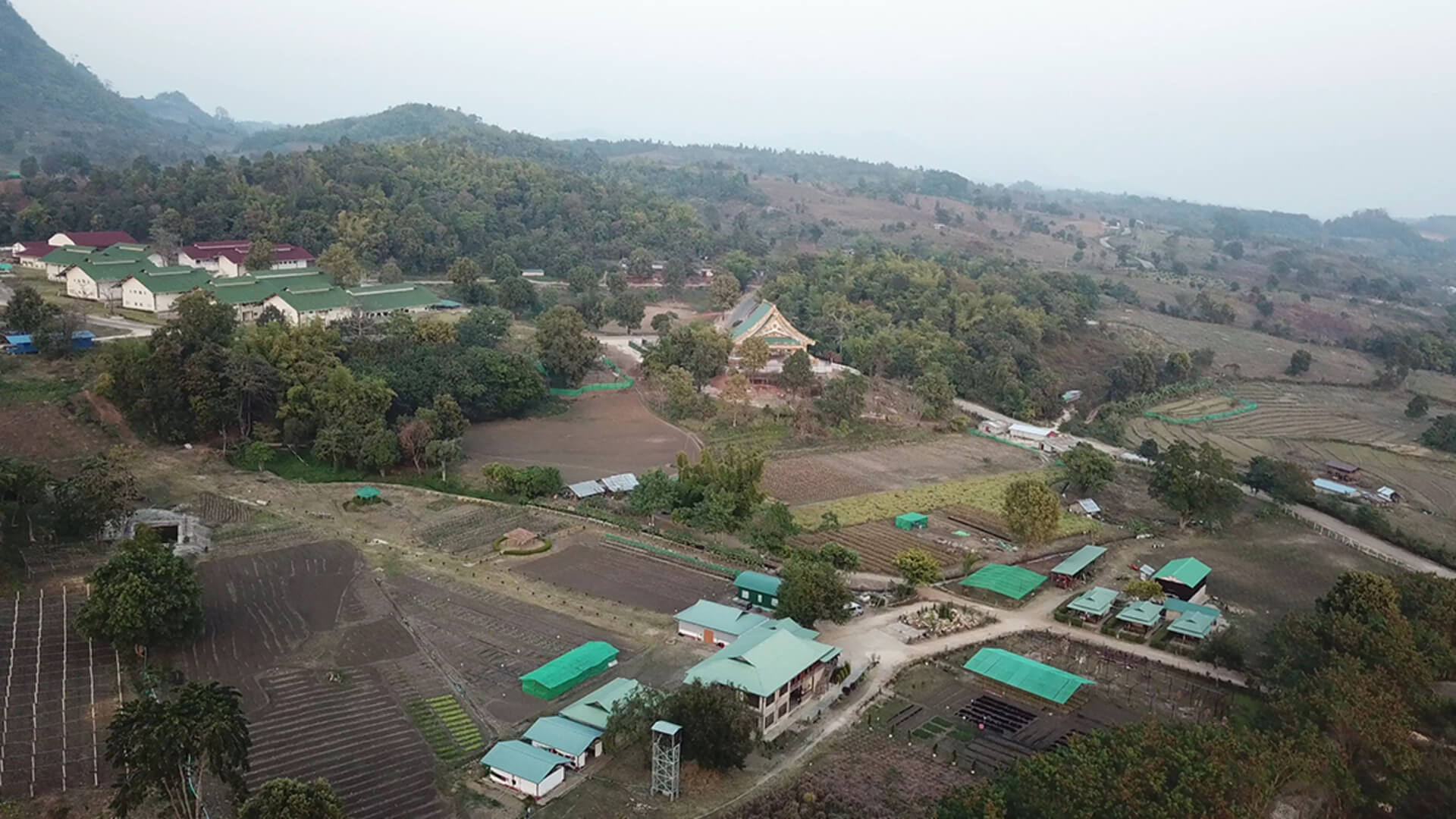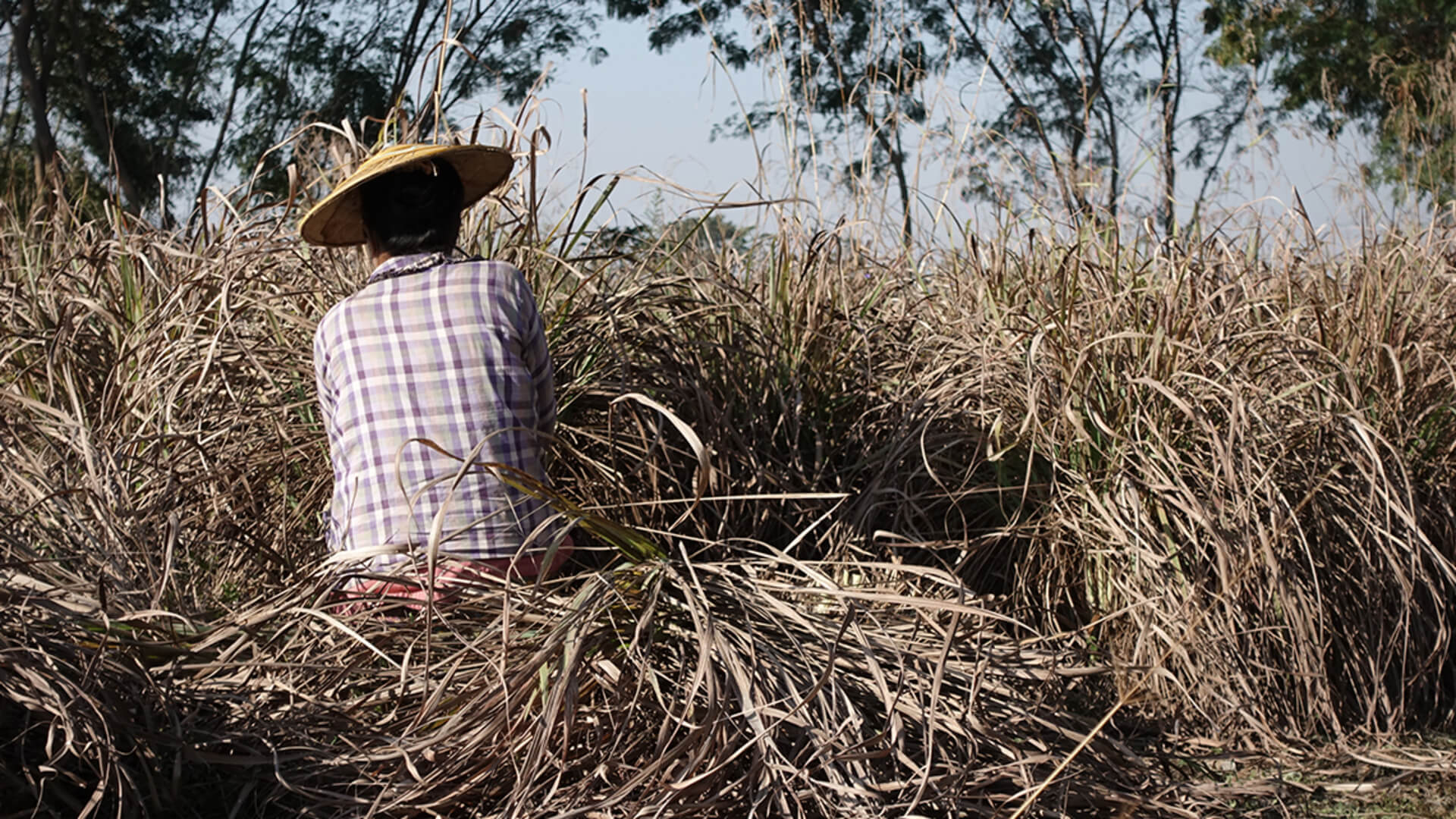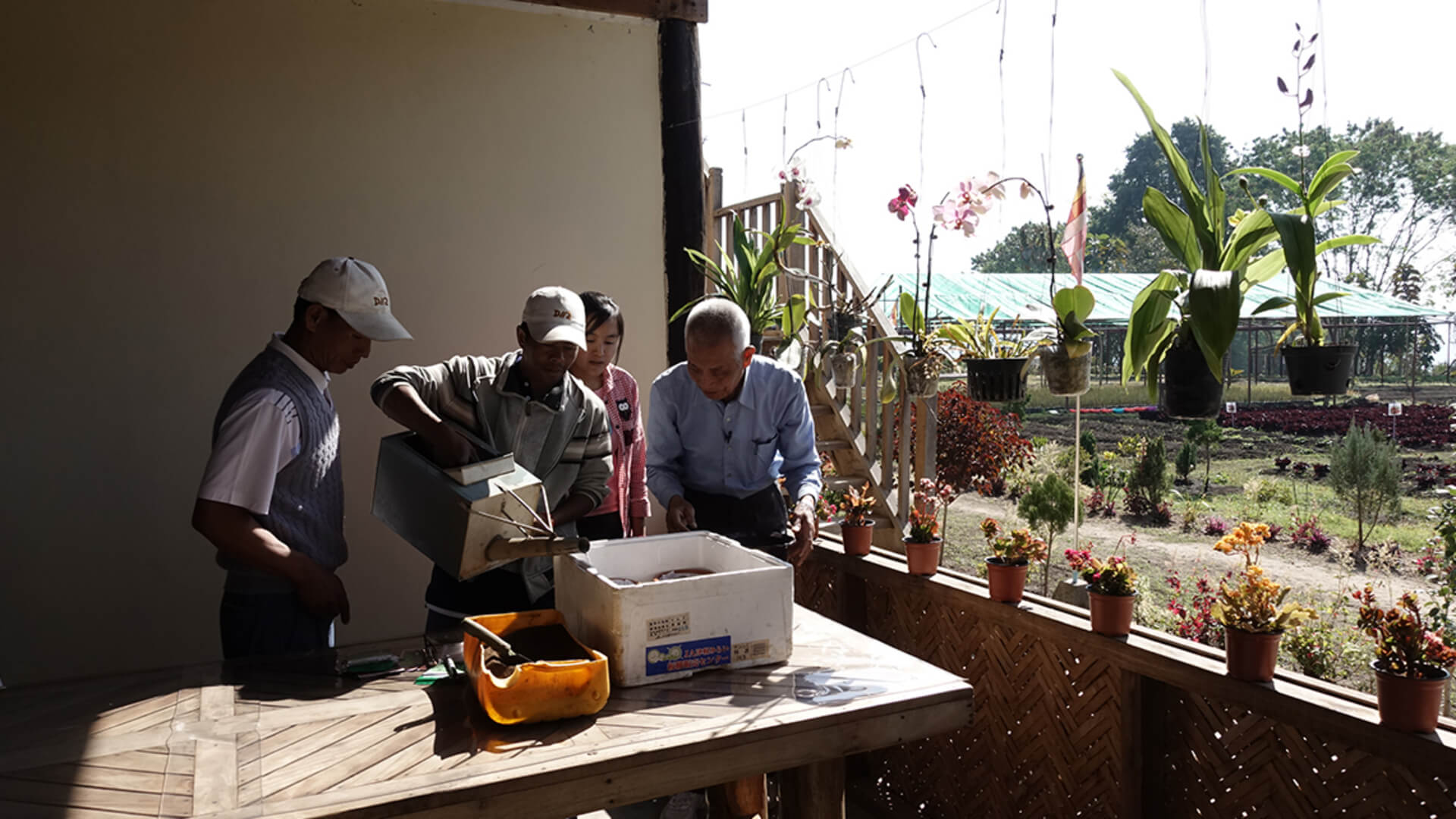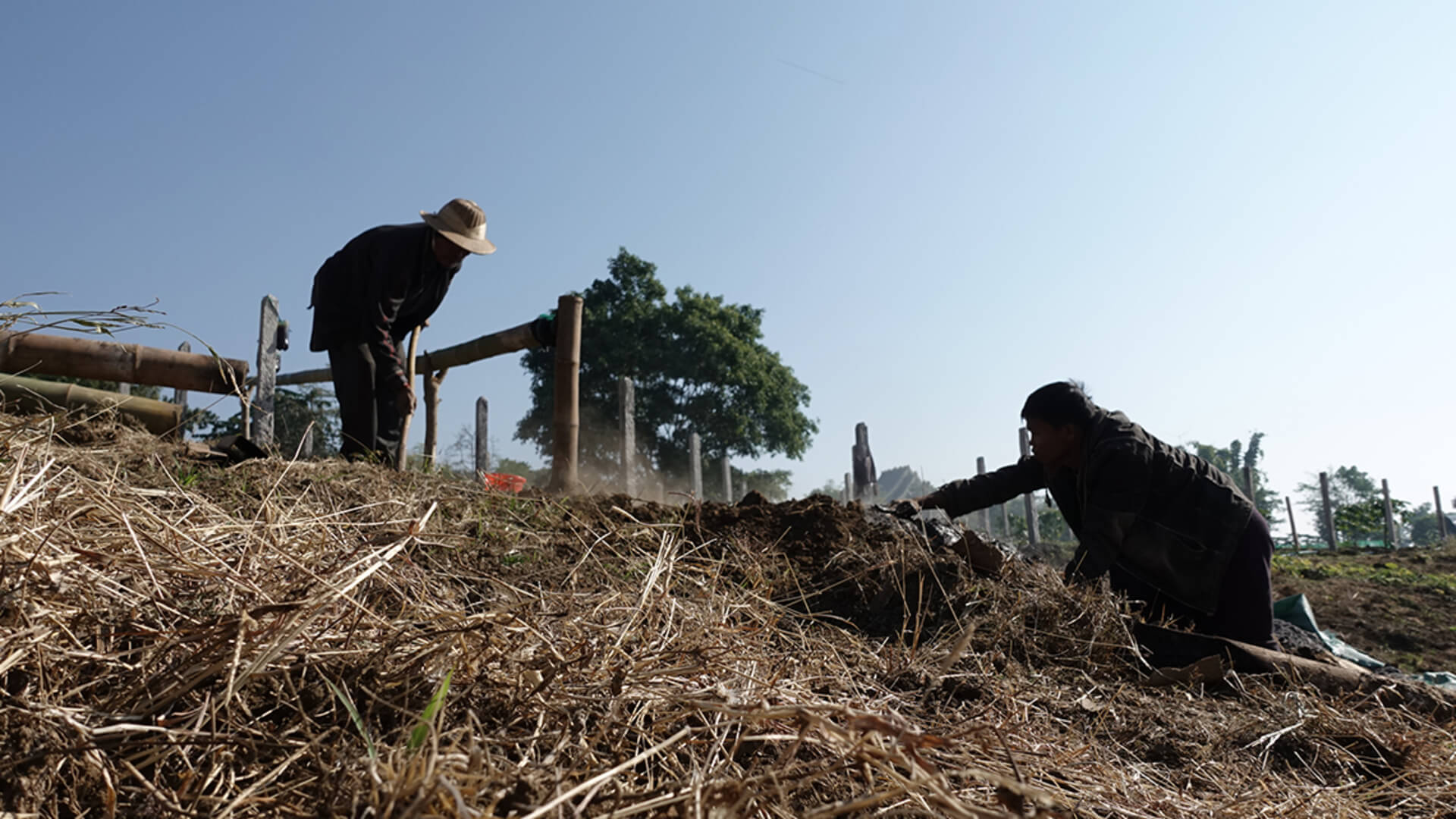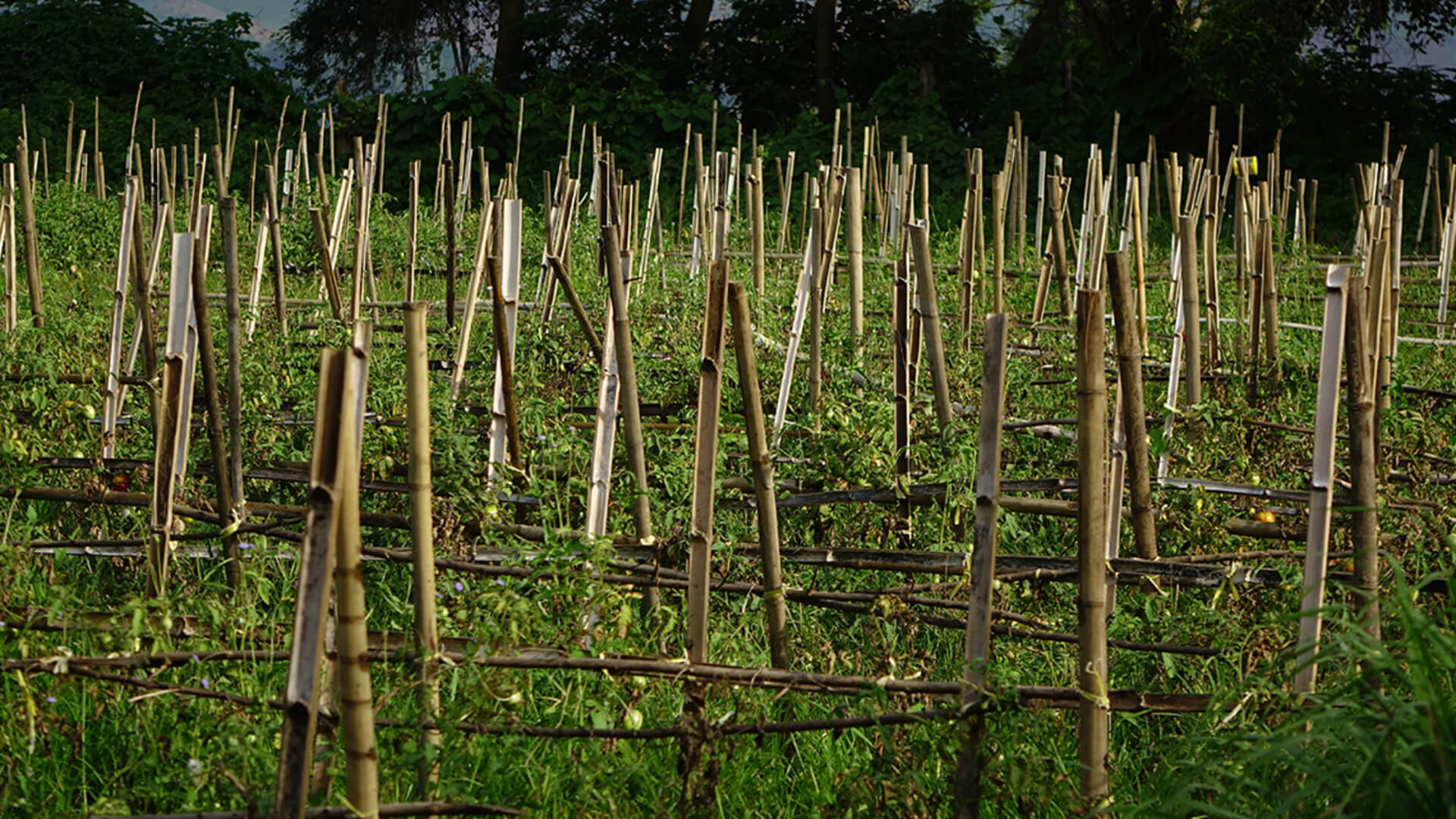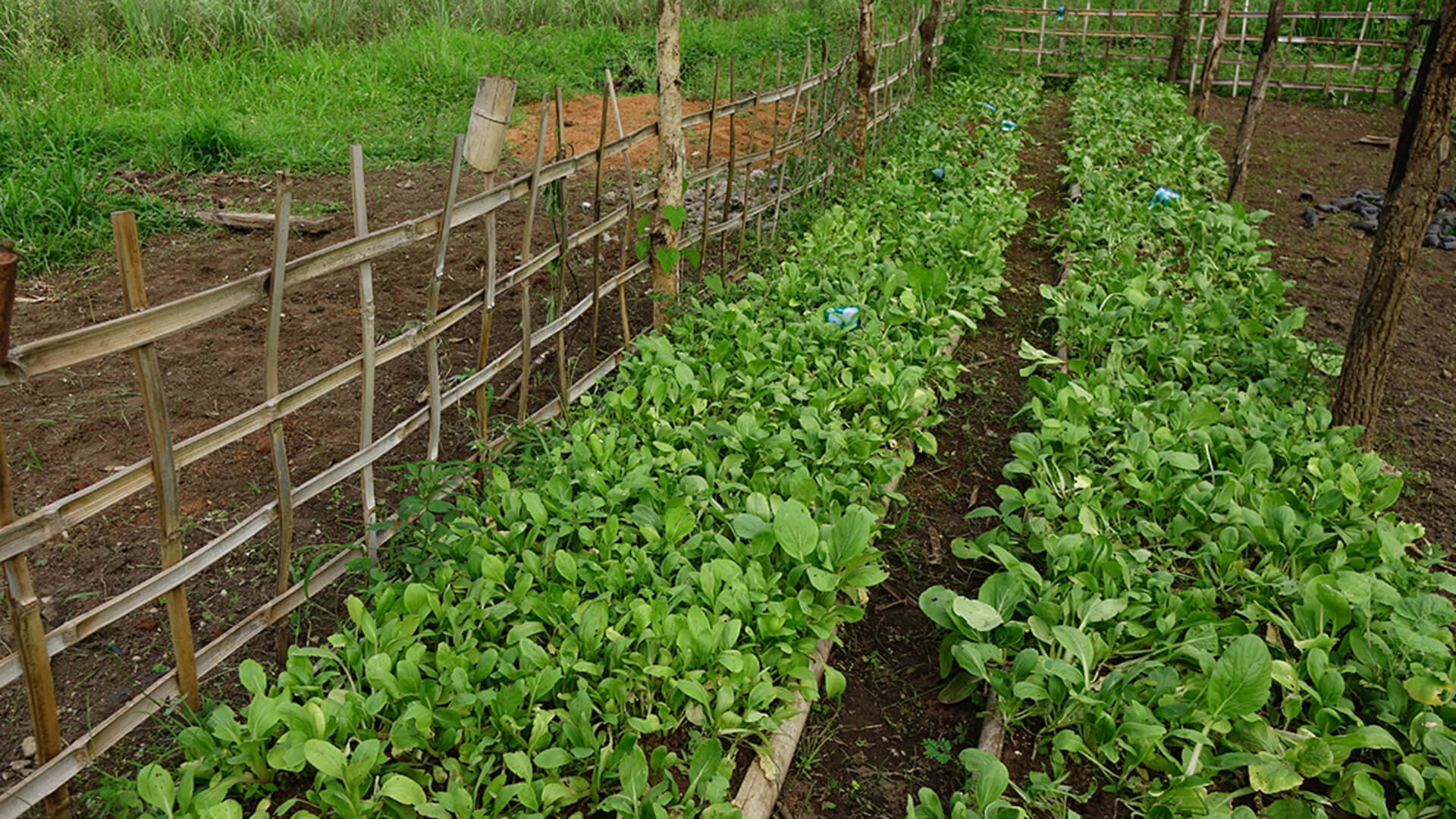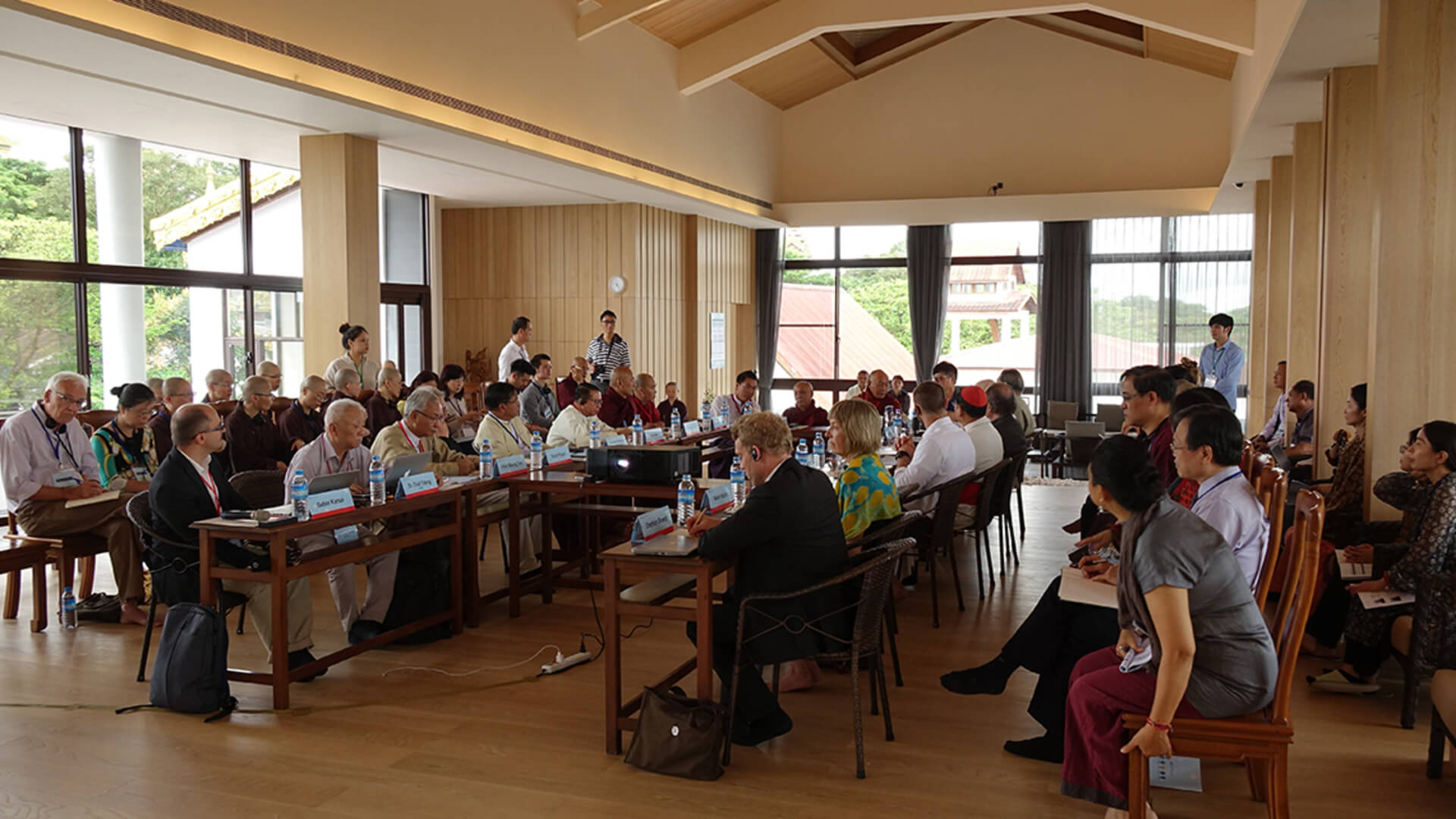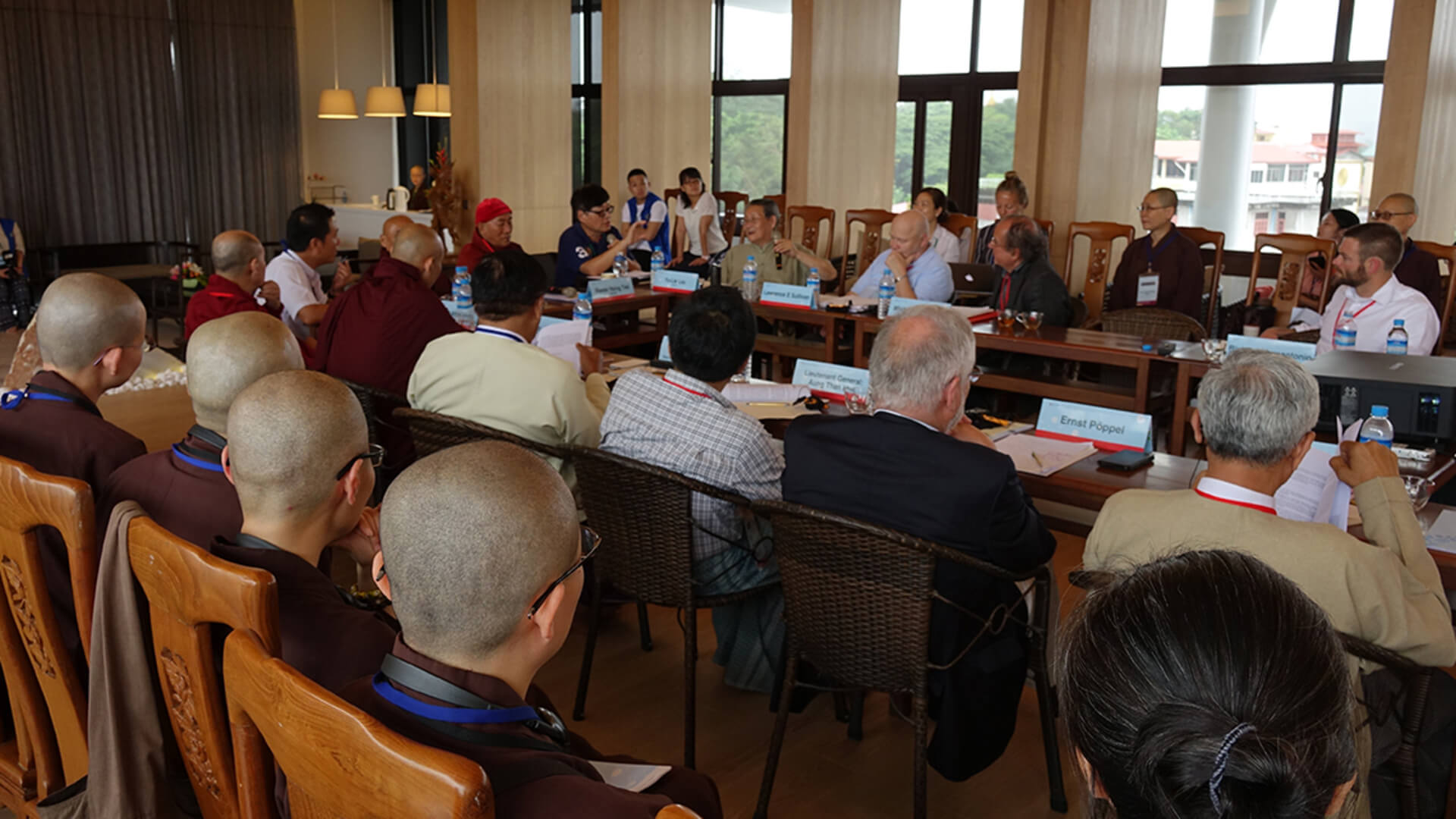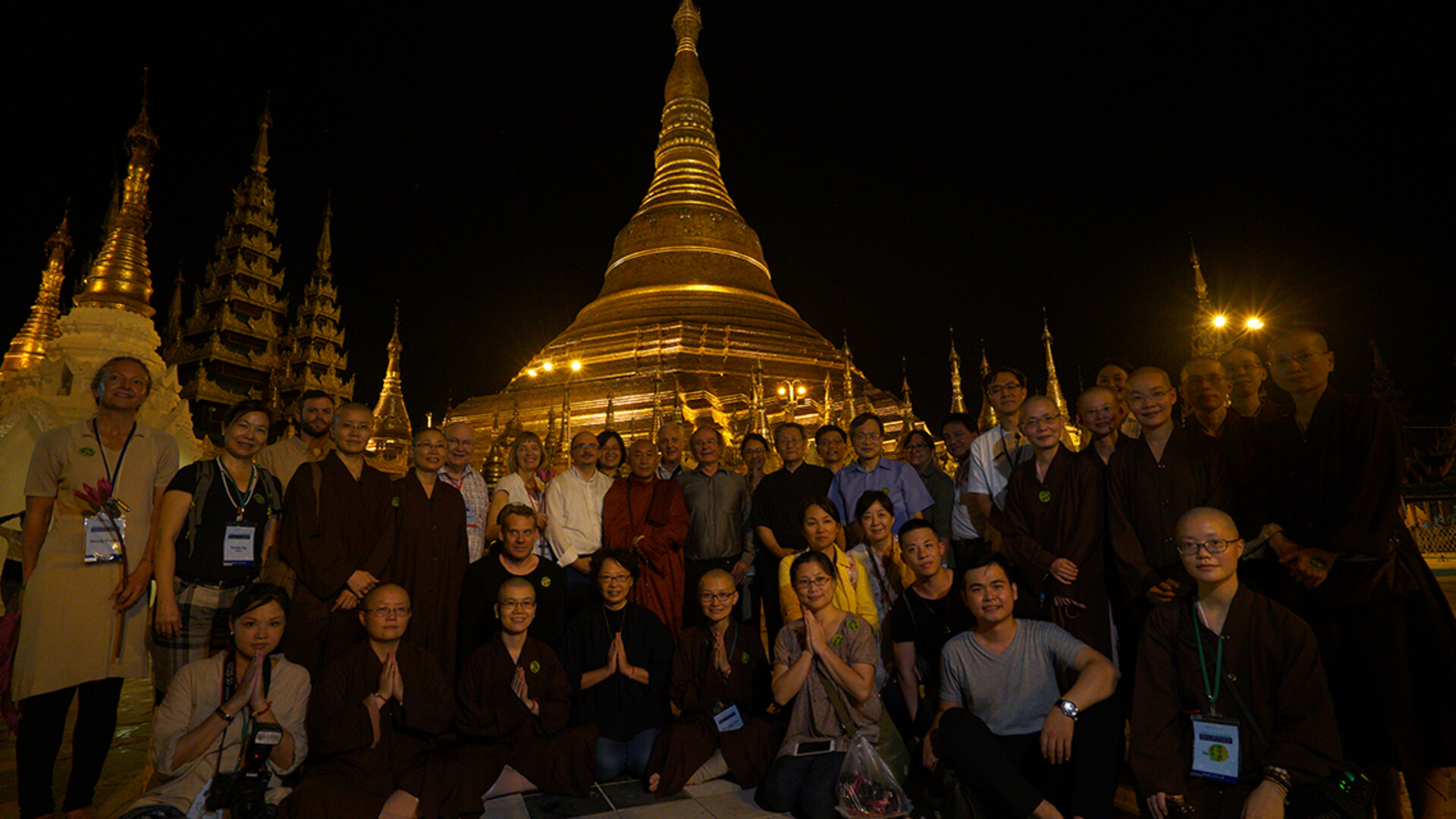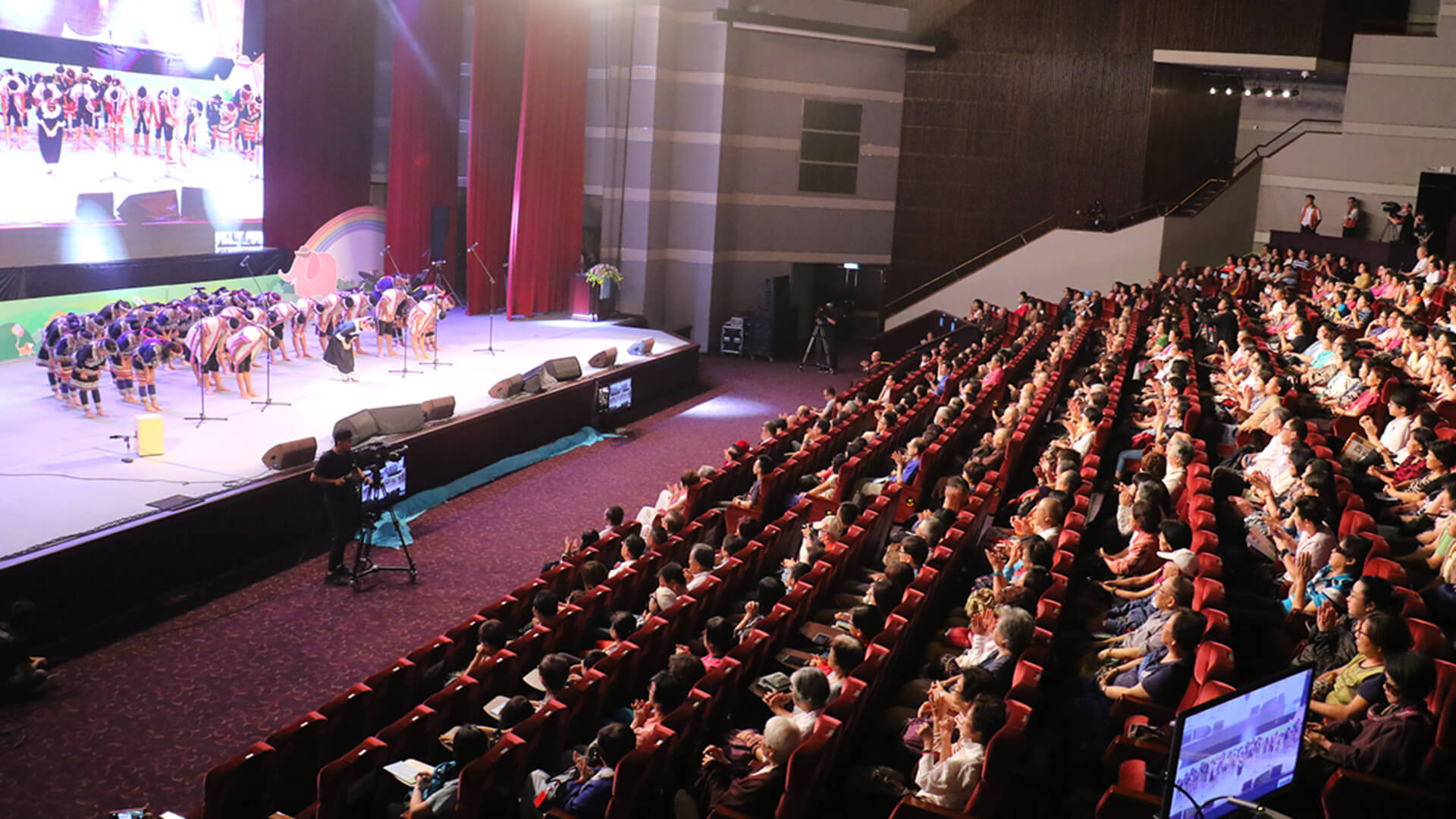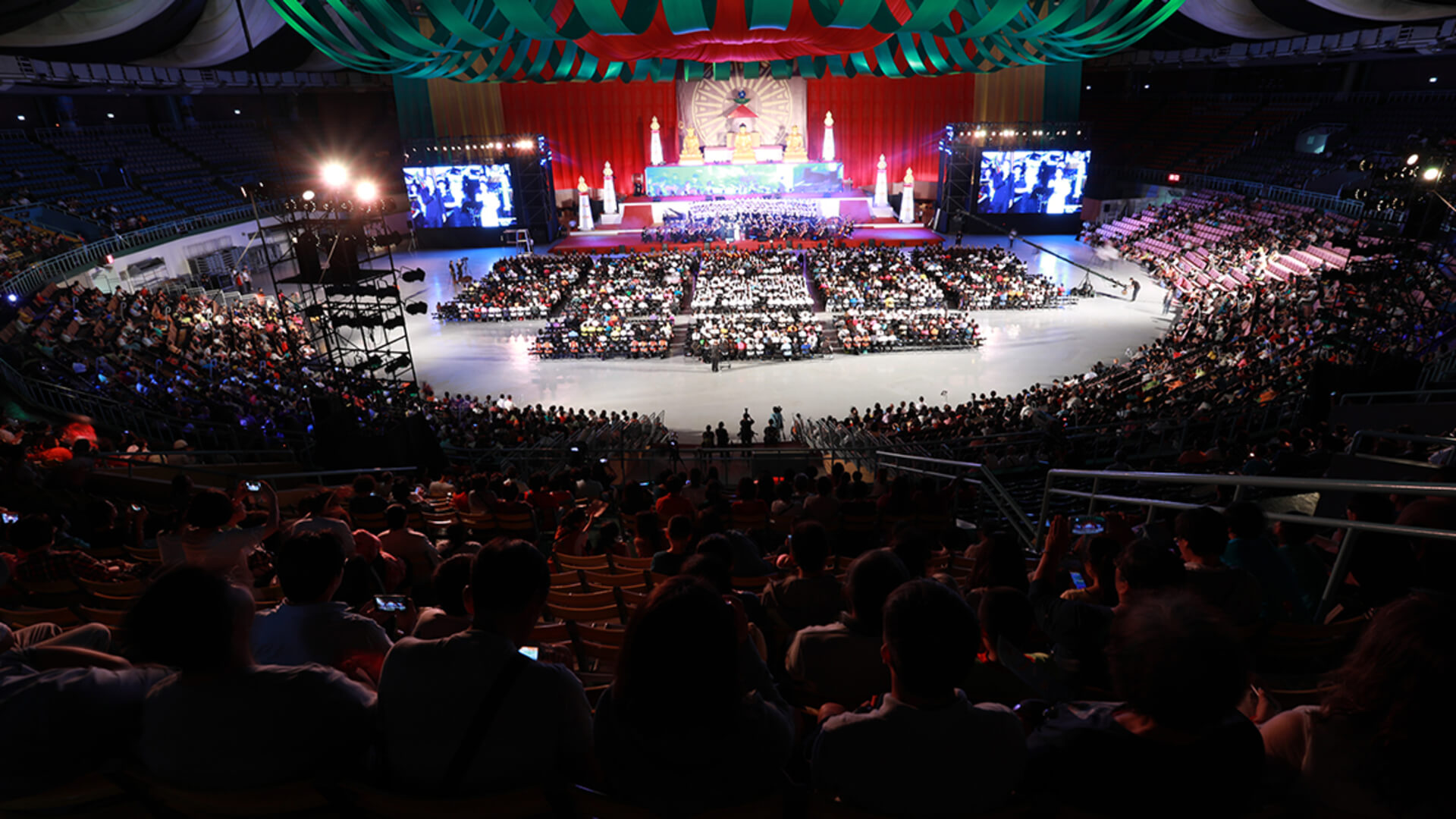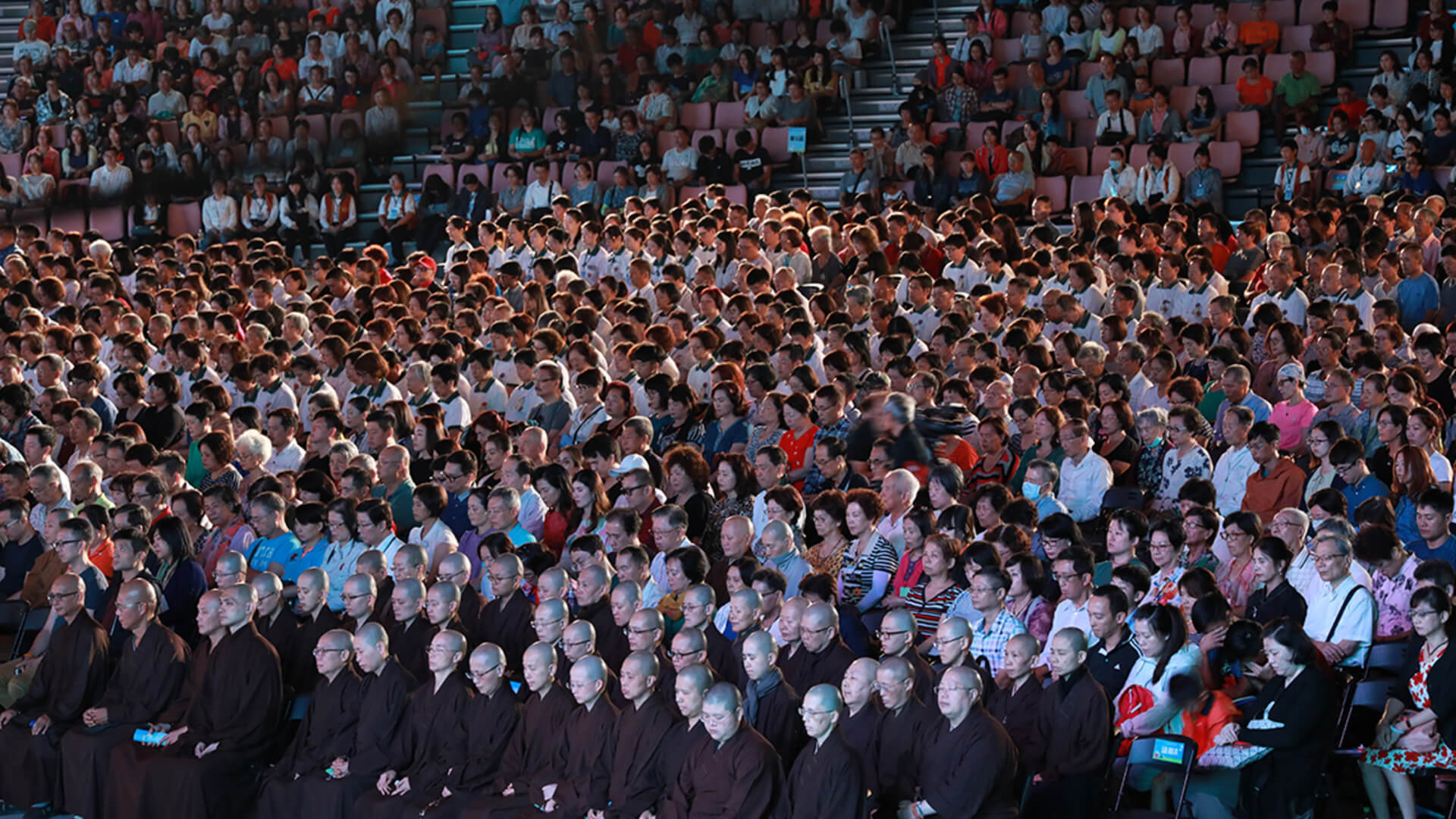It all started with a small village near the Yunnan-Burmese border
Dharma Master Hsin Tao was born in 1948 in the Laikaan Village in the Laidao mountains of the Lashio area of Myanmar(Burma). Up in the mountains near the border to China’s Yunnan province, the small village was in the region usually referred to as the Golden Triangle.
The Laikaan Village was a poor community tormented by war. There was a blacksmith by the name YANG Xiao-Tsai, who would roam about the borders for odd jobs by crafting orders of farming tools. There wasn’t much to do, and Yang would smoke a pop of opium to kill time. In that no-man’s land, the poppy was the stable produce.
Yang’s wife gave birth to a baby boy in the autumn of that year, and named him YANG Xiao-Sheng, who would grow up to become Master Hsin Tao. The day the boy was born, unusual things took place in the small village. Three monks had been sighted as approaching the house of the Yangs, talking and discussing, and one entered the house and the other two left. But the one monk who entered the house was never to be seen again. Furthermore, the night the boy was born there was an unexpected thunder storm with gasty winds and heavy rainfall rarely experienced locally. Combined, these incidents gave rise to legends that began to circulate in the village.
Born into a poor mountainous village, the young boy’s life was not unhappy thanks to the love of his parents and relatives. Two years thereafter, the young boy had a baby sister.
Happy days, however, did not last long. When he was four, his father was abducted after running into troubles with some Burmese communists and ended dead later. As if to make life even tougher, his mother took the baby girl with her and left without a trace in the wee hours just a couple of days before his father was to be found dead.
YANG Xiao-Sheng thus became an orphan at age four, Until he turned 9, his father’s sister and her husband took charge of raising him.
A man came to the house of his Uncle’s one day and got Yang to make small talks. When asked if he would fancy going to school, the young boy got his hope high and responded affirmatively. Having grown up in a war-torn region, the young boy’s yearning for peace was deeply rooted and going to school would necessitate peace as a pre-condition or would contribute to promoting peace. It took little more to persuade the young boy to leave with the man to go after his dreams while lessening the burden he had inadvertently imposed on his Uncle and Aunt.
It turned out, soon after, that he along with some hundred-plus other young kids had all fallen victim to a con man. Instead of going to school, the young cadets would become child soldiers going to war.
It was later learned that the armed force which Yang had been ‘recruited’ for was Company 35, Republic of China Army, originally dispatched to Burma to sync with the British troops and fight the Japanese forces in WWII. The army got left behind when the KMT relocated to Taiwan, and for its own survival it morphed into guerillas and a new chapter of life was thus forced upon the young boy as a boy soldier, who climbed mountains and crossed rivers, marched with the troops and, fought wars. He also had a new name: YANG Jin-Sheng.
One day when Yang was playing hide and seek with other boy soldiers, he saw with his own eyes a monk in a red Burmese Kāṣāya-robe cross the distance of a lake in levitation. The sight shook him quite a bit and imprinted a sense of admiration for Buddhist arhats deep within him.
He knew little of the Dharma then but would insist on checking out each and every stupa and monastery he came across and found himself irresistibly drawn to them. Ever so often he would sit quietly, with one leg folded upon the other. His life as a child soldier was days on end amidst weaponry and ammunition and always bordering on life and death, which drove him towards an even stronger longing for peace. As luck would have it and in 1961, the Solitary Army was repatriated to Taiwan under the pressure from the United Nations. Hence Yang Jin-Sheng arrived in Taiwan as he just turned 13.
Episode 1: Prelude - Origin of the 108 Lokesvaras
Episode 2: Dharma lost to the world
Episode 3: The Origin of Buddhism in Nepal
Episode 4: The Origin of the 108 Lokesvaras in Nepal
Episode 5: Representations for Inheritance & Revitalization
Avalokitesvara Trailer - Yearning for Dharma - The Origin of the 108 Lokeśvara
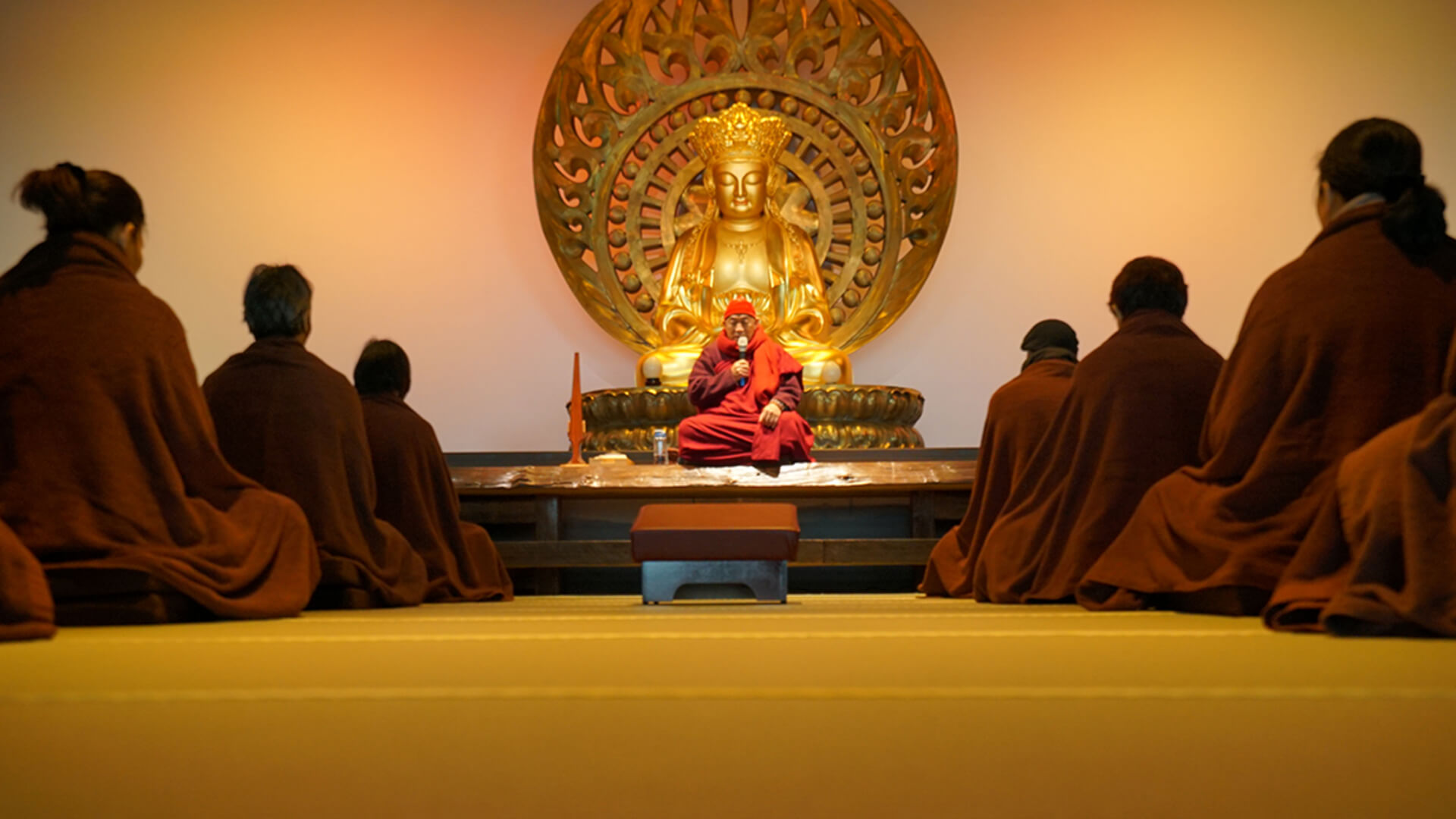
Avalokiteśvara Bodhisattva and Dharma Master Hsin Tao
Once in Taiwan, Yang finally made it to go to school as he had forever wished for. A close friend was converted to the belief of Guan Yin, the Mandarin equivalent of Avalokiteśvara Bodhisattva , or Lokesvara for short, and would share stories about the Guan Yin ever so often. Whenever the name Guan Yin was mentioned, an endearment in referencing the name as ‘Niang-Niang’ was the norm and the endearment’s affinity to the word ‘mother’ both semantically as well as etymologically would strike a chord in Yang subtly yet persistently. The psychological compensation for the loss of his own mother since 4 would bring tears that couldn’t be stopped when he listened to the religious stories of Guan Yin Niang-Niang time and again.
While his status remained a military personnel and was living in the barracks, a military M.D. would share stories of how Guan Yin became a monastic, saved lives, and attained enlightenment. Yang was so inspired that he believed he wanted exactly that and nothing else. Already in his young age, he pledged a solemn vow to learn the way of Guan Yin, namely liberation by virtue of compassion. The first ever Buddhist scripture Yang received in life also happened to be the “Universal Door”(Avalokitesvara-vikurvana-nirdesah), the 25th chapter of the Lotus sutra, also known as the Guan Yin scripture.
Veganism is a tall order and Li soon gave up to let Yang go solo, and the latter pressed on. Ever so gradually, Yang became increasingly determined to pursue the Buddha’s way. And, out of the blue one day, he wanted to imitate the practice of some Burmese monks by having verses of Buddhism tattooed onto his body. A 15-y-o sent about just that and tattooed “I shall never rest until the attainment of the perfect enlightenment” onto his left arm, and “Realizing one’s Buddha nature as the supreme offering to Guan Yin” on the right arm, and “Liberating sentient beings by entering the Tathagatagarbha” onto his abdomen, and the Buddhist symbol 卍 as a reversed svástika on the back of both his hands as well as on his chest … To administer the tattooing without the help of anesthesia, we can easily imagine what an agonizingly painful undertaking it must have been to finish what got started. The story also goes a long way to show how determined Yang already was in his desire to go the distance in the way of Guan Yin.
Yang left his army life behind at the age of twenty, and started his job-hopping years. His best pal Li Fong-Chun passed away when he was twenty-four, and the agony of loss was also a lesson about impermanence and suffering. The very next year, at 25, and by choice of a date that coincided with the day Guan Yin took the vow and became a monastic, Yang pledged a Buddhist vow and had his head clean-shaven as part of the ordination. The secular Yang was then no more, and reborn was a monastic who was to become the founding abbot of the Ling Jiou Mountain and its Wu Sheng Monastery, Dharma Master Hsin Tao.
Throughout the years that followed, Master Hsin Tao carried on his ascetic practice and followed the examples of both Mahakasappa and Milarepa. The master went for meditations in cemeteries, in solitude, long-term fasting, among other ascetic practices. And when the enlightenment dawned on him, it was the sunshine piercing layers of clouds and Master Hsin Tao embarked on the journey of the Guan Yin way after completing that of the Arhat. In the year of 1983 and on the day Guan Yin attained enlightenment, the Wu Sheng Monastery of the Ling Jiou Mountain was officially opened.
Dharma Master Hsin Tao was quoted as saying that ‘I was very little when my mother left me and I became an orphan early on. But I have always had special feelings for my mother. After I became a monastic I have been close to the Avalokiteśvara Bodhisattva,The Dharma I study and practice is the way and doctrine of Guan Yin.
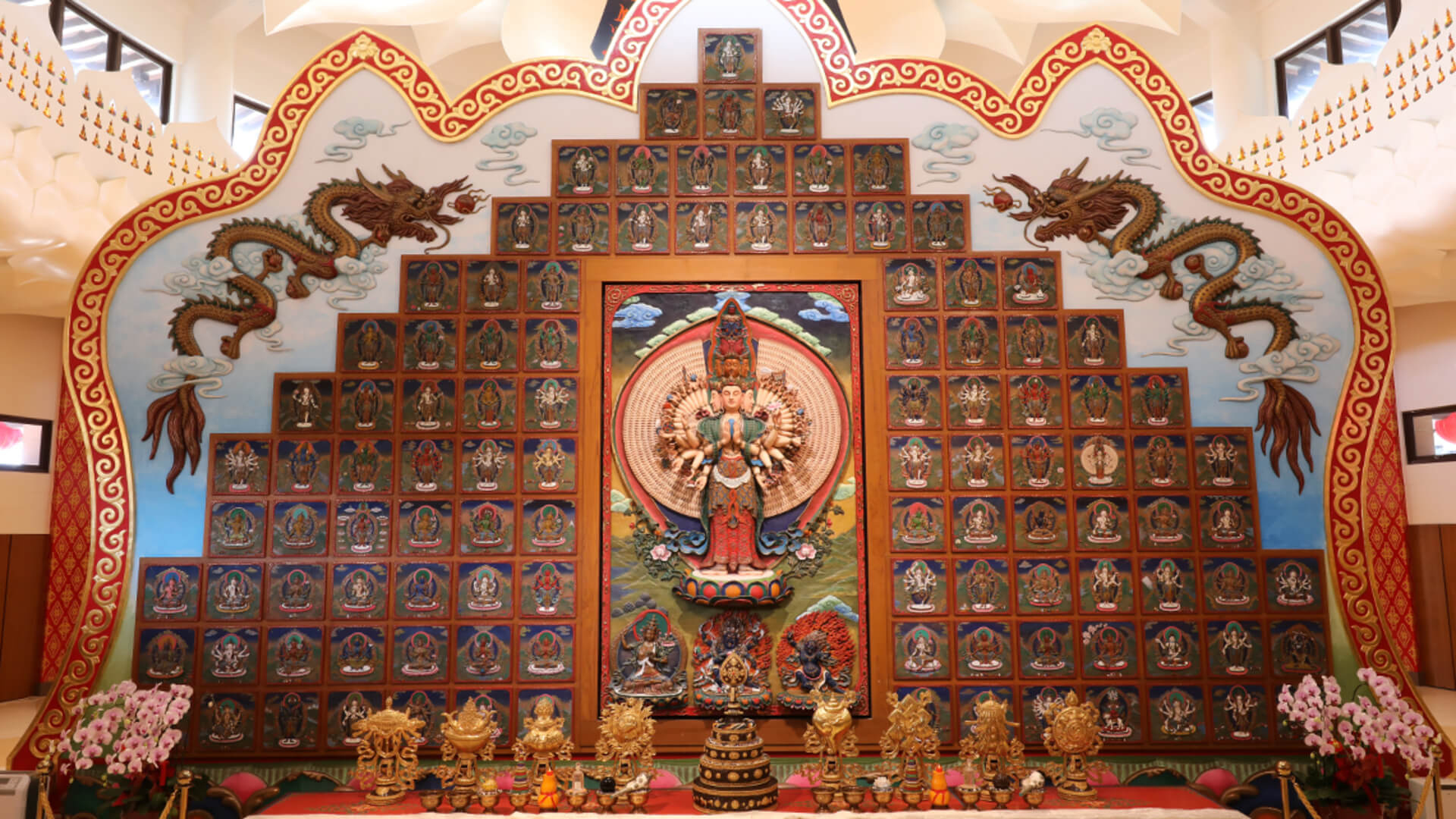
Ling Jiou Mountain and the 108 Lokesvaras
Dubbing himself as a humble servant of Guan Yin, Dharma Master did not realize that the 108 Lokesvaras had the origin in Nepal. By sheer coincidence, a picture of the 108 Lokesvaras was brought to the attention of the Master’s, and what followed over time was a long way of persistent research work involving scholars and experts. It finally led to the realization that the 108 Lokesvaras originated from the Jana Bahal, the Seto Machhendranath (White Guan Yin) Temple, in Nepal. Panels of their representation of the images in bronze bas-relief were plastered for insertion onto the facade of the walls surrounding the main hall.
As the research was underway, the Master’s disciples also busied themselves with combing the Tripitaka of both the Mahayana and the Vajrayana traditions in search of more relevant entries and information about the 108 Lokesvaras. Random findings did turn up eventually and the Da Huayen Temple of Taiwan published pictures of two Thang-ga paintings that differ from styles commonly associated with either the Vajrayana or the Mahayana Buddhist art, but relate to the Nepali style. Cross-referenced with other findings discovered in field studies on-site in Nepal, the origin of the 108 Lokesvaras began to render itself increasingly evident.
Dharma Master Hsin Tao said that there is indeed just one Guan Yin, but what is with the 108 Lokesvaras? It’s all a way to amplify the virtue and merit of Guan Yin’s four ‘boundless states/Brahma Abodes’(benevolence, compassion, joy, equanimity) who is perfectly capable of various manifestations. But there is only one Guan Yin. At the Seto Machhendranath Temple in Nepal , there are 108 Lokesvaras as different manifestations of Guan Yin, all individually distinctive from the next in shape and posture, as well as in their names and characteristics. The full set of representations can be said of having manifested Guan Yin from an all-seeing perspective that, put differently, embodies the 108 forms of life force that help and save lives, that eradicate all sufferings, and that irrigate our hearts with the blessings of the Dharma.
“All these manifestations of Guan Yin boil down to the essence of compassion, which goes to say that the 108 Lokesvaras are 108 different ways of displaying the strengths of compassion. Put succinctly, one is to highlight the essence of the origin, while the other is to illustrate the limitless capabilities. In the case of the former, Guan Yin neither arises nor ceases. In the case of the latter, however, Guan Yin manifests herself in 84,000 ways to correspond to and eradicate the 84,000 kinds of miseries that sentient beings suffer from”, said Master Hsin Tao, “People usually lack in a sense of security, never sure who to turn to for the cyclic Karma and who’d be the ultimate savior for liberation. My studied opinion based on what I’ve learned from the Buddha’s teachings is that Guan Yin is the one who can help and save you by tracking to spot the cyclic Karma before it strikes. And Guan Yin is the savior in the nick of time to relieve you from the miseries. Such experiences of timely help and relief accumulate to form a solid base of confidence that fortifies over time to become a faith that does not wear or tear. Thus accordingly, the general populace can have the best possible security with Guan Yin to rely on even in the worst scenarios. It’s almost like ‘home free’ in a figure of speech. I therefore often recommend Guan Yin to people for them to rely on for a sense of security.”
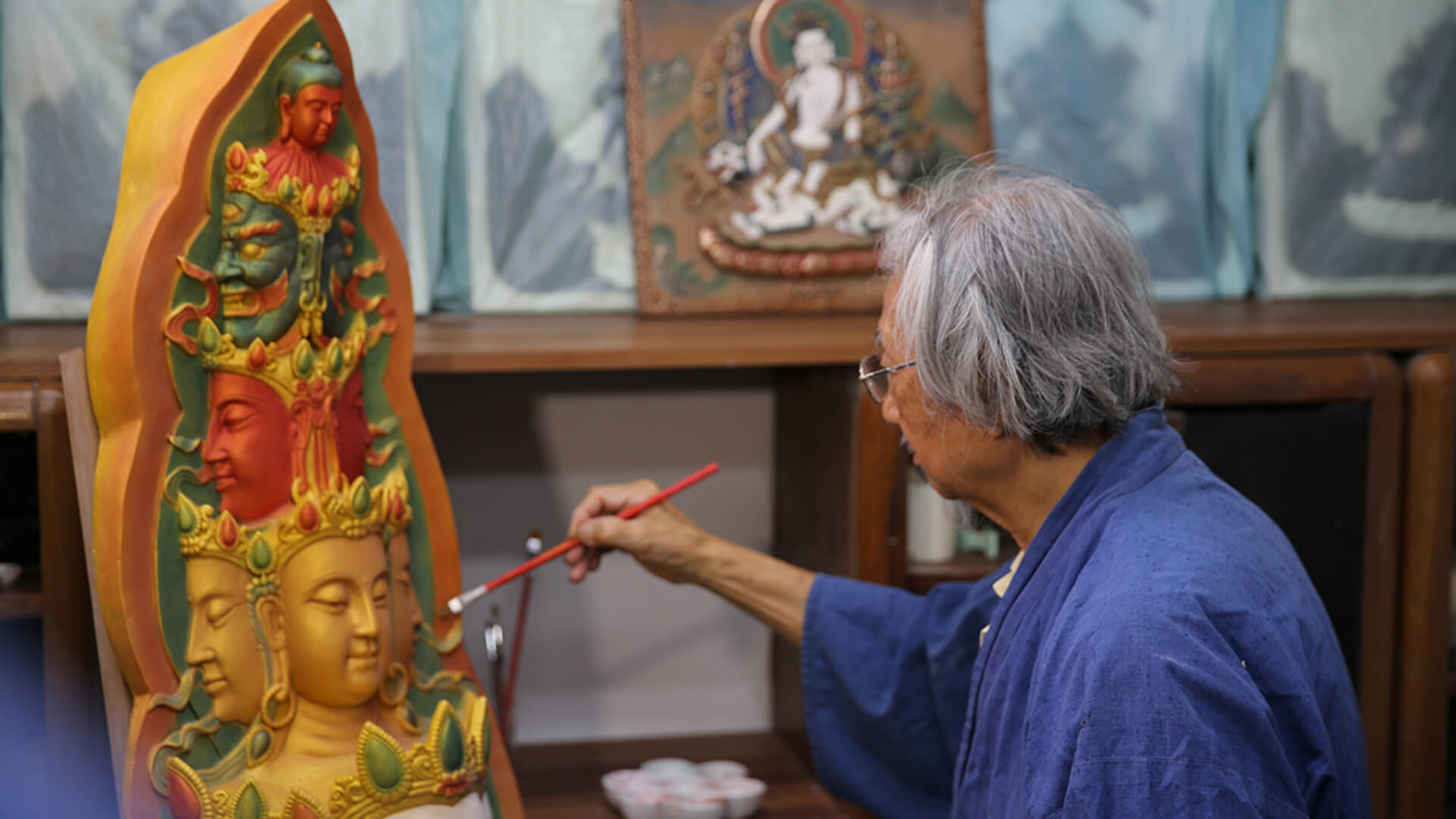
The 108 Lokesvaras - Revitalization and Inheritance
The Ling Jiou Mountain celebrates its faith in Guan Yin as the core of its very foundation, which it vows to carry on unfailingly for the inheritance for future generations. Maestro of sculpture, LIN Jian-Cheng, and famed Thang-ga artist Kun-Shan Che-Pei Lama, were then approached for the commission of reproducing the 108 Lokesvaras from the originals in Nepal. 6 years passed and two complete sets of replicas in their unique renditions have been masterfully achieved -- one set in Thang-ga portraits, the other set in sculptures of red copper with color paint. The red copper set has been given a special place at the LJM Sheng-Shan Temple, and a pictorial album featuring all 108 Lokesvaras has been published.
The sacred icons of the 108 Lokesvaras are the 108 variations that manifest the liberation via compassion of Avalokiteśvara Bodhisattva’s and they are invaluable in terms of artistry and craftsmanship that display both the kind of mastery and the degree of sophistication. On open display for worshiping, they are furthermore blessings to be had and enjoyed because the artistic splendor embodies the wisdom of Guan Yin’s compassion.
“The 108 Lokesvaras can also be viewed as a visualization of the Avalokitesvara-vikurvana-nirdesah (Chapter 25 ‘the Universal Door’ of the Heart Sutra) for revealation to more people to learn from Guan Yin and achieve wholesome Karma.” Ling Jiou Mountain maintains a list of plans of publishing and relevant events revolving around the theme of the 108 Lokesvaras and these are all meant to facilitate access to learning from the wisdom and wholesome Karma represented through the iconography of the 108 Lokesvaras. In other words, the great variety of channels and vehicles to learn about the proper mindfulness for advancement in the direction of enlightenment are in essence ways of ease and convenience for sentient beings with their different habits and preferences to approach and appreciate the depths and widths of the Buddha’s wisdom.”
In the suburbs of Kathmandu and not far away from the Temple of the 108 Lokesvaras is the Milarepa Meditation Center as Ling Jiou Mountain’s on-ground presence in Nepal. On the premises of the meditation center is the famous site of the cave where Milarepa the Sage conducted his ascetic practice. There is also the spot where one of the most important Mahayana philosophers - Nagarjuna - once preached and taught. LJM constructed the meditation center there to specifically preserve a historic site for its secured inheritance. As such, the LJM meditation center has turned out to be a welcomed monastery that blends in well with the many temples and stupas nearby, all in one way or another represent a sacred site of historic significance. Buddhist practitioners and visitors alike can easily access a proper venue to ready their heart and mind in preparations for advancement in the way of the Buddha.
Dharma Master Hsin Tao points out that Nepal is situated in the Himalayan Mountains and has been the place with many sacred sites since ancient times, as are the nearby Tibet, Buhtan, etc., where many saints and sages were born. People subscribe to the notion as recorded in the Canon that the spots qualify as sacred or even holy where enlightenment and nirvana were and can be achieved, where sufferings stopped and can end, and where great compassion was and can resurface. I therefore thought that there ought to be a place for those who practice solitary meditation and those who prefer meditation on sacred sites for additional inspiration towards gaining insight from the Dharma.
“What I wish for is that people will practice Buddhism by starting with the heart. And now in Nepal, we at the LJM are blessed to be in the position to offer a place for solitary practice, for Chan meditation, as well as for a journey of pilgrimage. We are happy with these positive opportunities to bring our services further.”
Starting from scratches with little knowledge about the 108 Lokesvaras, almost a decade passed and the Ling Jiou Mountain today happily presents two full sets of them with monumental value of both religious, historic, and artistic significance. One set each in Thang-ga paintings and in red copper sculptures with color paint respectvely. Dharma Master Hsin Tao wishes for the general public to know that those fortunate to visit and appreciate the exquisite art work on site, as well as those thumbing through pages of the exhibit catalog and related LJM publications for artistic details, are best advised to make efforts of appreciating the limitless great compassion of Guan Yin and learn about the power of her vow of compassion.


Practicing the Conduct of Guan Yin’s Vow: The Global Family for Love and Peace
Dharma Master Hsin Tao founded the Ling Jiou Mountain (LJM) Monastery in 1984 and commenced his globe-trotting journeys in 1994 to promote interfaith dialogues on the basis of friendship and understanding under the banner of ‘caring about the world with love and compassion’. And even before the launch of the Museum of World Religions (MWR) in 2001 for a span of more than 2 decades, the idea of ‘one global family for all life communities’ has become a long-term LJM dedication to promote a world ideally summed up as ‘a global family for love and peace’. And to take further what the MWR strives for - respect/tolerance/love - Dharma Master Hsin Tao and the LJM Buddhist Society have been focusing on yet another precious gift: the University for Life and Peace in the making.
The basis of and the land lot for the planned University for Life and Peace is in Yangon, Myanmar. The plan includes a comprehensive education system to cultivate seeds of peace with interfaith training. The plan also provides for the adoption of orphans, improvement of local, non-toxic agriculture, alongside charity, medicine, and education to promote a harmonious symbiosis among the overwhelming ethnic diversity that is the local reality and characteristic. A hall to honor ethnic culture and religion is also included in the overall plan for the University for Life and Peace to substantially drive home the LJM ideals of ‘Loving the Earth / Loving Peace’.
Dharma Master Hsin Tao said that Myanmar is a place not yet developed and therefore provides for learning and changes. Suppose we manage to pre-empt mega-scale development and all kinds of pollution by instilling work of environmental protection to set up examples to promote ecology elsewhere. Can we possibly entertain the notion and feasibility of creating a hub here in Myanmar for global campaigns to promote sustainability for the Earth? Picture this: in Myanmar and in the hope that it be our center, out from where we promote to ‘Loving the Earth / Loving Peace’.
“Environmental protection cannot be stalled and wait-listed, otherwise the ecology becomes even more endangered with more irrevocable damages inflicted upon it as already is. We cannot afford to slow down but must gain back some time instead. We plan on materializing the University for Life and Peace the way we have been going about ‘Loving the Earth’. And with the University performing as desired, we will have a talent pool big enough to reverse-engineer and rejuvenate our “Loving the Earth” dedication. We hope by then the University can be an efficient catalyst that pools all relevant resources and fabrics of the society to push the “Loving the Earth” campaign to a global movement.”
From the famed quote by Dharma Master Hsin Tao that ‘the world is at peace, when the mind is at peace’ to the campaign of ‘Loving the Earth / Loving Peace’, it perhaps becomes obvious that even within the framework of the Dharma it is essential that we have peace with ourselves, with the others, and with Nature ultimately. The notion is further in sync with what the world goes after for a trend. Dharma Master Hsin Tao and the LJM would appreciate that we sync our efforts to optimize the collective strengths of our same-frequency resonance to benefit the ‘global family for love and peace’.
Meanwhile, let us hope that we re-unite as one in Guan Yin.

